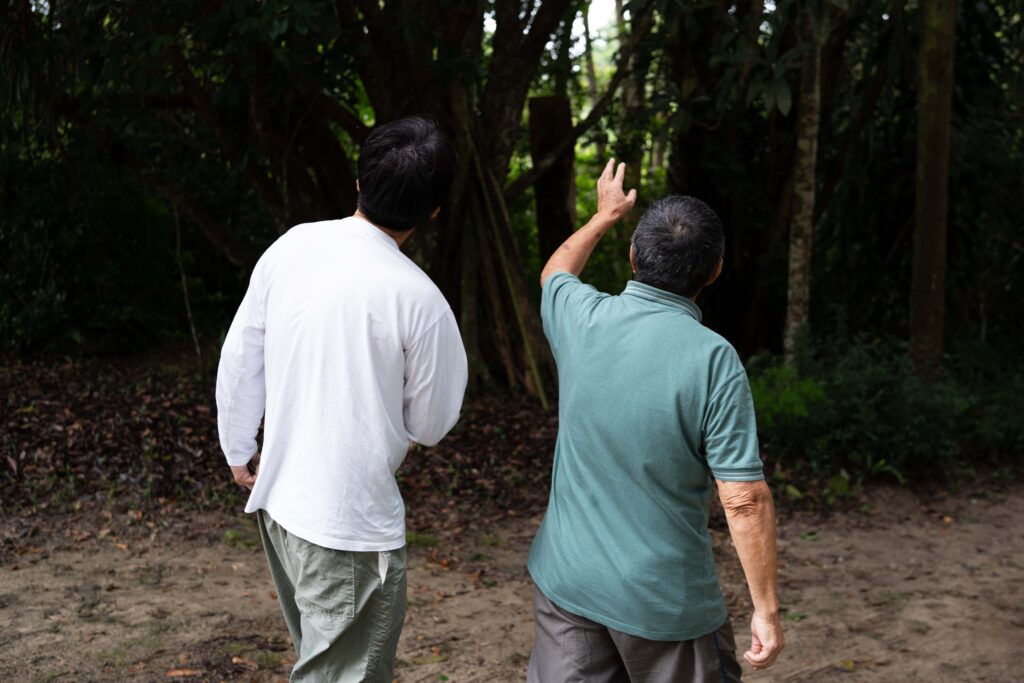
2023年1月11日(水)
ブラジル3日目
Wednesday, January 11, 2023 Brazil day 3
2023 年 1 月 11 日星期三 巴西第三天
今日は朝からサンパウロ郊外の蘭農家さんへ
サンパウロ市内から1時間ほどのモジ・ダス・クルーゼス(Mogi das Cruzes)まで行きました。
This morning we visited an orchid farm on the outskirts of São Paulo.
We went to Mogi das Cruzes, which is about an hour from São Paulo city.
今天早上我们参观了圣保罗郊区的一个兰花农场。
我们去了Mogi das Cruzes,距离圣保罗市大约一个小时车程。
朝ごはんは途中のカフェでテイクアウトしたポンデケージョ(Pão de queijo チーズパンという意味)とコーヒー、
この組み合わせはブラジルの朝ごはんの定番だそう。本場のチーズパンはもちもちで美味しかったです。
For breakfast, We took out Pão de queijo (meaning cheese bread) and coffee from a cafe on the way.
This combination seems to be a staple of Brazilian breakfast. The authentic cheese bread was chewy and delicious.
早餐,我们从路上的一家咖啡馆买了Pão de queijo(意为奶酪面包)和咖啡。
这种组合似乎是巴西早餐的主食。正宗的芝士面包很有嚼劲,很好吃。
モジ・ダス・クルーゼスはサッカー選手 ネイマールの出身地としても知られていますが、世界中からの移民が多く、特に20世紀初頭に日本から来た日系移民の方が多く住んでいる都市だそうです。
Mogi das Cruzes is also known as the birthplace of soccer player Neymar, but it is also a city with many immigrants from all over the world, especially Japanese immigrants who came from Japan in the early 20th century. .
莫吉达斯克鲁兹也被称为足球运动员内马尔的出生地,但它也是一座拥有许多来自世界各地的移民,尤其是20世纪初来自日本的日本移民的城市。 。
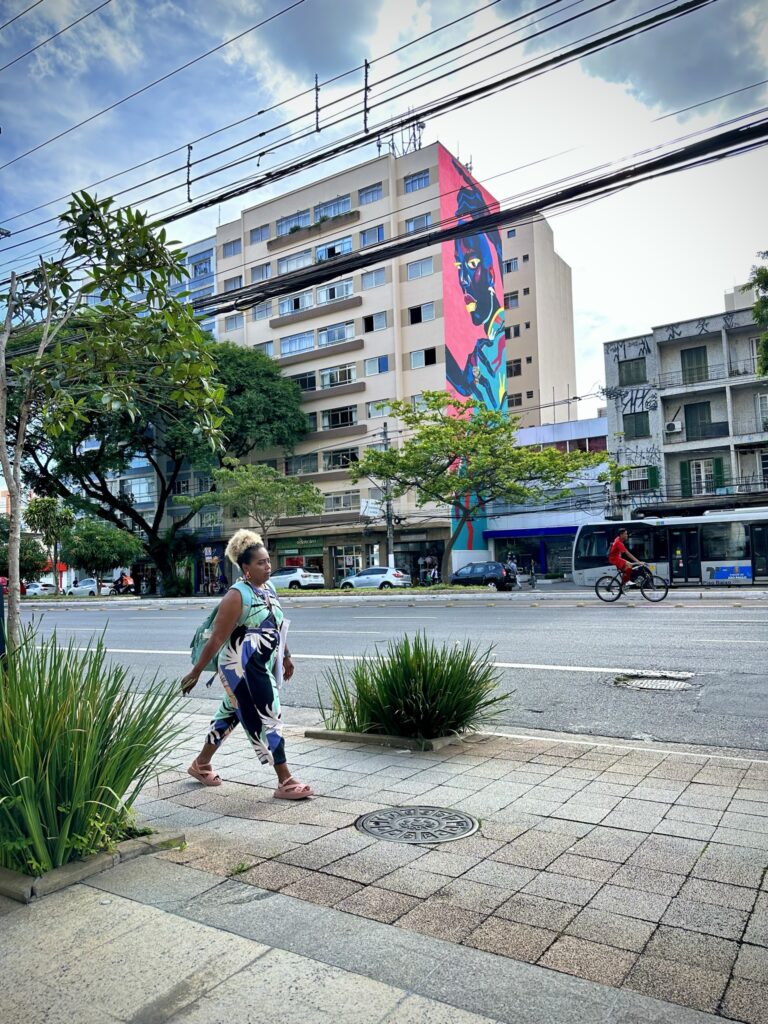
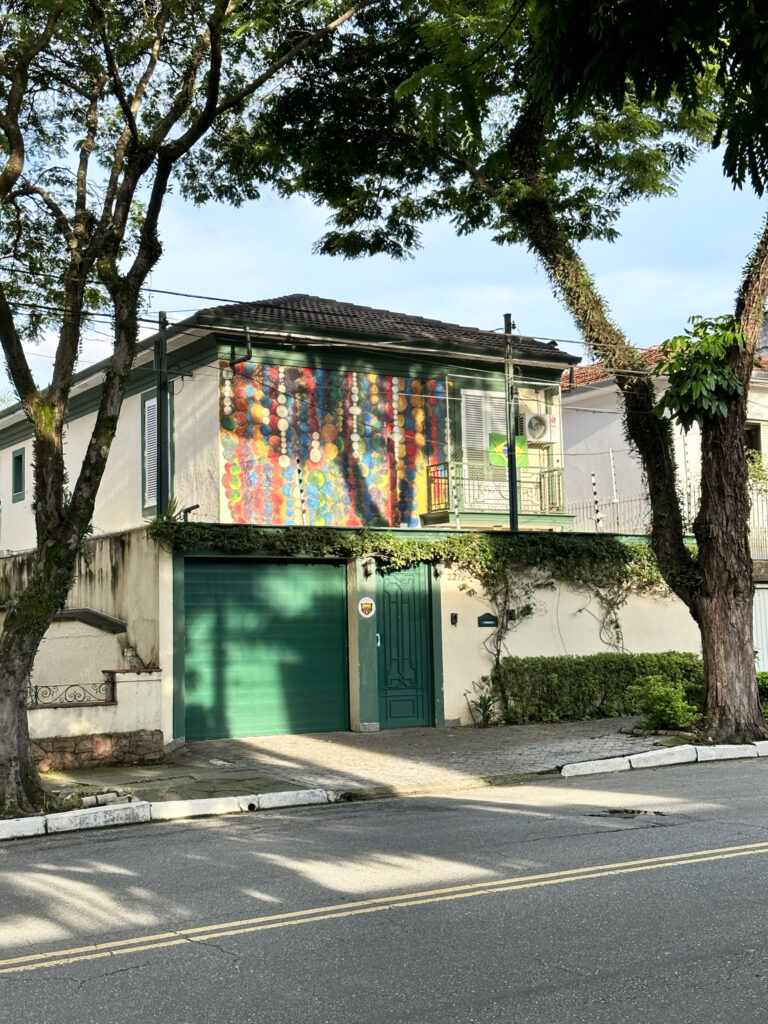
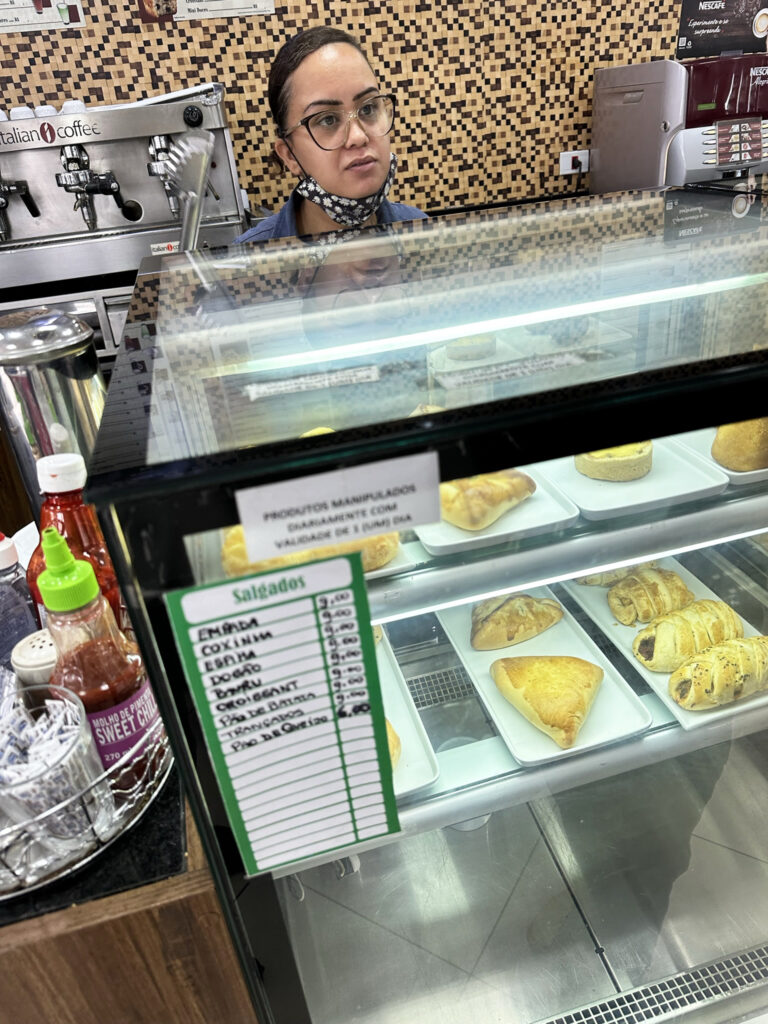
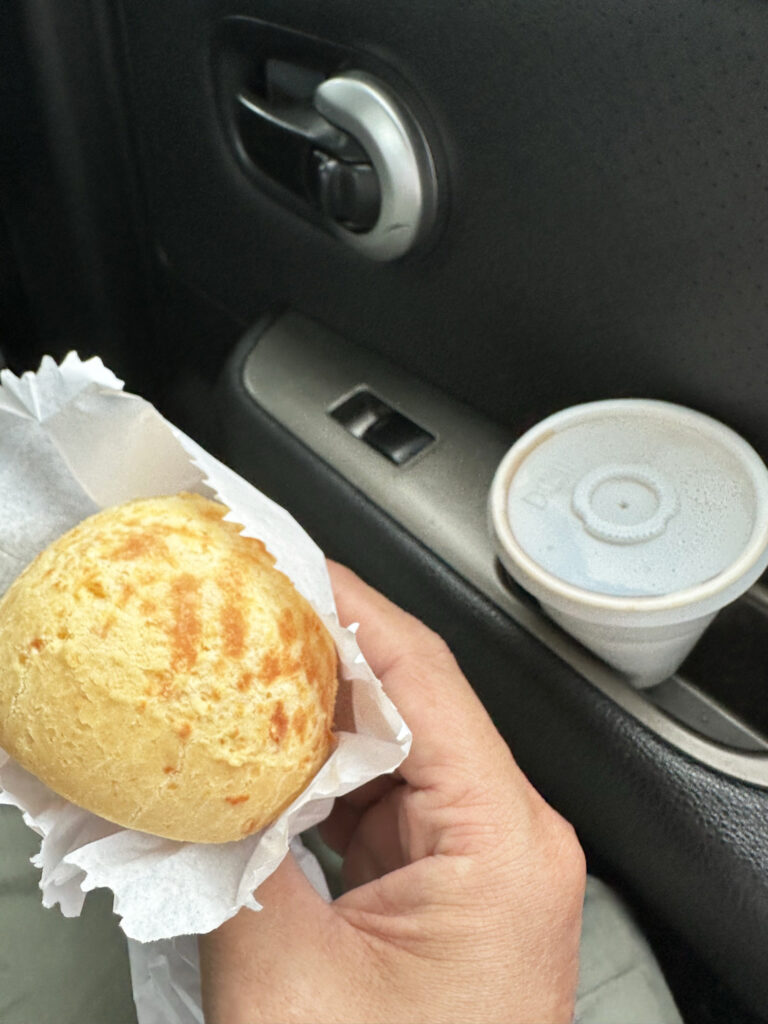

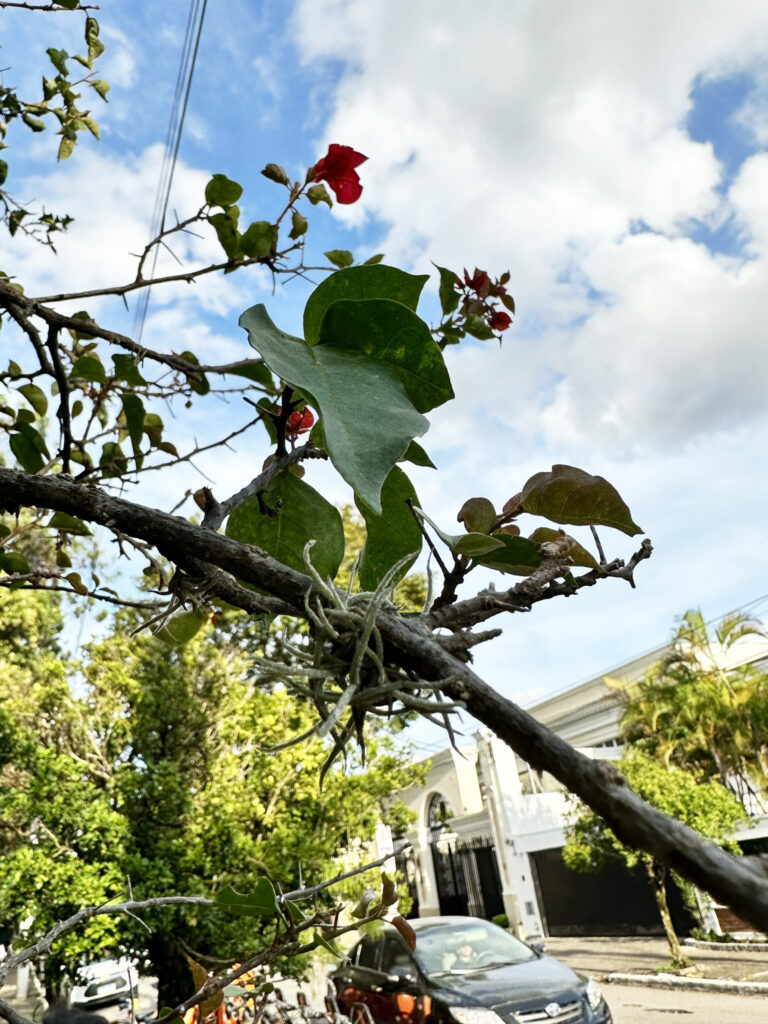
途中の道に多く日本人の名前がついていて、
かつて移民として日本からやってきて この地を開拓していった日本人の方々の存在を直に感じます。
Many of the roads along the way have Japanese names, I could directly feel the presence of the Japanese people who once came from Japan as immigrants and pioneered this area.
沿途很多道路都有日本名字,我能直接感受到曾经作为移民从日本来到这里并开拓这一地区的日本人的存在。
後からわかったのですが、通りの名前になっていたカヤシマリツジさんは 今日訪れたカヤシママスジさん(Sr.Masuji Kayasima)のおじいさまとのこと。
マスジさんは日系三世で、おじいさまが日本からブラジルにやってきたとのことで、歴史を感じます。
I later found out that Tsuji Kayashima, the name of the street, was the grandfather of Sr. Masuji Kayasima, who I visited today.
Mr. Masji is a third-generation Japanese-Brazilian whose grandfather came to Brazil from Japan, so I could feel a sense of history here.
后来我才知道,这条街的名字“辻茅岛”就是我今天拜访的茅岛增二先生的祖父。
Masji先生是第三代日裔巴西人,他的祖父是从日本来到巴西的,所以我在这里感受到了历史感。
マスジさんと奥様(Sra.Laura Kayasima)がたくさんのフルーツや手作りのお菓子などを用意して待っていてくださいました。
Mr. Masji and his wife (Sra.Laura Kayasima) were waiting for us with lots of fruits and homemade sweets.
Masji 先生和他的妻子 (Sra.Laura Kayasima) 拿着很多水果和自制的糖果等着我们。
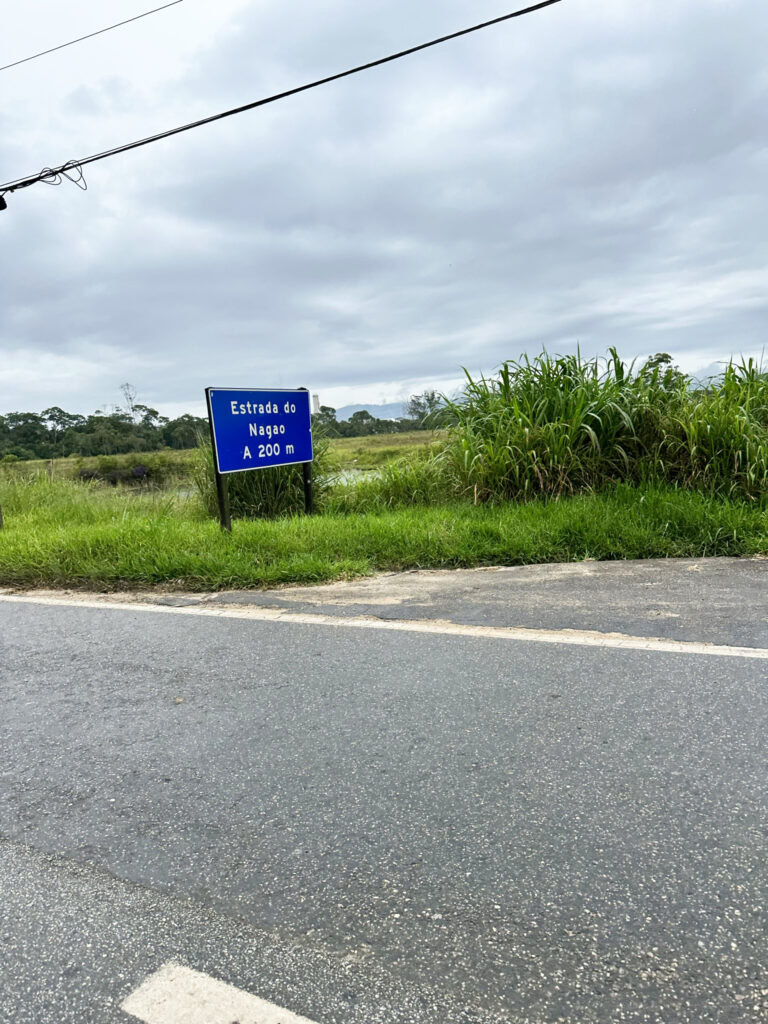
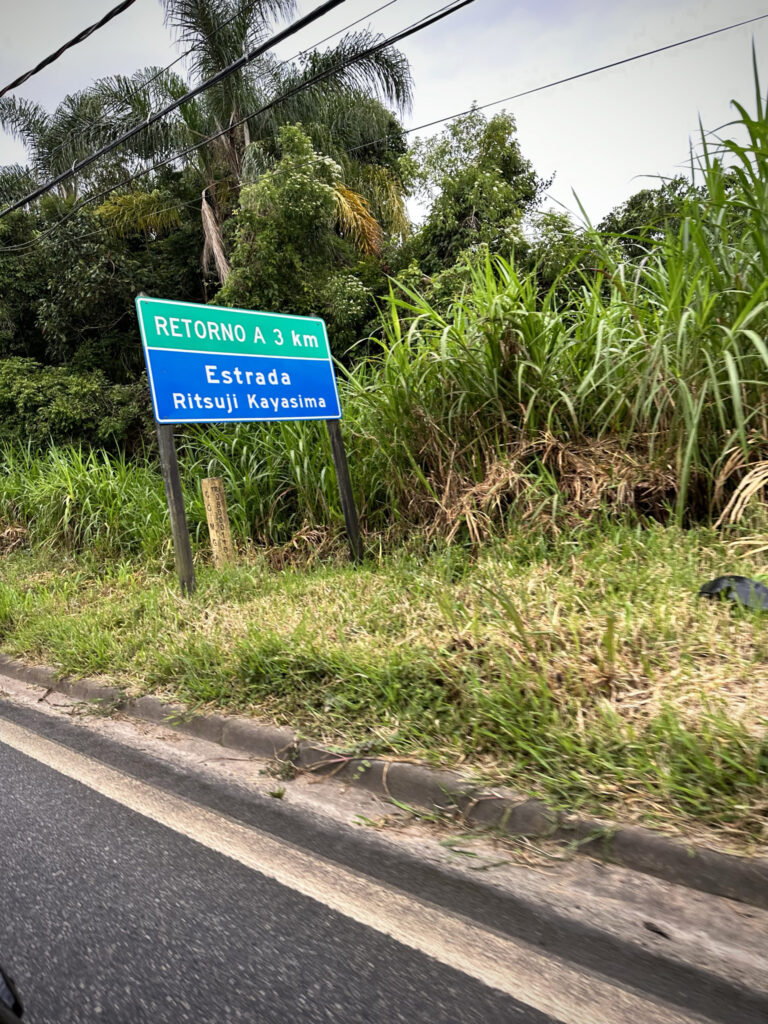
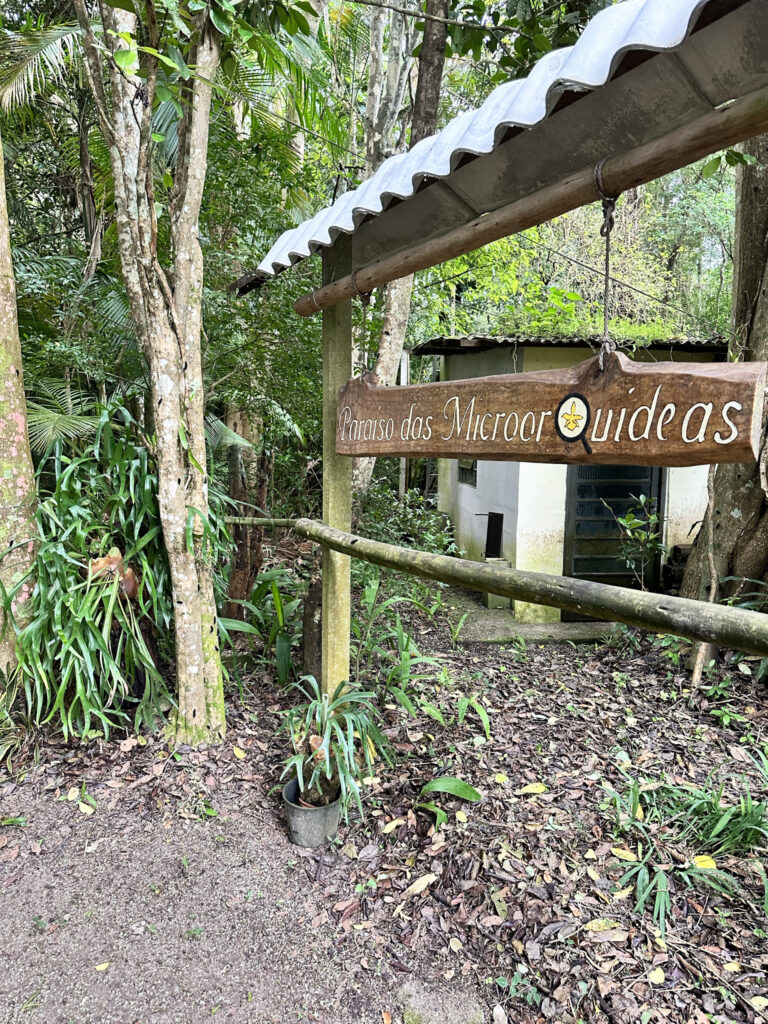
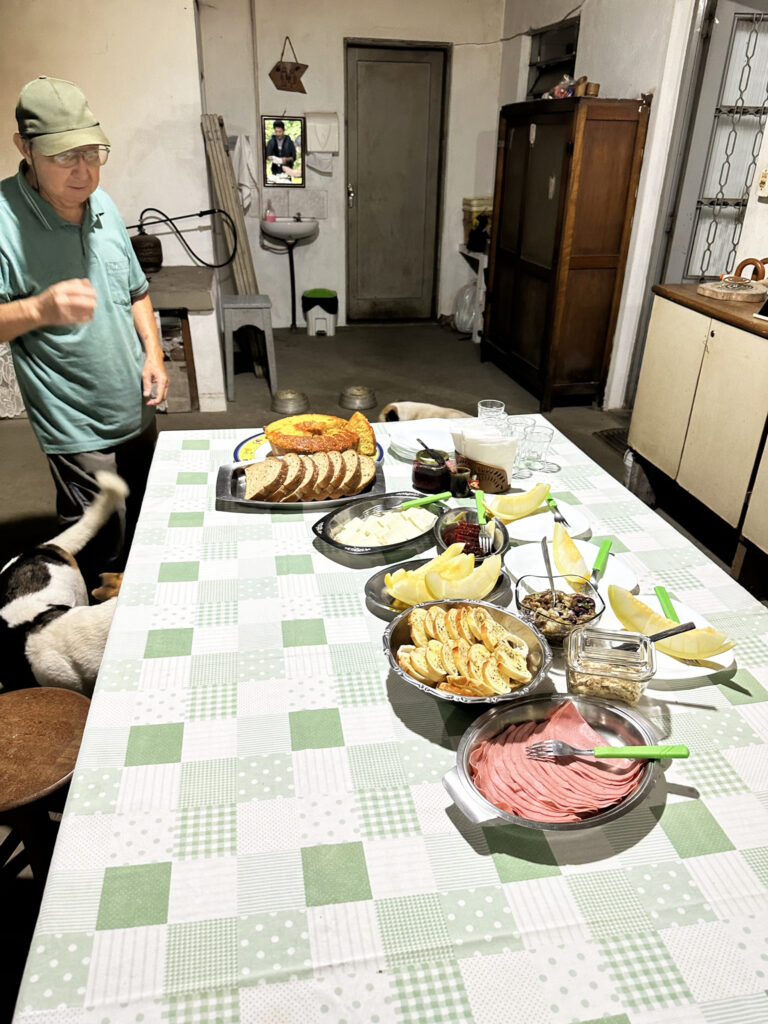
ありがとうございました!
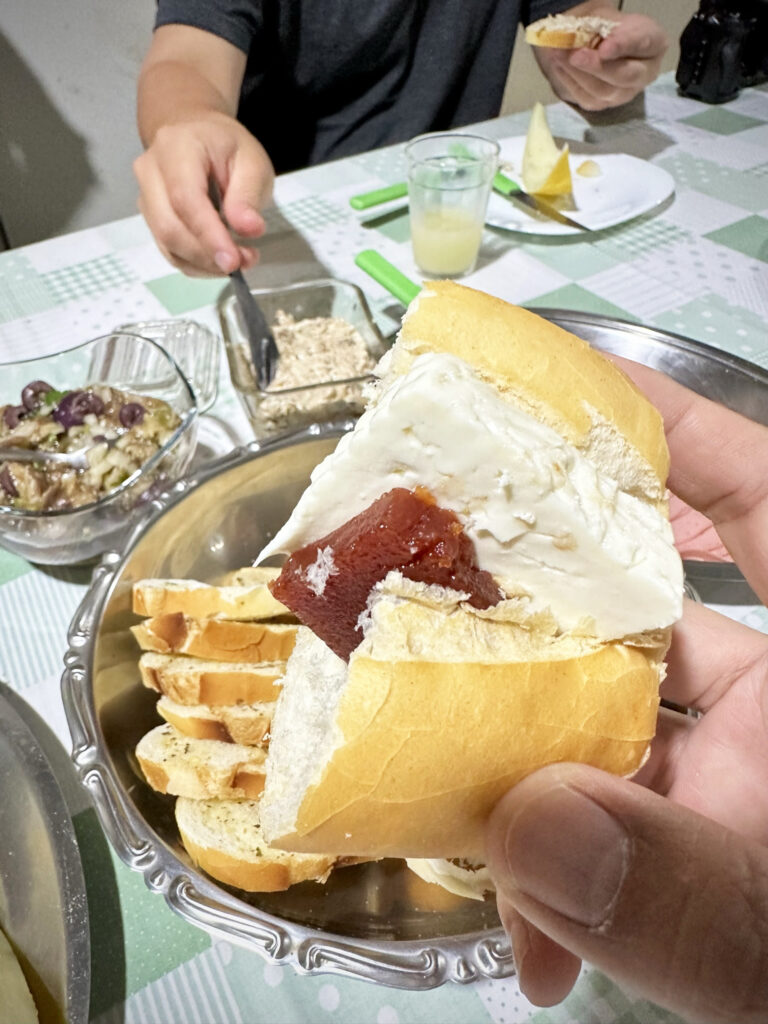
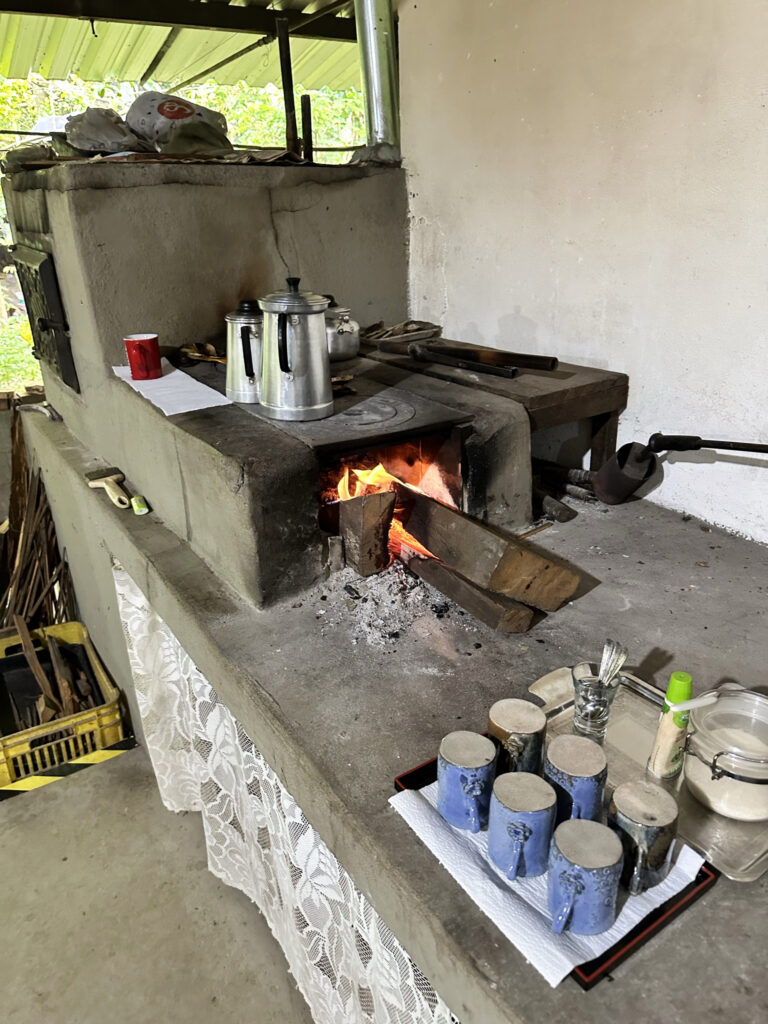
マスジさんの洋ラン園は特に小型種を多く育てていて、裏庭に木や竹で作られた手作りの棚に、小さな着生蘭がたくさん吊られて育成されていました。
敷地の奥の方はほぼ手つかずの原生林のようになっていて、日本ではなかなか見ることのできない自然に樹木に着生した原種の洋蘭やブロメリアをたくさん見ることができました。
Mr. Masji’s orchid garden grow particularly small species.They hung them on handmade shelves made of wood and bamboo in the backyard.
The back part of the site was like an almost untouched virgin forest, and we were able to see many original species of orchids and bromeliads that grow naturally on trees, which are hard to see in Japan.
马斯吉先生的兰花园里种着特别小的品种。他们把它们挂在后院用木头和竹子手工制作的架子上。
场地的后部就像一片几乎未受破坏的原始森林,我们能够看到许多自然生长在树上的兰花和凤梨科植物的原始品种,这在日本很难看到。
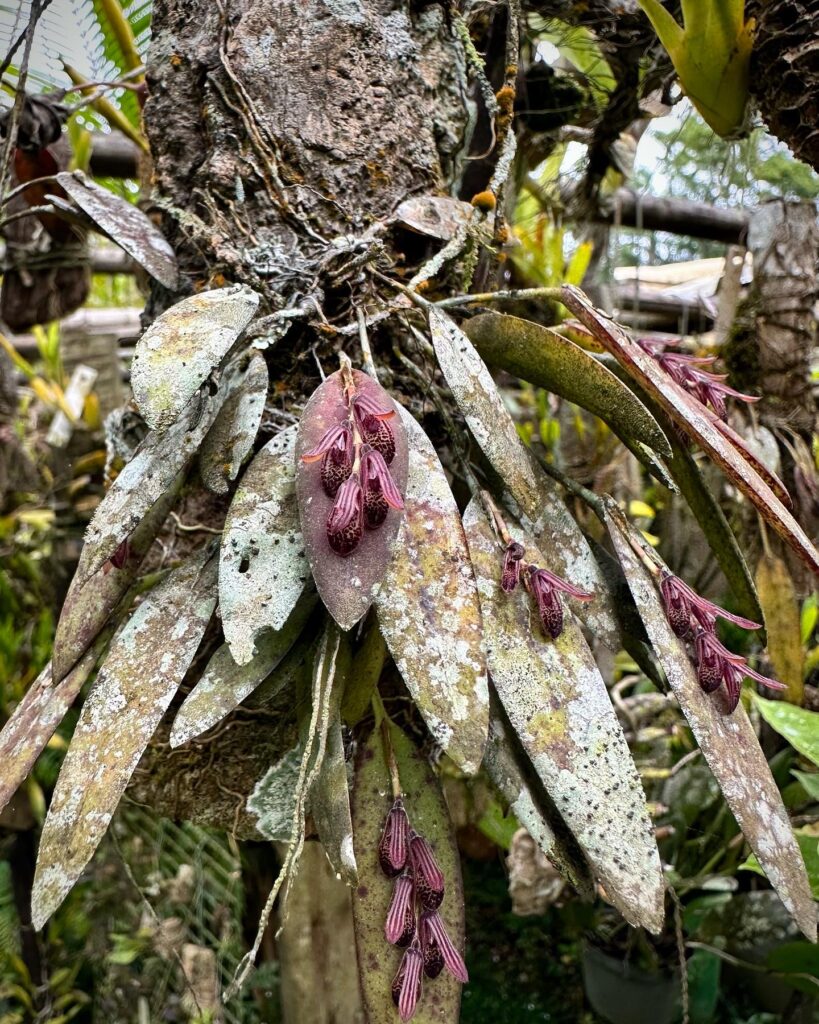
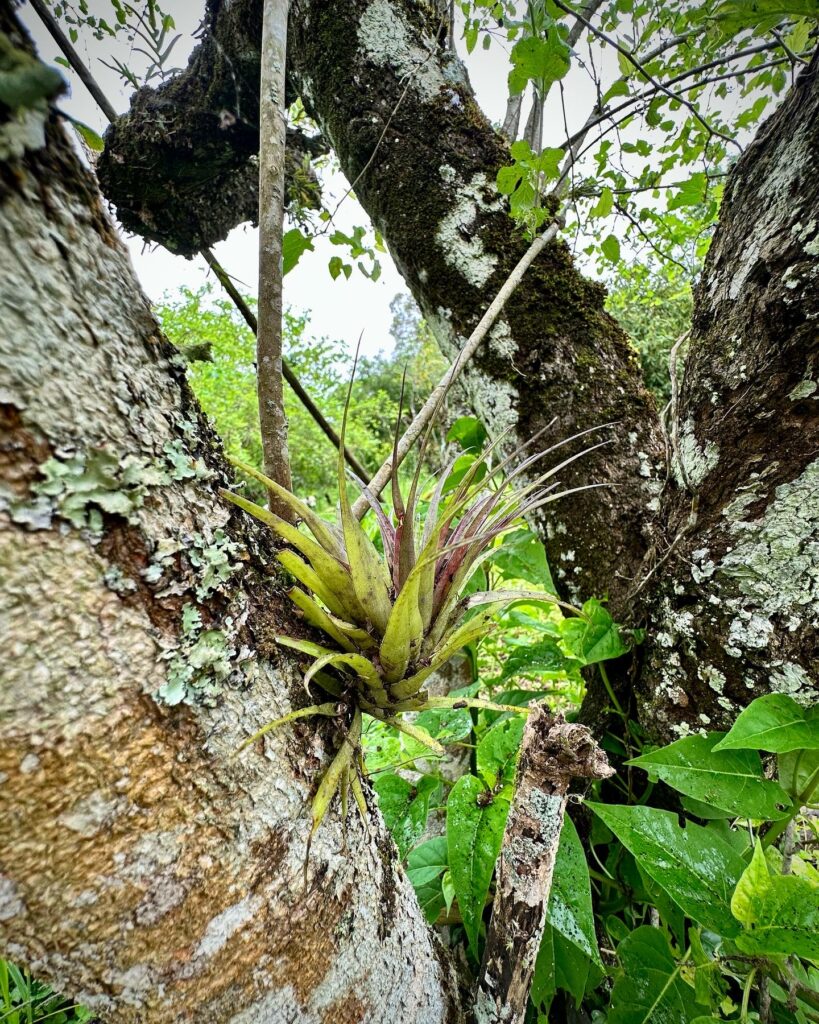
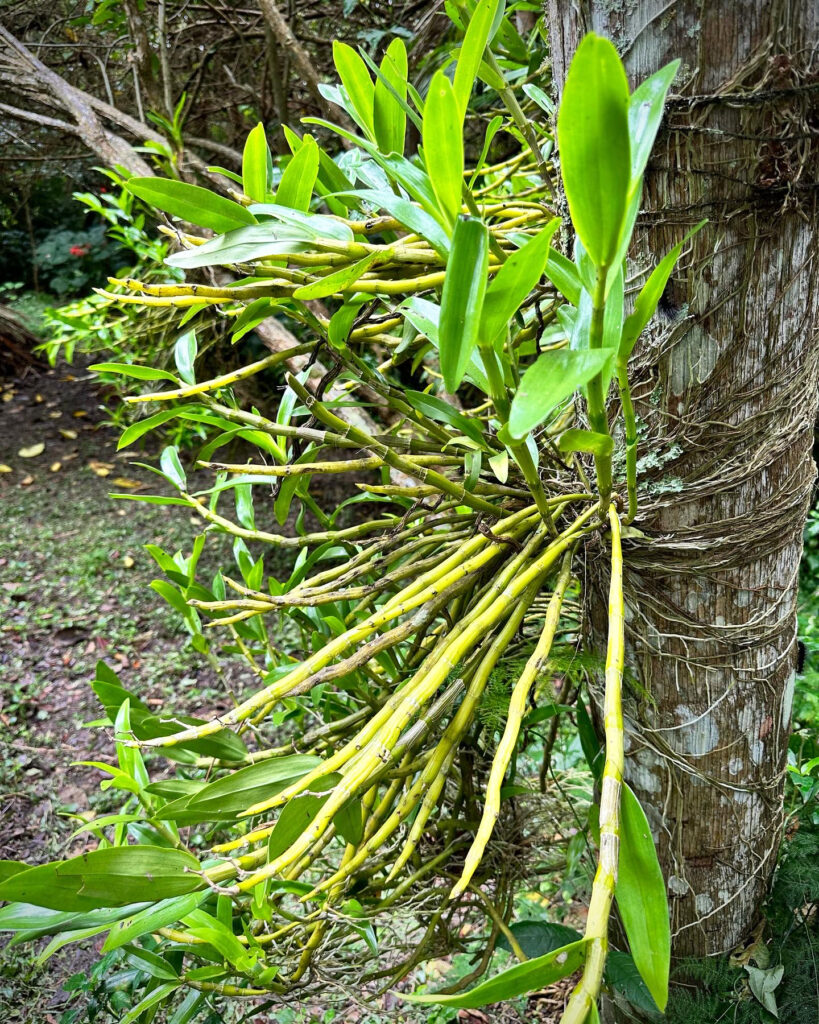
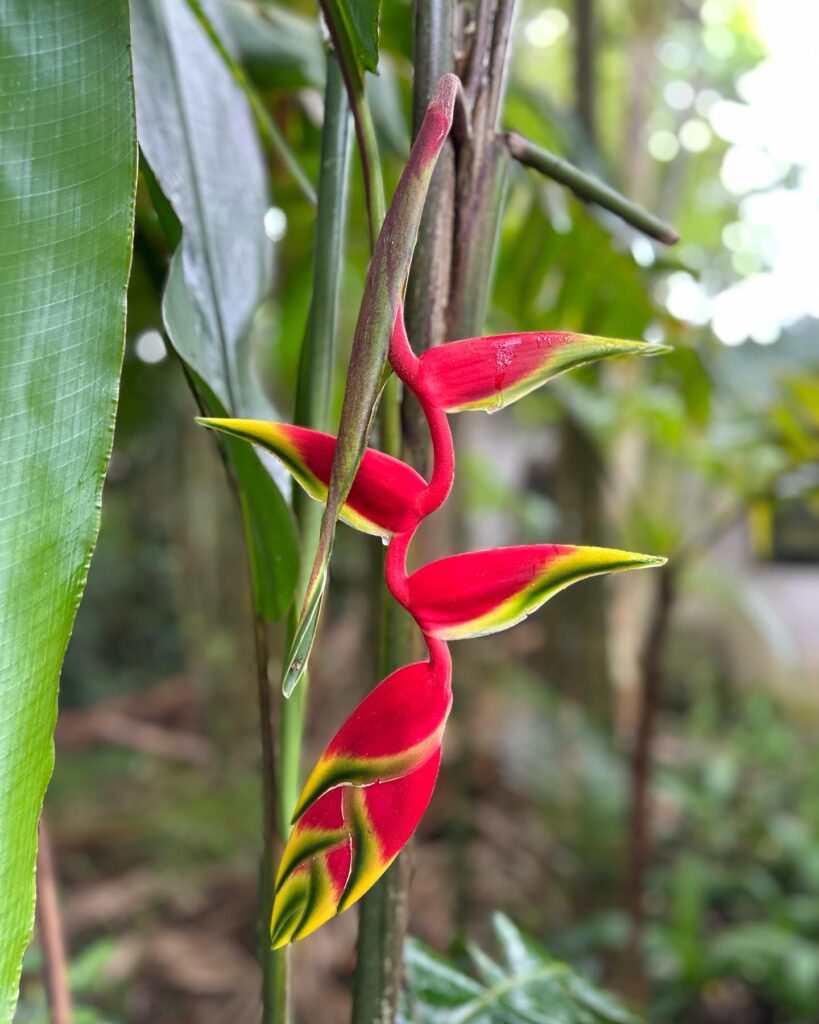
の鮮やかな花
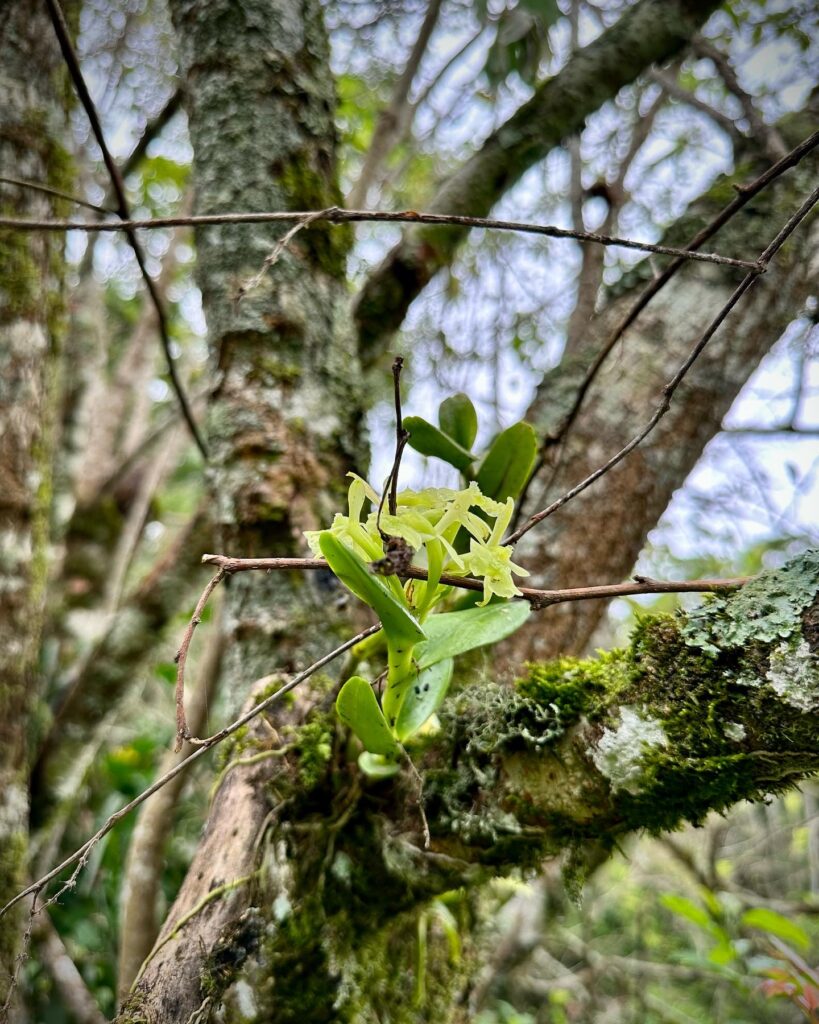
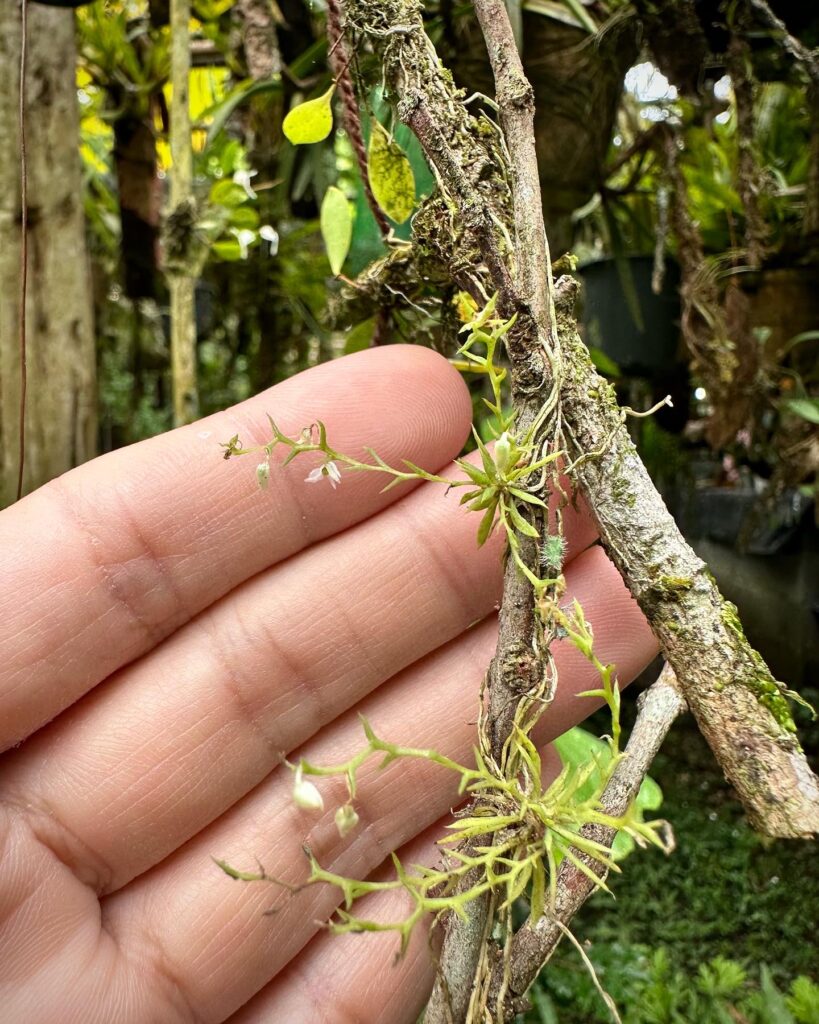
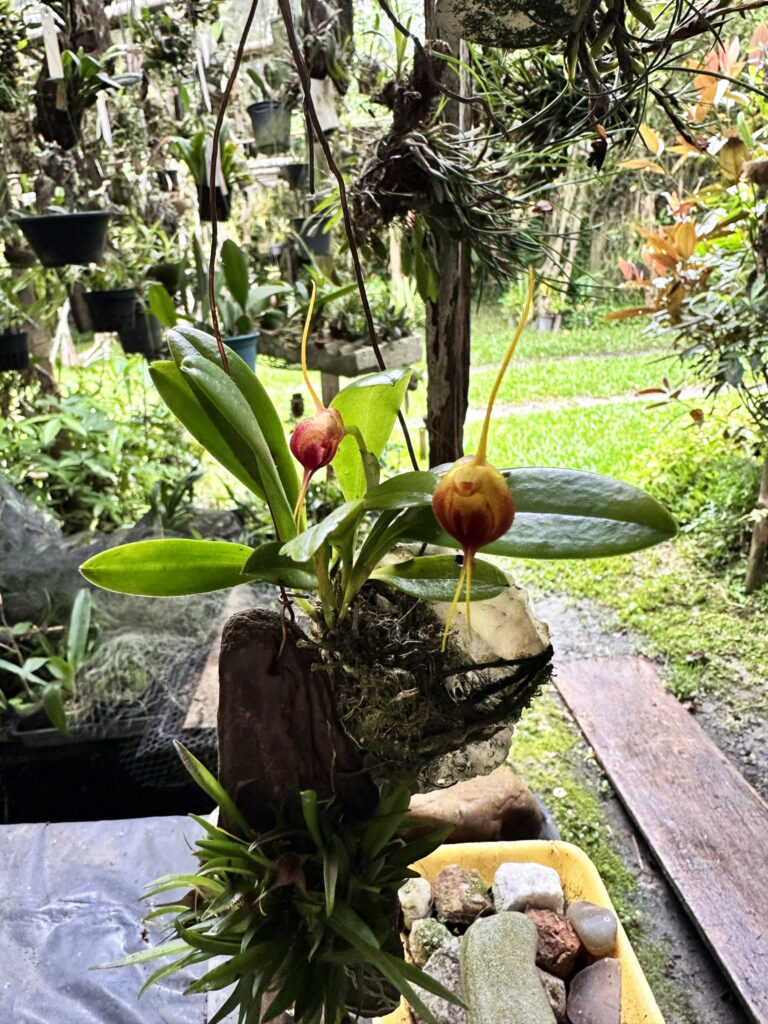
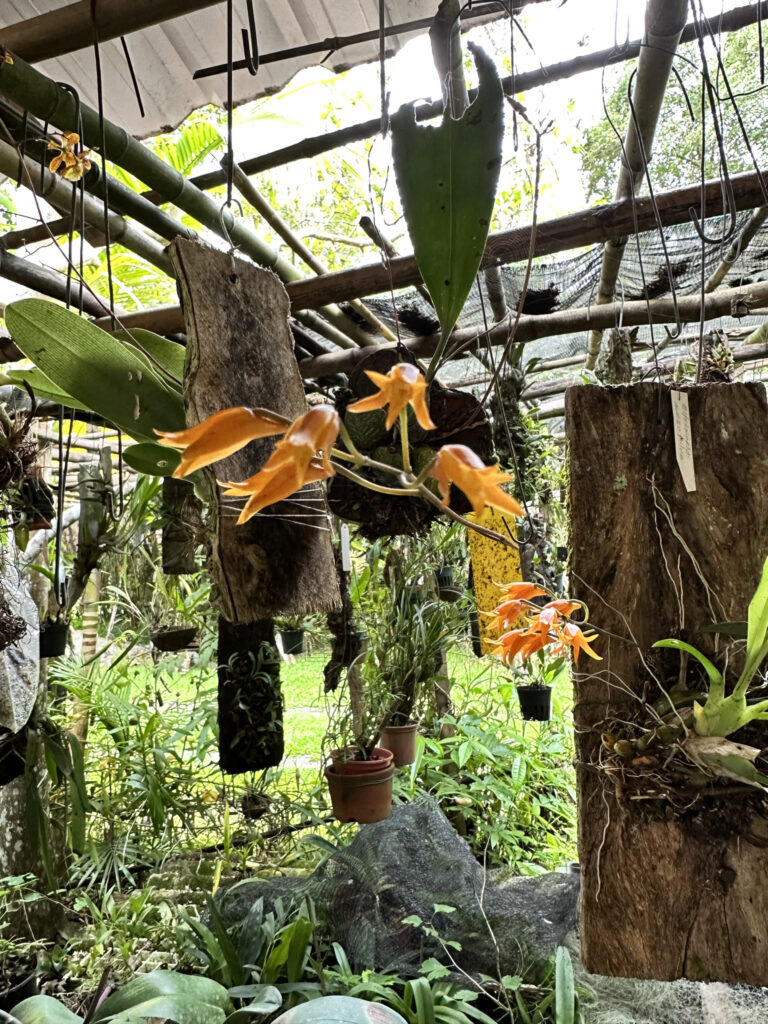
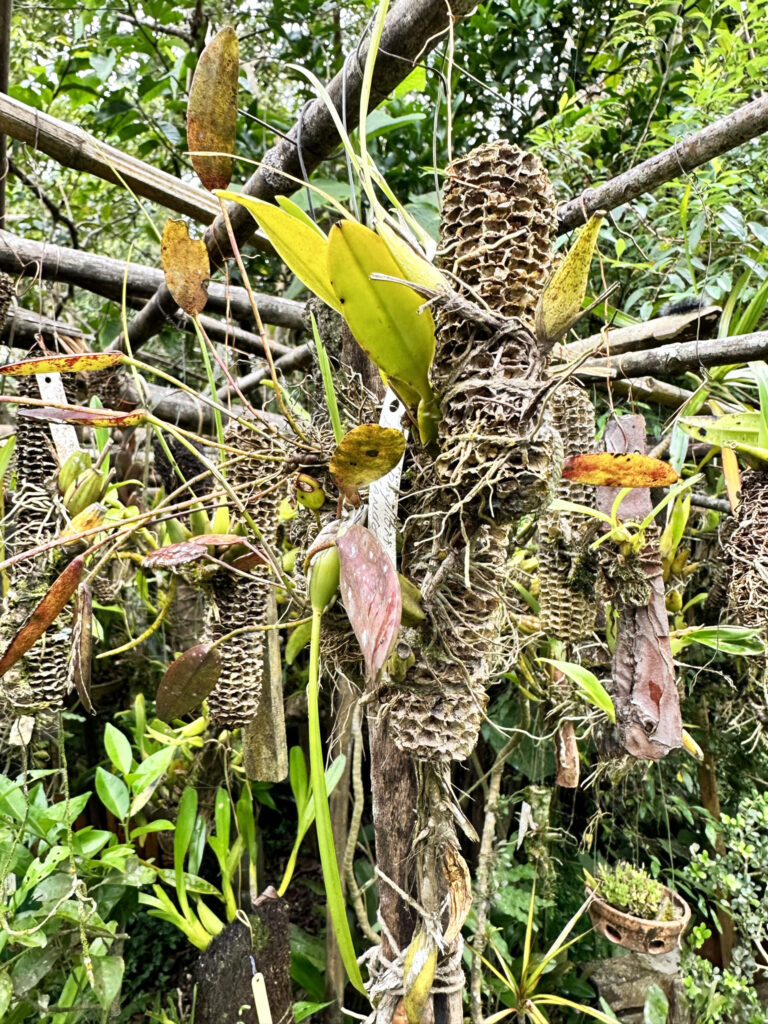
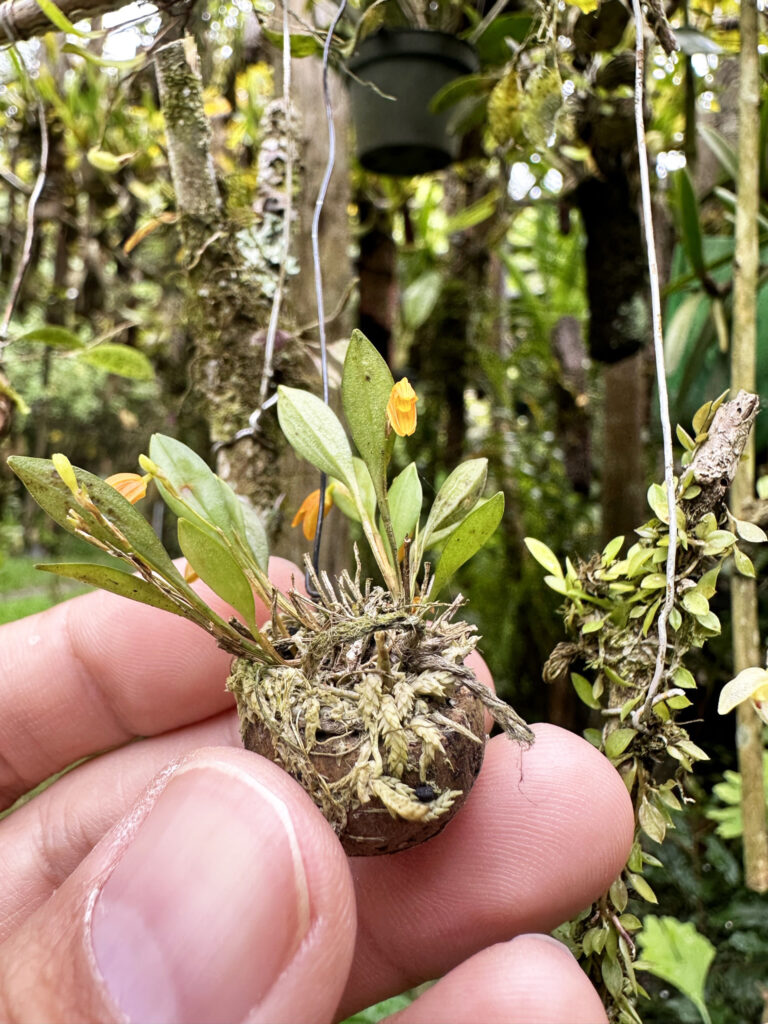
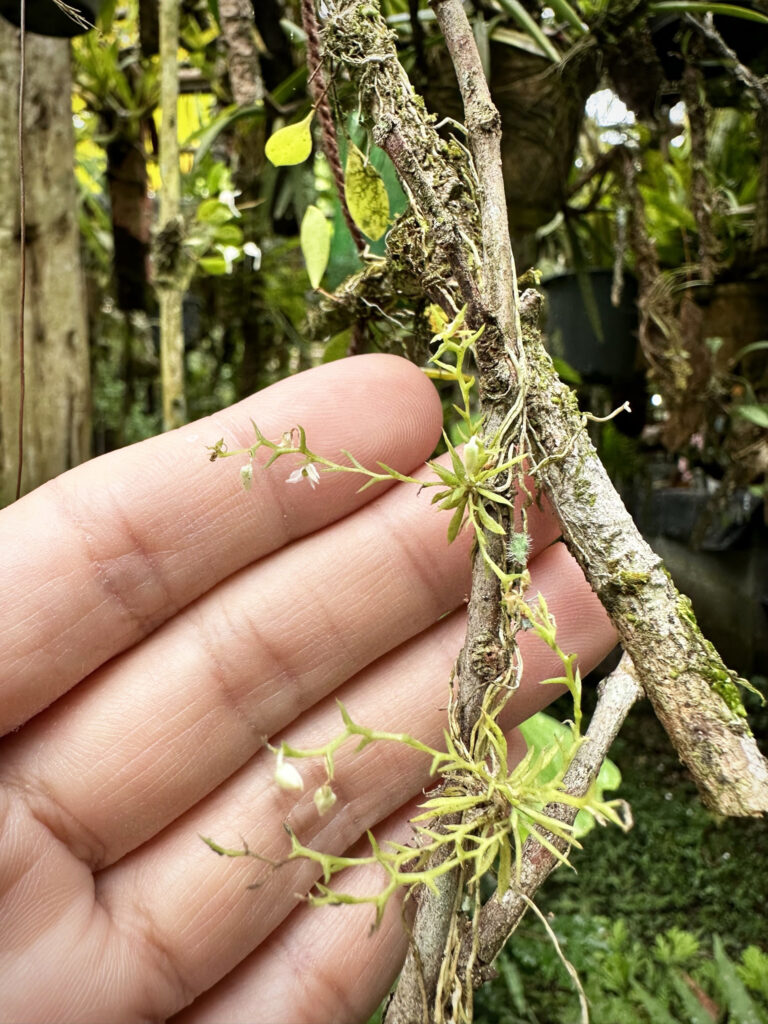
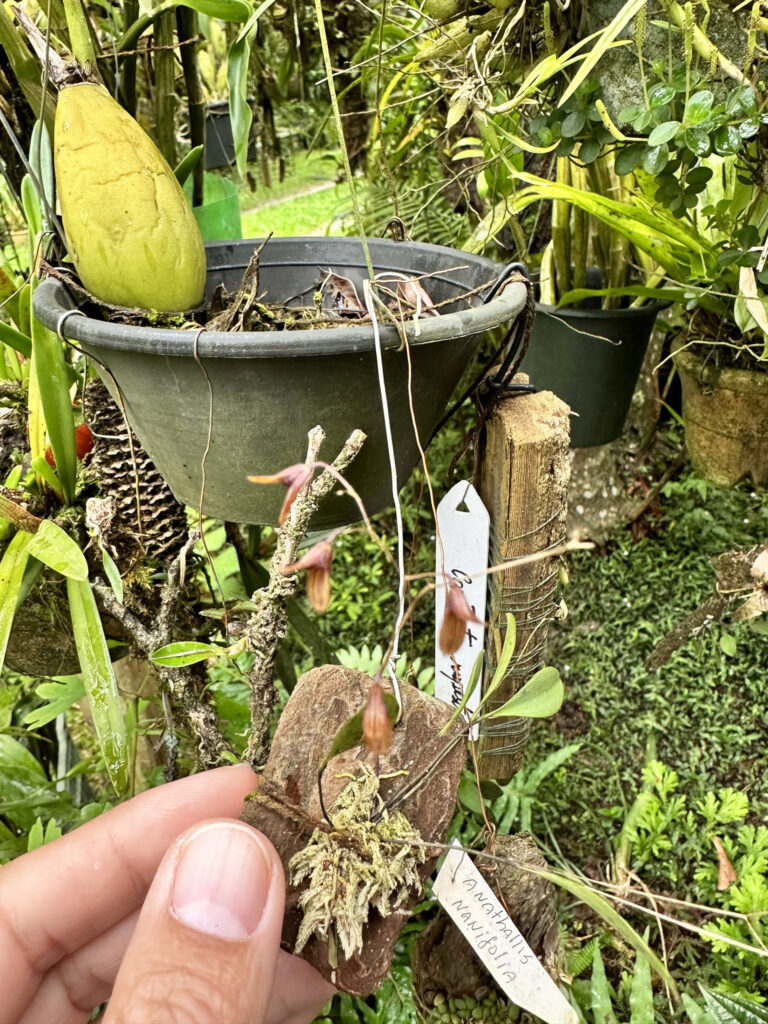
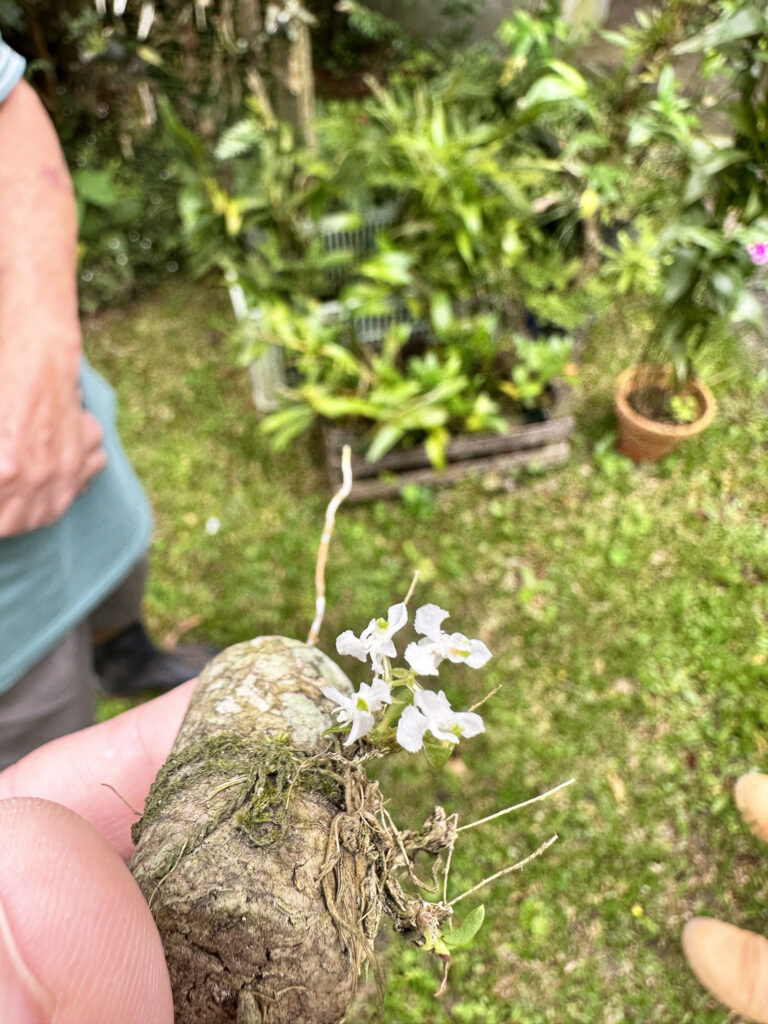
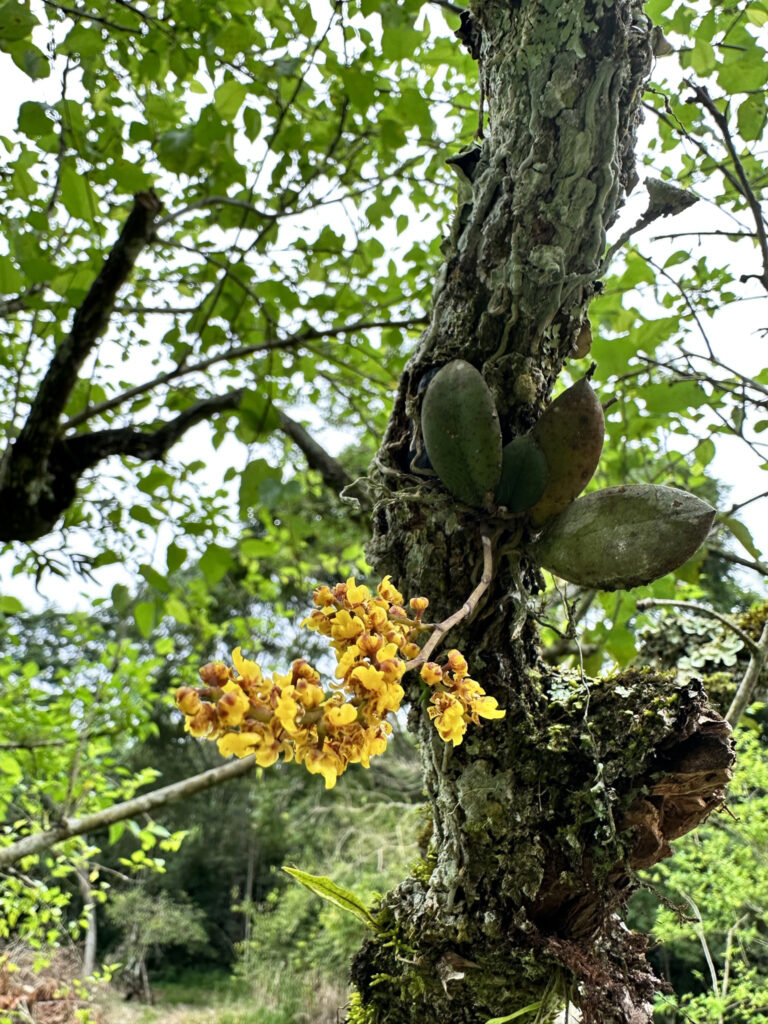
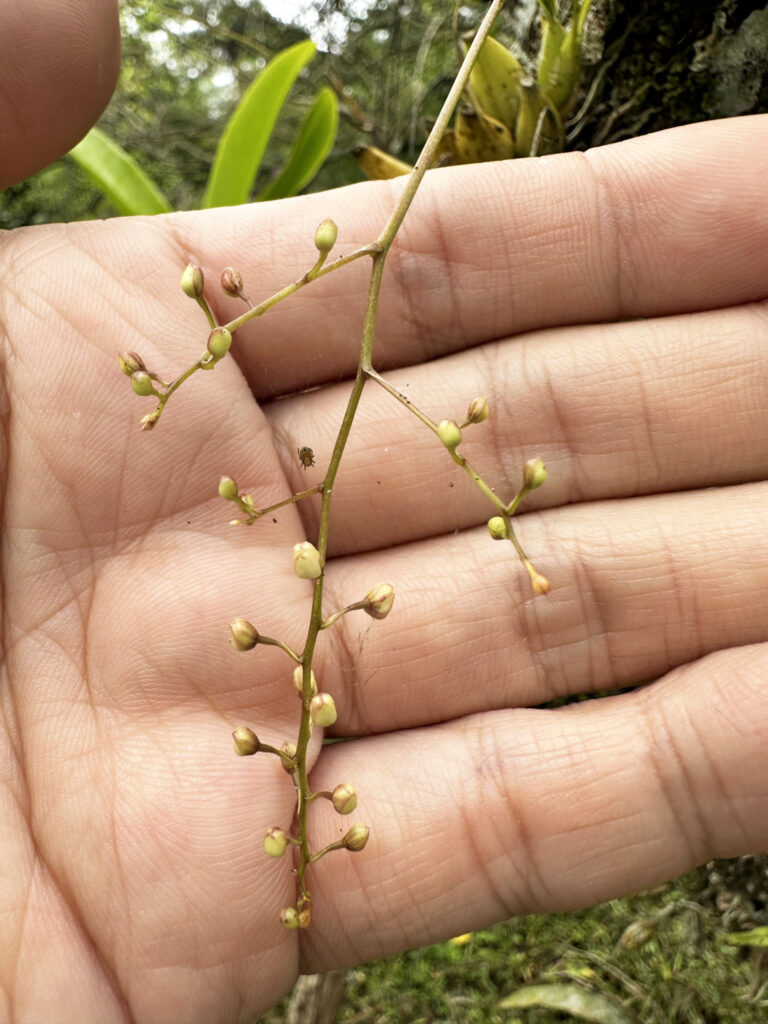
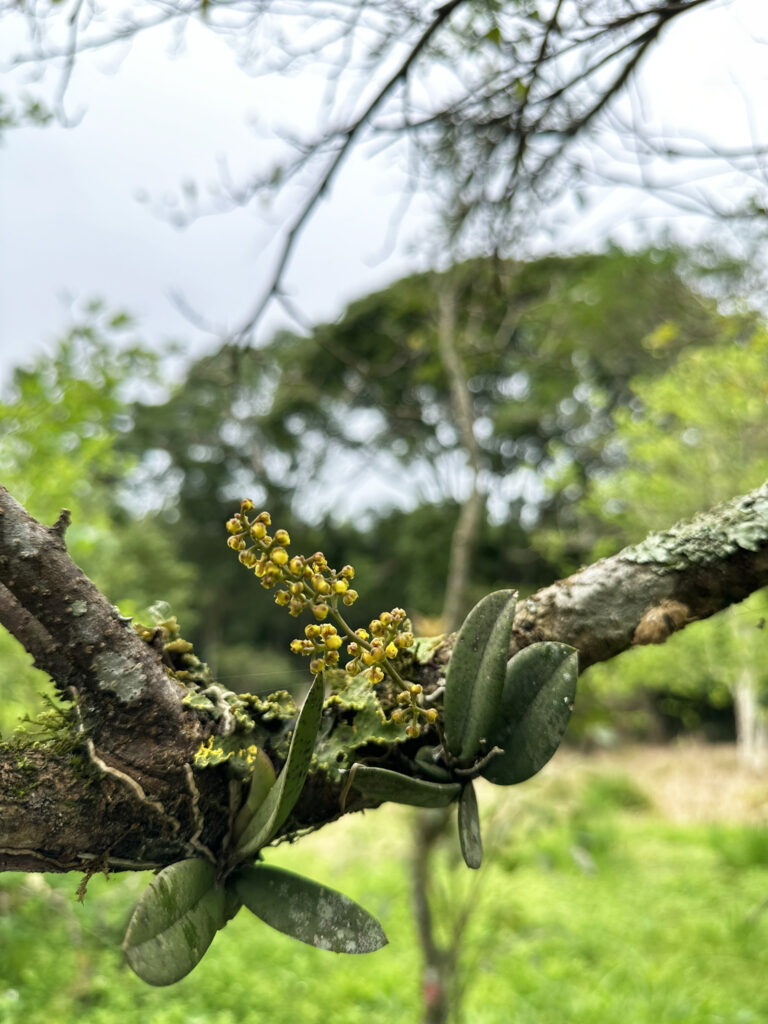
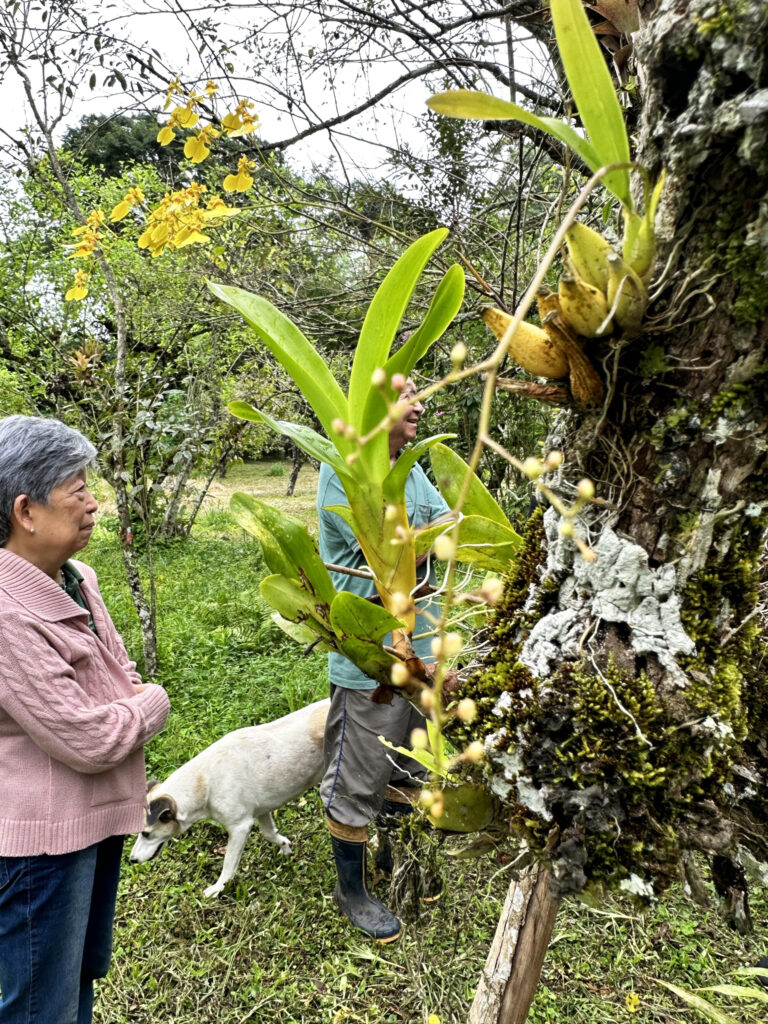
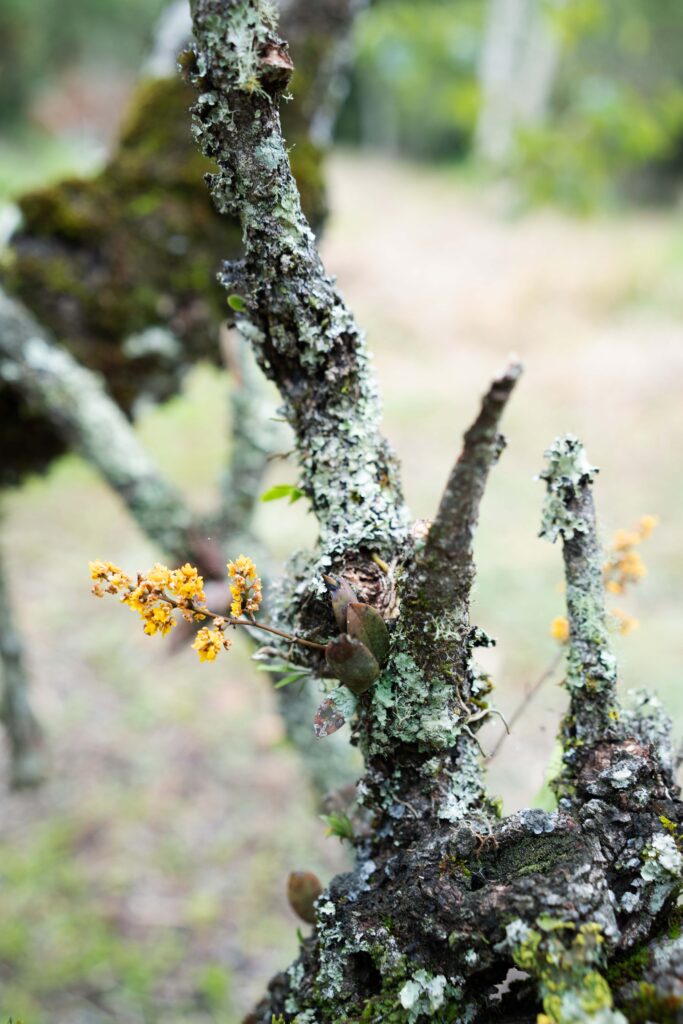
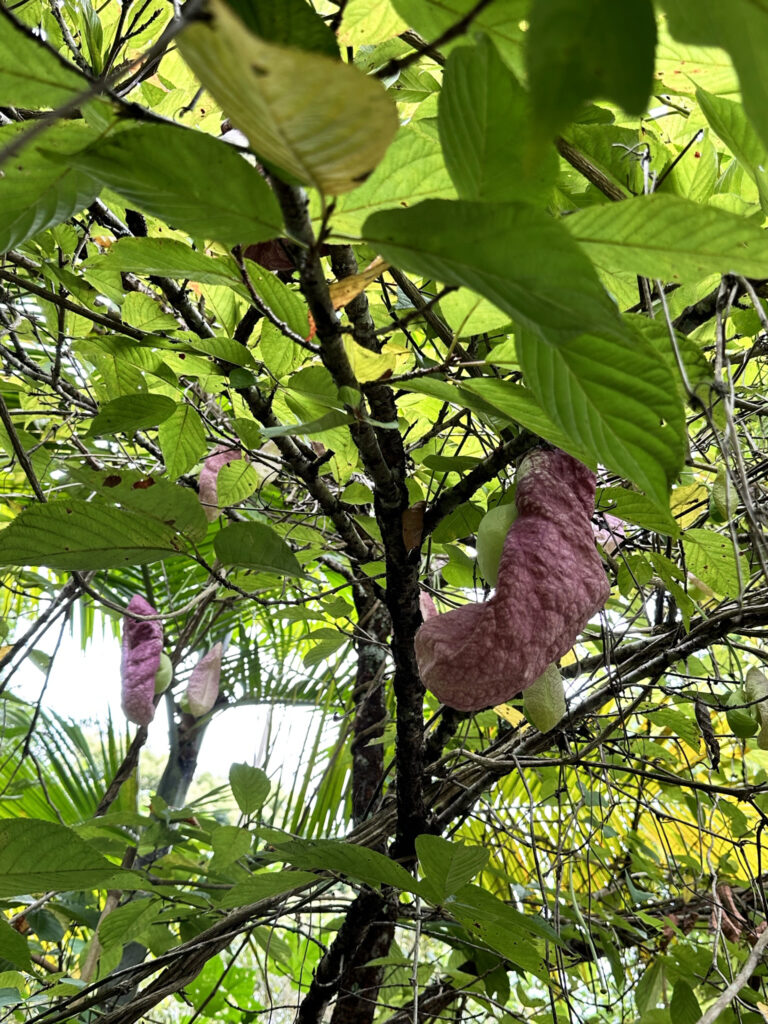
(Aristolochia gigantea)
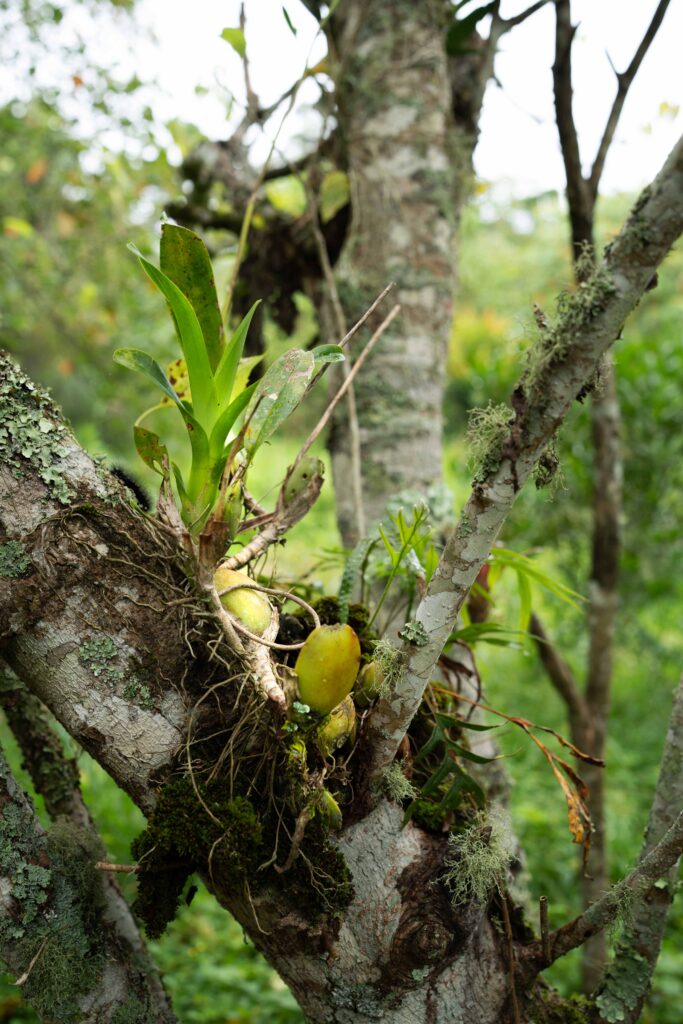
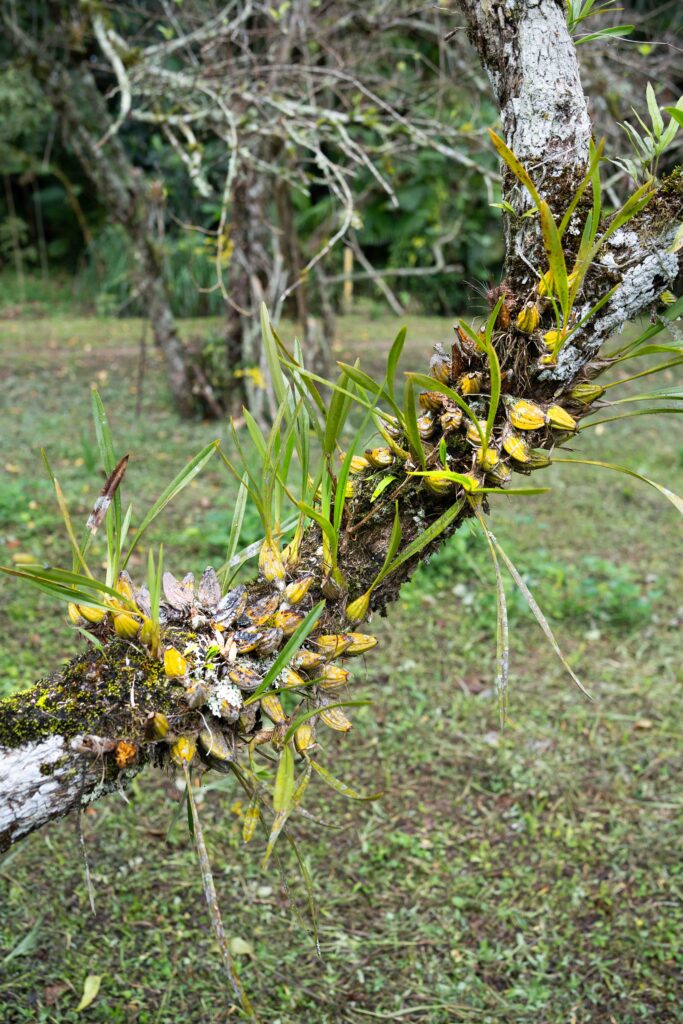
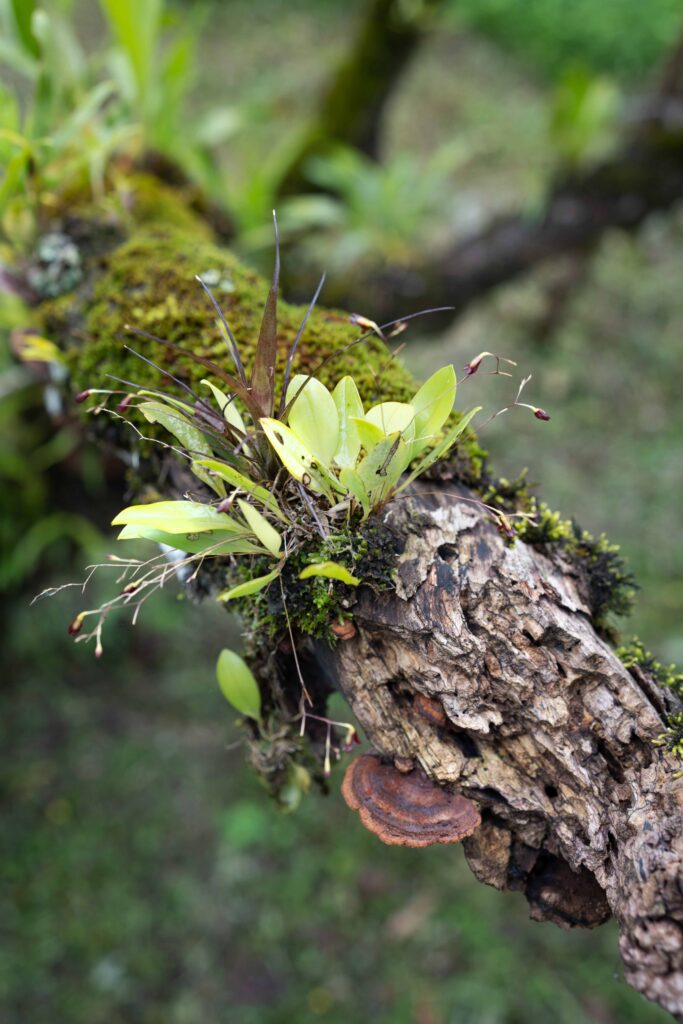
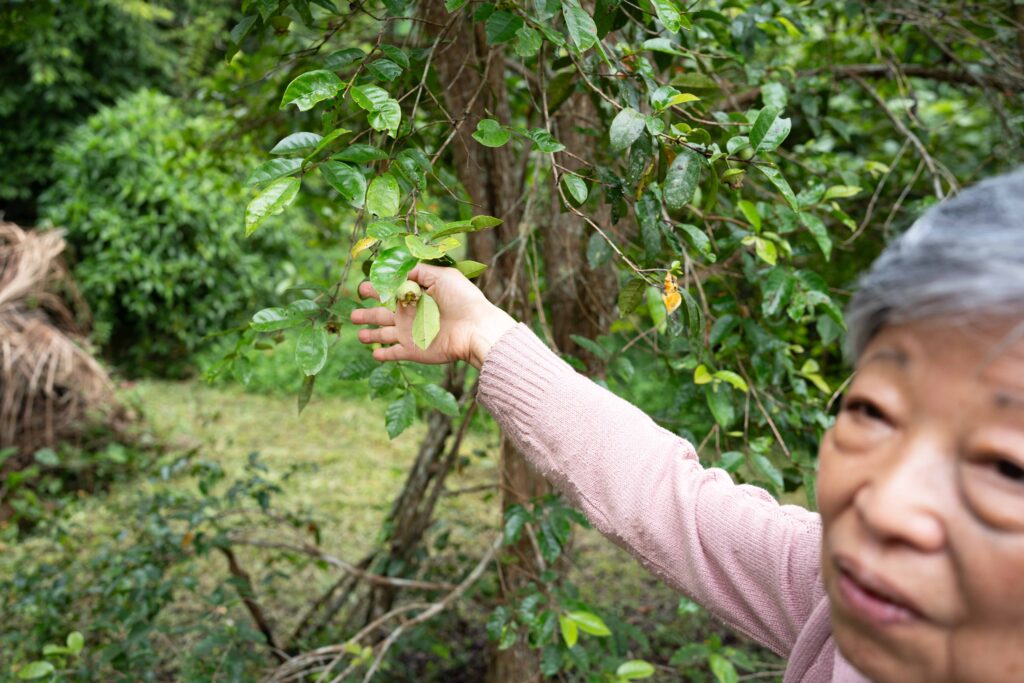
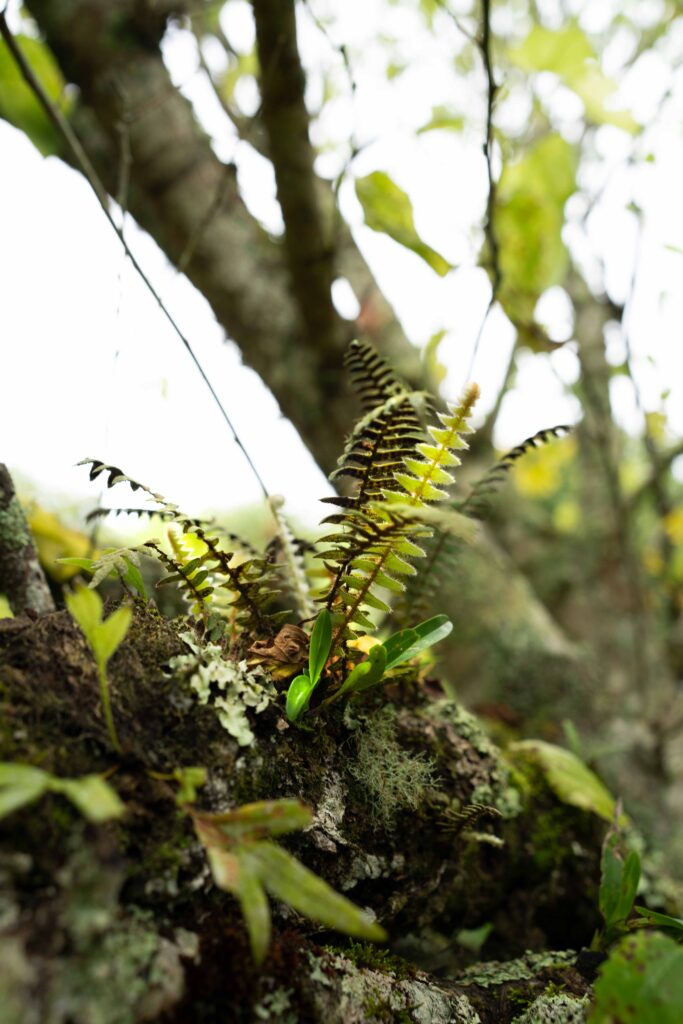
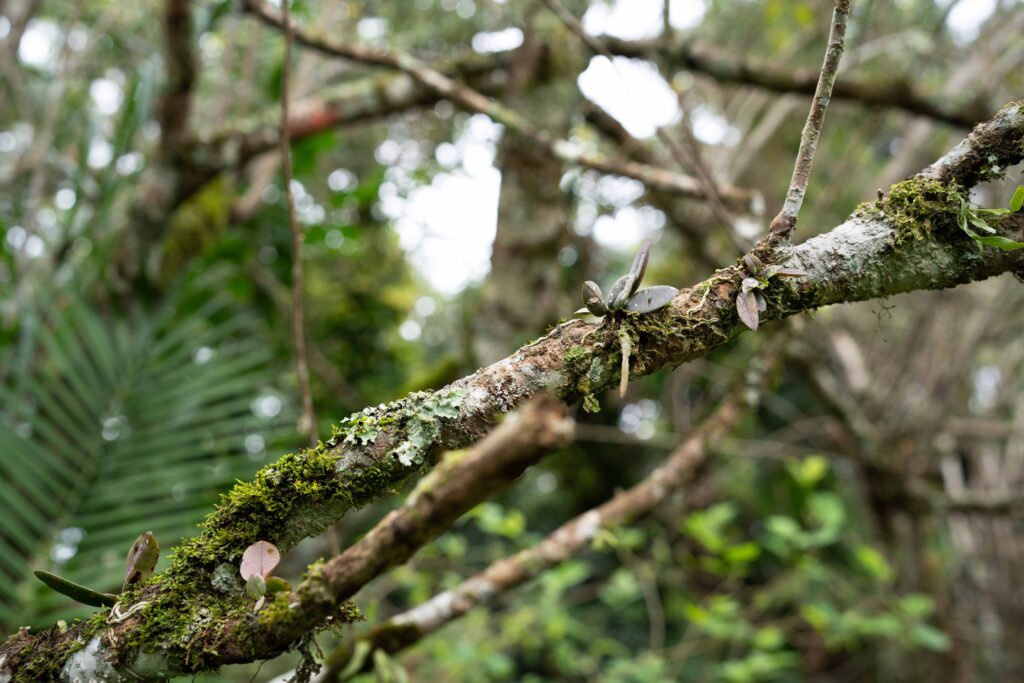
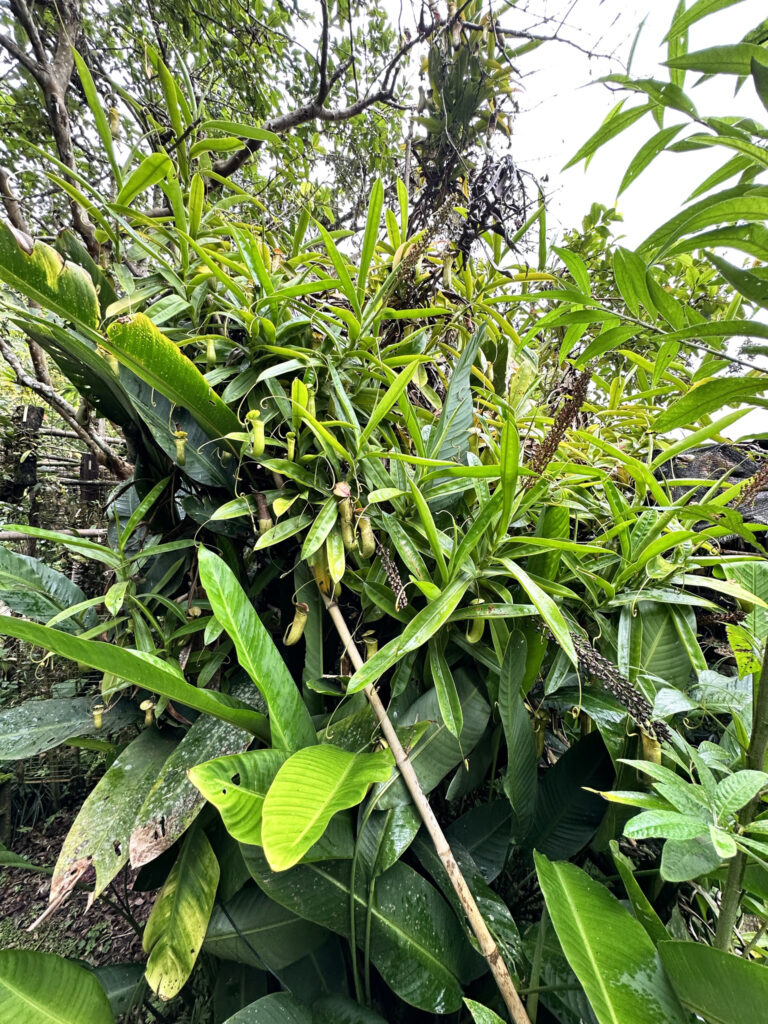
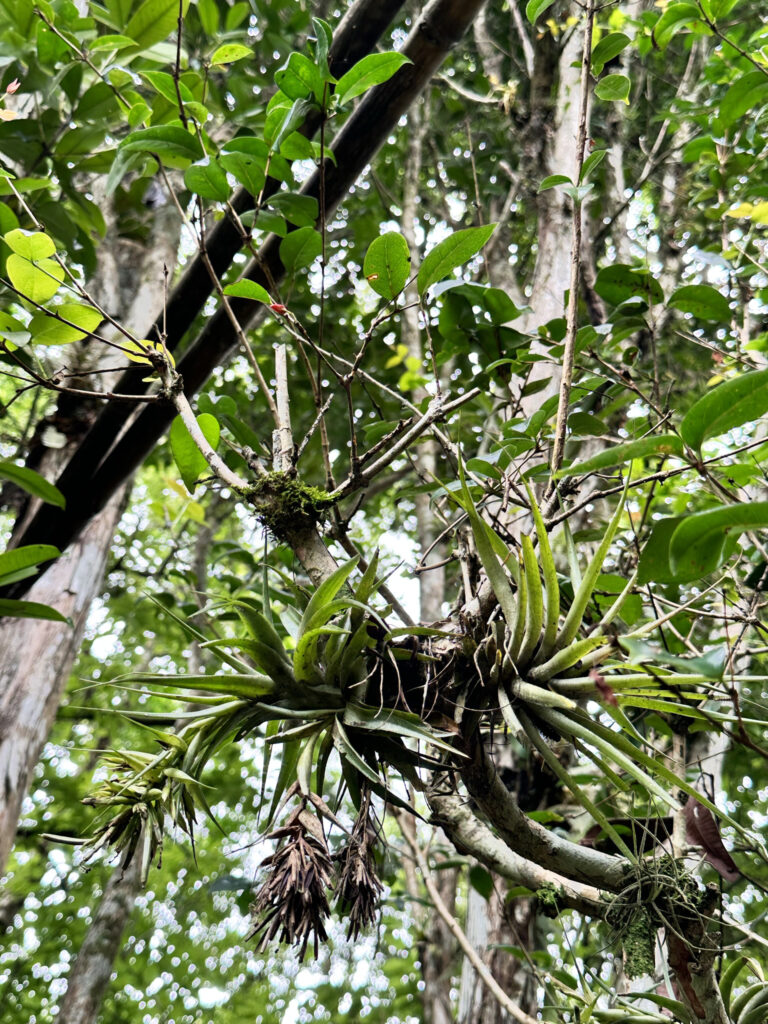
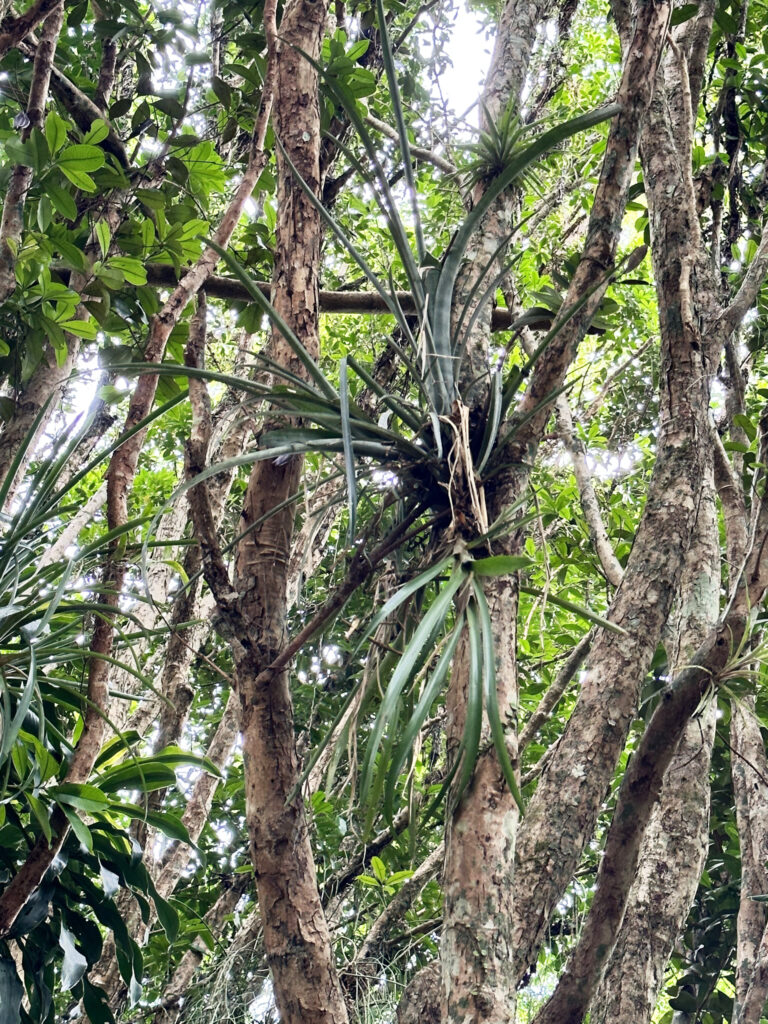
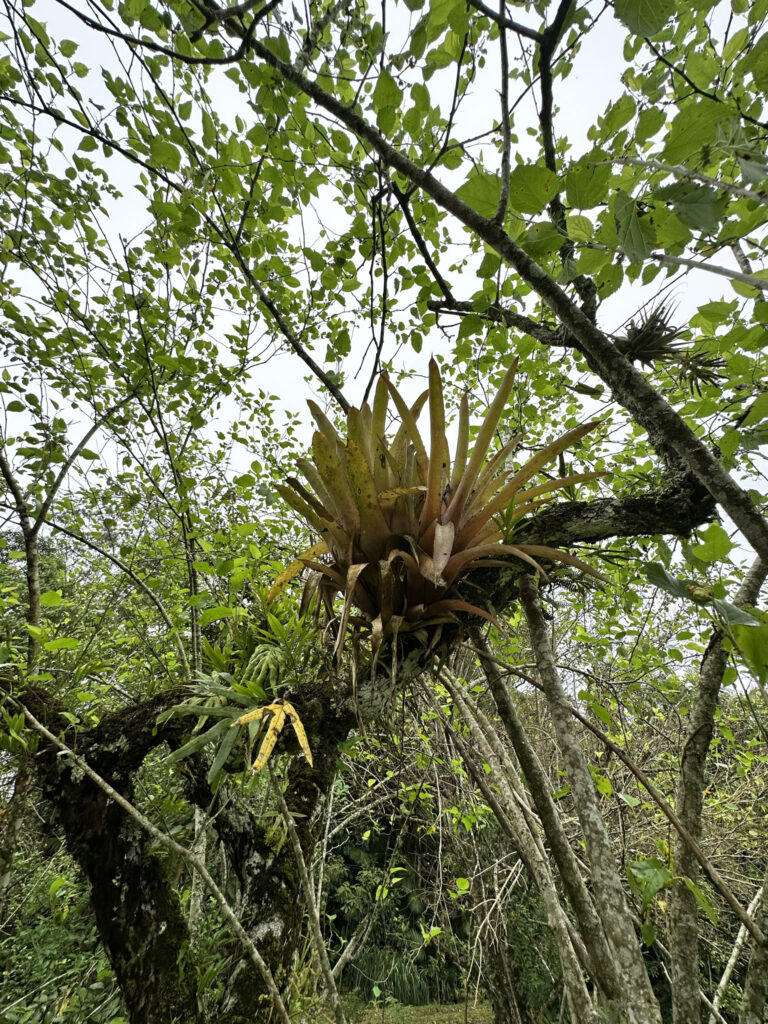
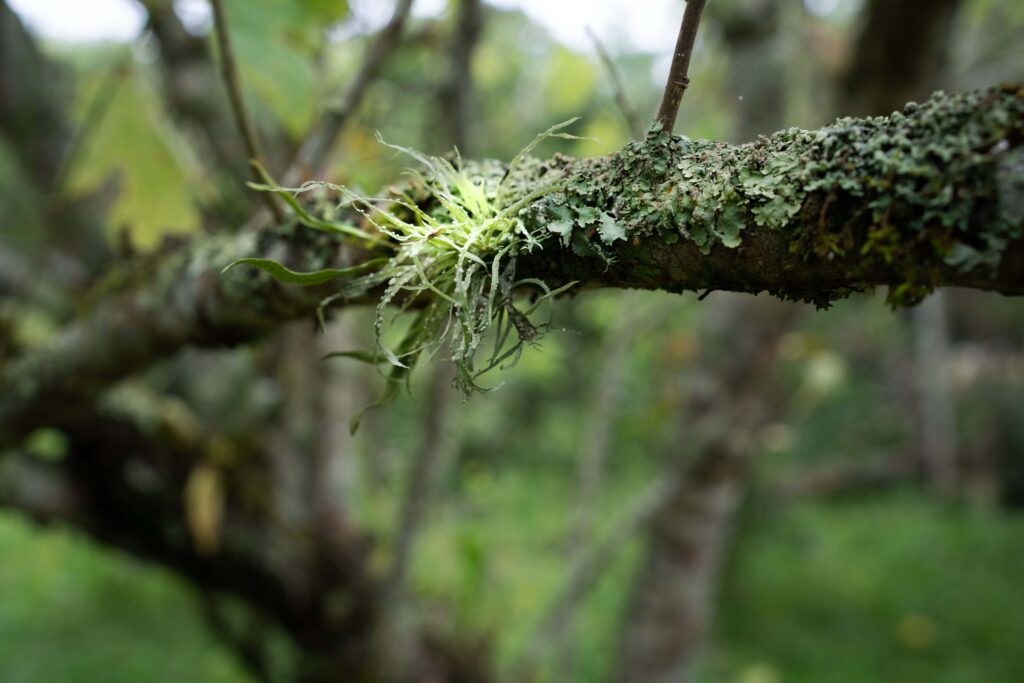
他にも栗や柿、その他の果樹もたくさん育てていて、柿の木にはたくさん蘭が着生していました。
フライングソーサーフルーツ(空飛ぶ円盤フルーツ)とも呼ばれる変わった果物カンブシ(Cambuci)のしぼりたてジュースも作ってくださり、甘酸っぱくてとてもおいしかったです。
プラスチックのケースや廃材などもすべて再利用して蘭の栽培に使っていたりして、土地に根差してすべてが循環する暮らしを体現しておられました。
森の奥からは毎日野生のサルがたくさんやってきて、バナナをあげているそう。
ボクたちがいる間もたくさんやってきてくれました。
地元でサギ(sagui マーモセットの意味)と呼ばれるサルの仲間で、ミコ(mico)、クロミミマーモセット、スタータマリンなどとも呼ばれるようです。
小さい体と長いしっぽですばしっこい動きはリスのよう、大きな耳と鋭い目つきが特徴的なとても不思議な顔立ちをしています。
ほかにもリスや美しい色のハチドリもやってきました。
They also grew chestnuts, persimmons, and other fruit trees, and there were many orchids growing on the persimmon trees.
They also made freshly squeezed juice from Cambuci, a strange fruit also known as flying saucer fruit, which was sweet and sour and very delicious.
They reused everything from plastic cases and scrap materials to grow orchids, embodying a lifestyle that is rooted in the land and in which everything circulates.
Many wild monkeys come from deep in the forest every day and they feed them bananas.
They came over a lot while we were there.
They are locally known as sagui, meaning marmoset, and seems to be also known as mico, black-eared marmoset, and star tamarin.
The monkey has a small body, long tail, and quick movements, similar to a squirrel, and a very mysterious face with large ears and sharp eyes.
We also saw squirrels and beautiful colored hummingbirds.
他们还种植栗子、柿子等果树,柿子树上还长着许多兰花。
他们还用Cambuci这种奇特的水果,又名飞碟果,制作了鲜榨果汁,酸甜可口,非常美味。
他们重复利用从塑料盒到废旧材料的一切来种植兰花,体现了一种植根于土地、万物循环的生活方式。
每天都有很多野生猴子从森林深处赶来,他们给它们喂香蕉。
我们在那里的时候他们过来了很多次。
它们在当地被称为 sagui,意思是狨猴,似乎也被称为 mico、黑耳狨猴和星狨猴。
猴子体型小,尾巴长,动作敏捷,类似松鼠,还有一张非常神秘的脸,耳朵大,眼睛锐利。
我们还看到了松鼠和美丽的彩色蜂鸟。
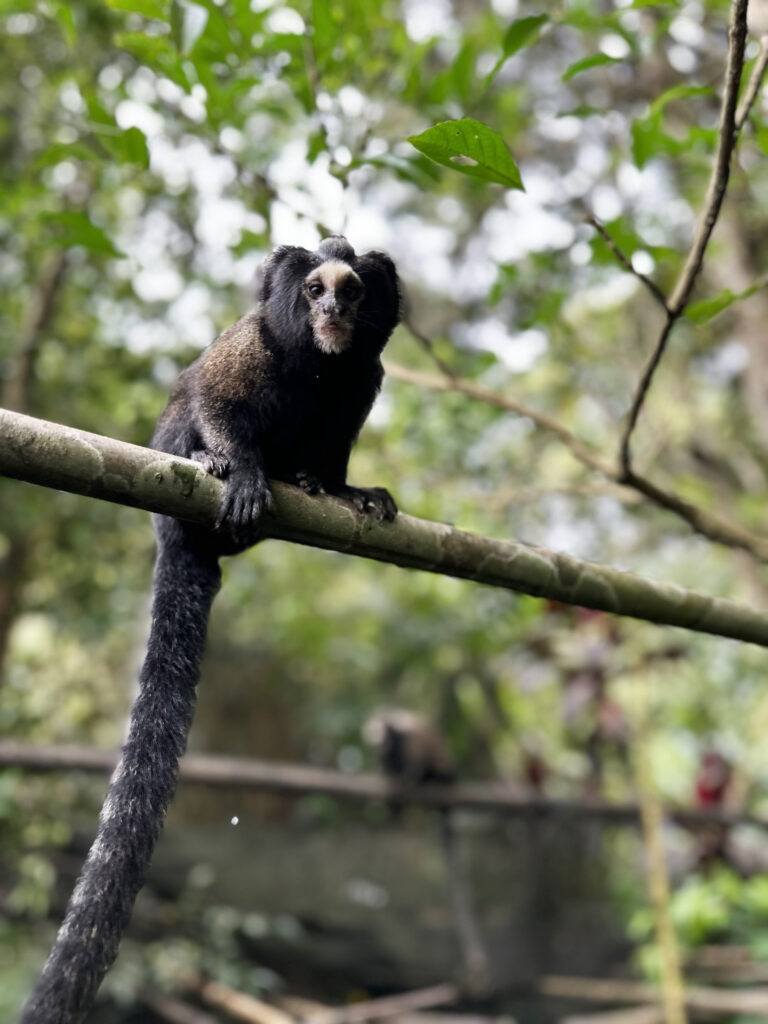
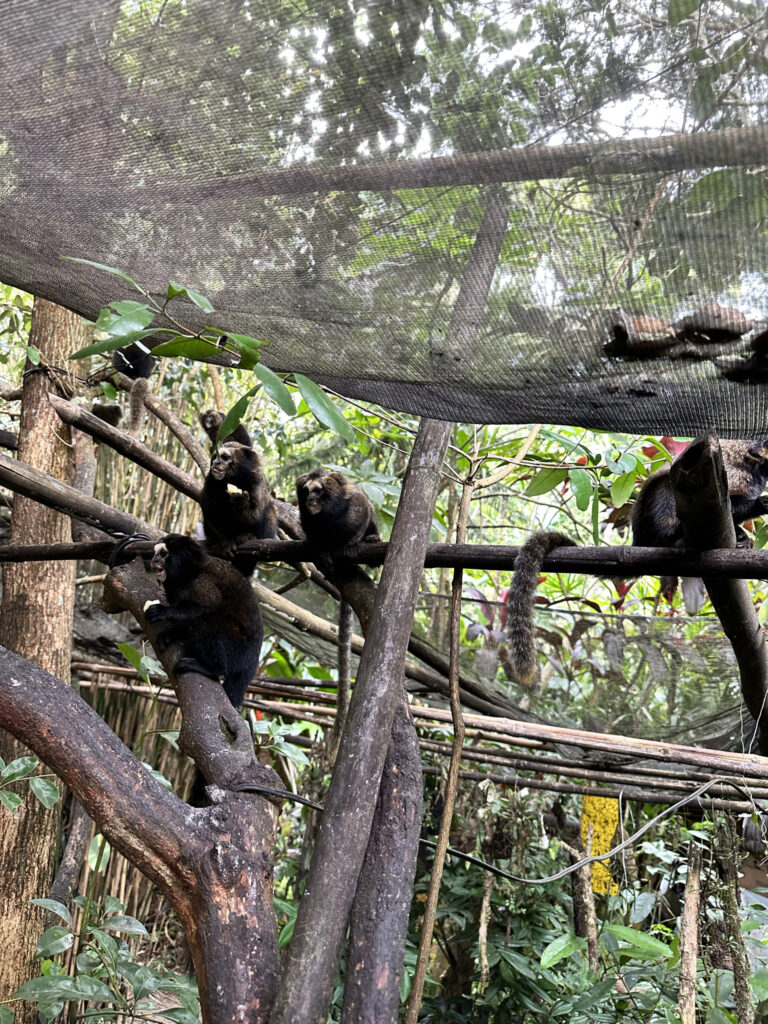
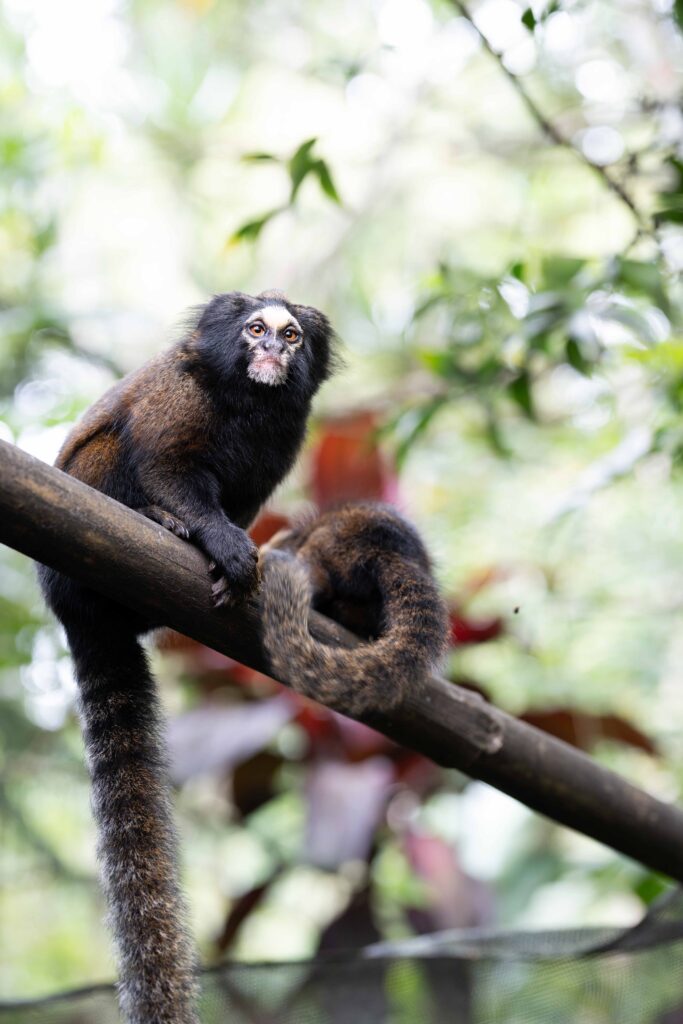
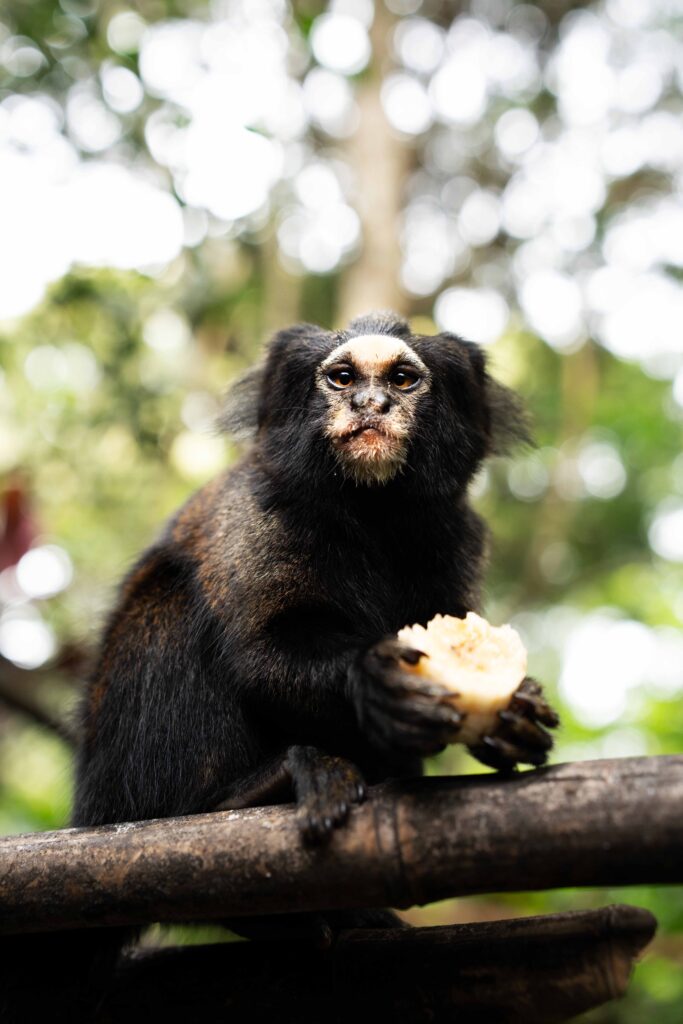
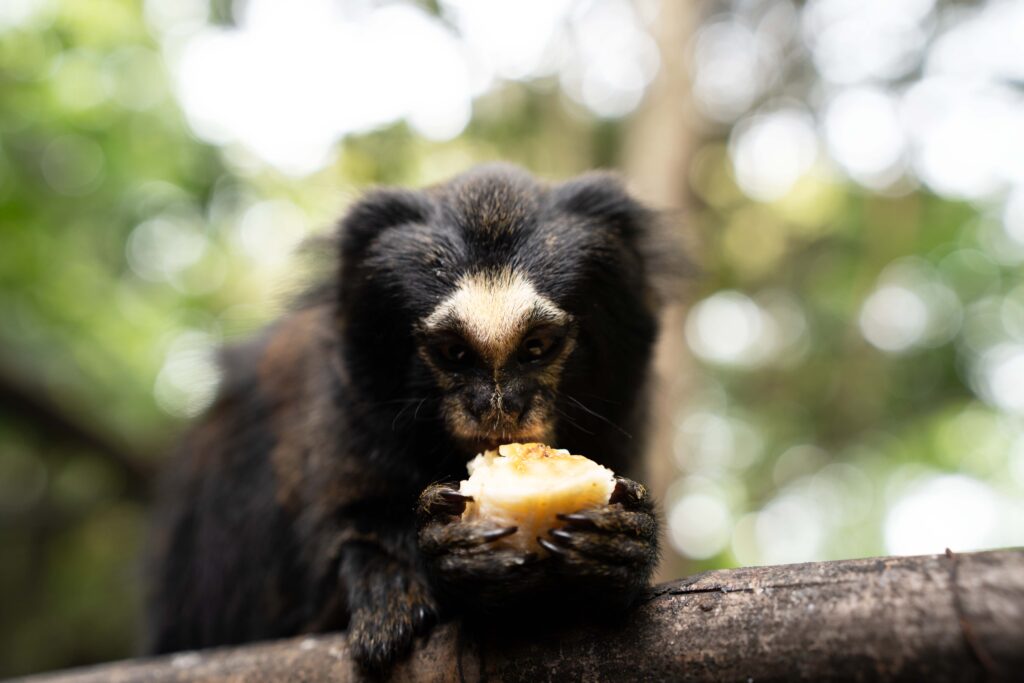
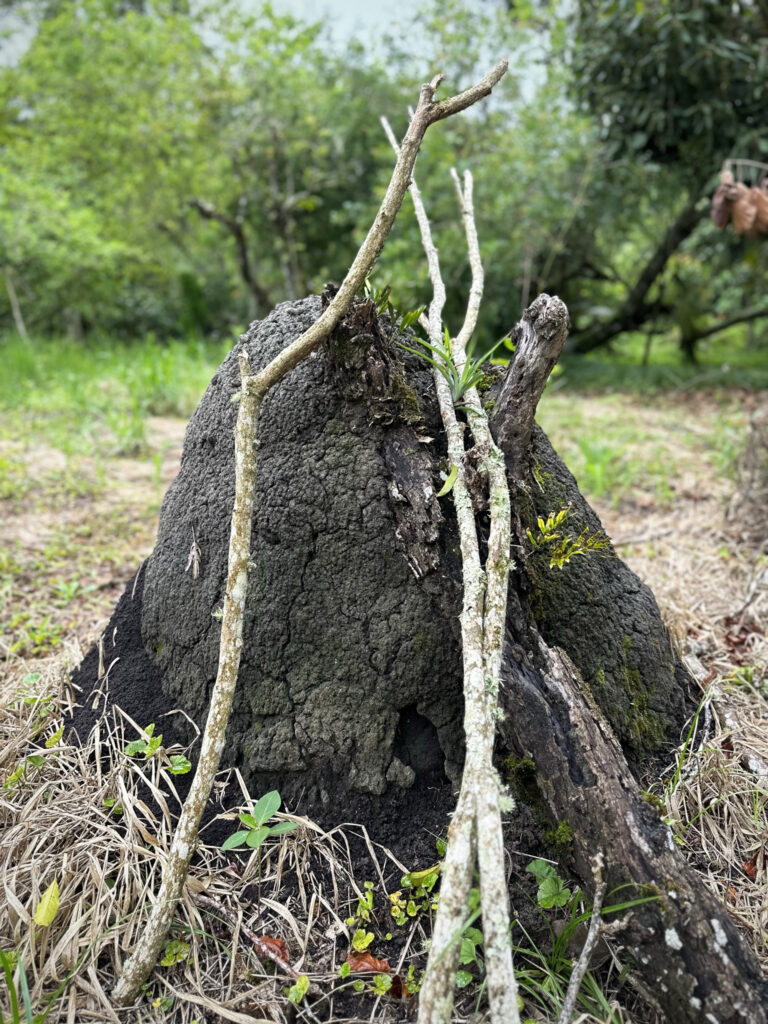
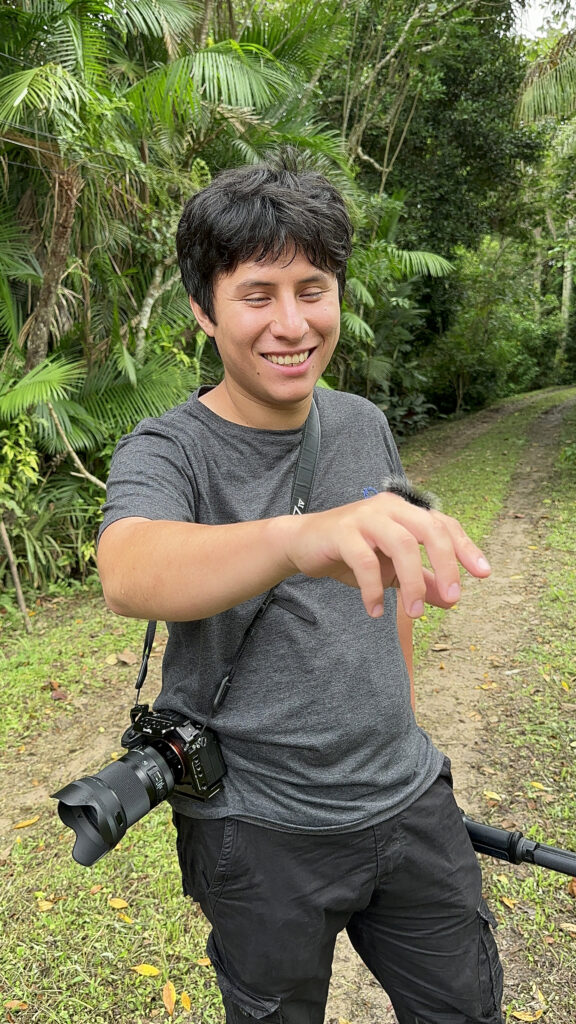
なんで笑顔なの?
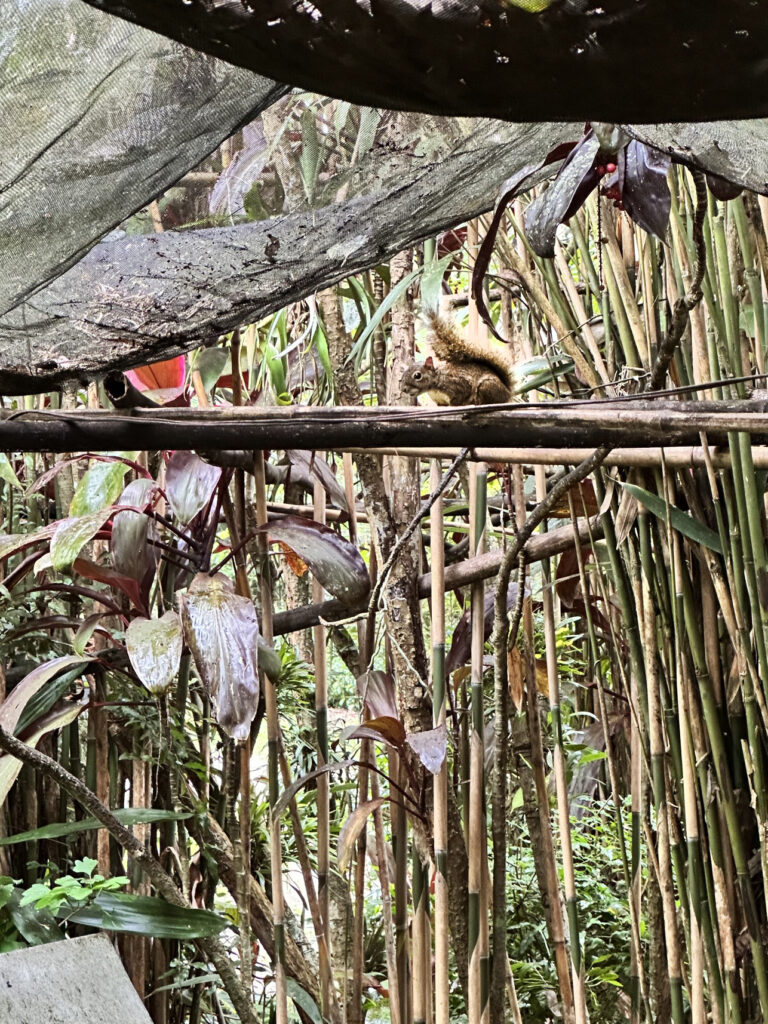
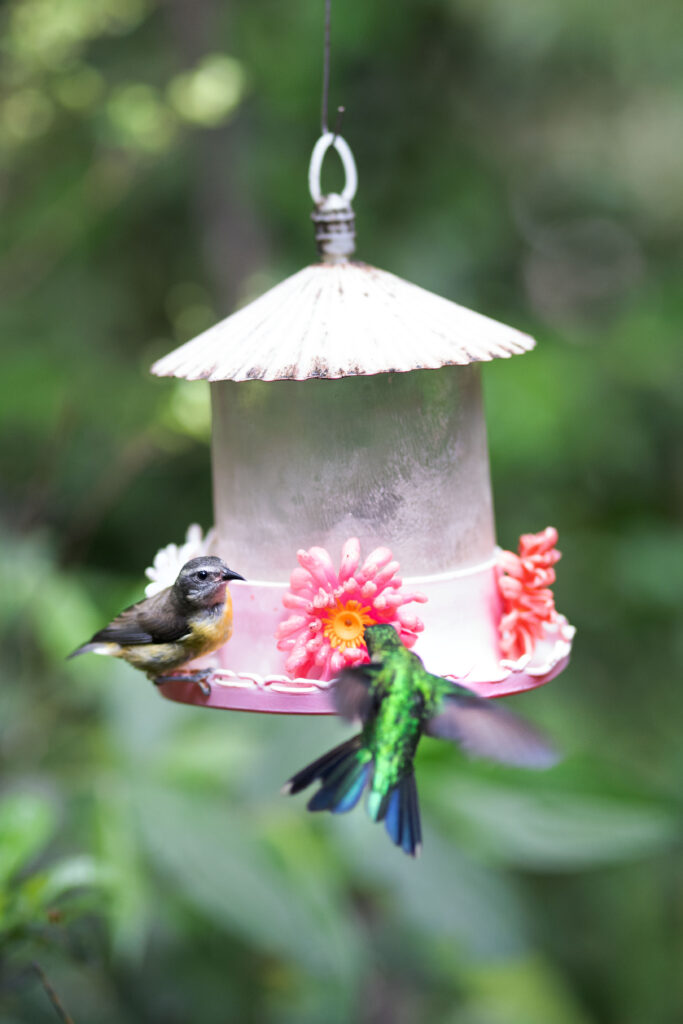
使い込まれて丁寧に手入れされた道具や設備、薪のコンロで沸かしてくれるコーヒー、1日中流れている美空ひばりなどの昭和歌謡、美しい花々と南国のサル、天然水晶の祠にまつられたマリア像、、、
短い訪問の間に、日本の文化を大切にし、植物だけでなく動物も愛しているお二人の暮らしぶりにノスタルジーを感じるとともに、丁寧な暮らしぶりに共感しました。
Used and carefully maintained tools and equipment, coffee boiled on a wood stove, Showa songs such as Misora Hibari that are played all day long, beautiful flowers and tropical monkeys, and Virgin Mary enshrined in a natural crystal shrine,,,
During my short visit, I felt nostalgic and empathized with the way these two people lived their lives, as they valued Japanese culture and loved not only plants but also animals.
使用并精心维护的工具和设备,在木炉上煮的咖啡,整天播放的昭和歌曲如美空云雀,美丽的花朵和热带猴子,以及供奉在天然水晶神社中的圣母玛利亚,,,
在我短暂的访问期间,我对这两个人的生活方式感到怀念和同情,因为他们重视日本文化,不仅热爱植物,还热爱动物。
「あなたたちもう餅つきとかしないでしょ、私たち毎年25㎏くらい餅つきするのよ。運動会とかもみんなで集まって毎年やっているの。」
と優しい口調で色々教えてくれるマスジ夫妻のおもてなしに心を打たれます。
遠く離れたブラジルの地で暮らしつつ、日本文化を守りながら生きてきたブラジル日系移民の方々の心に触れた気がしました。
マスジ氏世代の三世くらいからだんだん日本語がしゃべれなくなり、今赤ちゃんとかの一番若い六世くらいになると全くしゃべれないんだそうです。
それでも日本とのつながりを大切にして、コミュニティを大事にしているということ、日本人街の有力者の尽力で、眞子さまをお呼びしたりする活動もしているということでした。
マスジ氏ご夫妻の生活には、今の日本よりもよほど古き良き日本が残っているのを感じて、感慨深い気持ちになりました。
“You guys don’t pound mochi anymore, we pound about 25 kg of mochi every year.We all get together and do sports days every year.”
I was moved by the hospitality of Mr. and Mrs. Masji, who taught me various things in a gentle tone.
I felt that I was able to touch the hearts of Japanese immigrants from Brazil, who lived far away in Brazil while preserving Japanese culture.
From the third generation of Mr. Masuji’s generation, it seems that they gradually become unable to speak Japanese, and now the youngest sixth generation, such as babies, can’t speak Japanese at all.
However, they said that they value their connection with Japan and takes care of the community, and that they are even working to invite Princess Mako to visit with the efforts of influential people in the Japanese town.
I was deeply moved by the fact that there was much more of the good old Japan in the lives of Mr. and Mrs. Masji than there is in today’s Japan.
“你们不再捣麻糬了,我们每年捣麻糬大约25公斤。我们每年都会聚在一起做运动会。”
马斯吉夫妇的热情好客让我感动,他们用温和的语气教给我很多东西。
我觉得我能够触动来自巴西的日本移民的心,他们住在遥远的巴西,同时保留着日本文化。
从增二先生这一代的第三代开始,似乎就逐渐变得不会说日语了,现在最小的第六代,如婴儿一样,根本就不会说日语了。
不过,他们表示,他们重视与日本的联系并关心社区,甚至在日本小镇上有影响力的人士的努力下,他们甚至正在努力邀请真子公主来访。
与今天的日本相比,马斯先生和夫人的生活中更多的是昔日美好的日本,这让我深受感动。
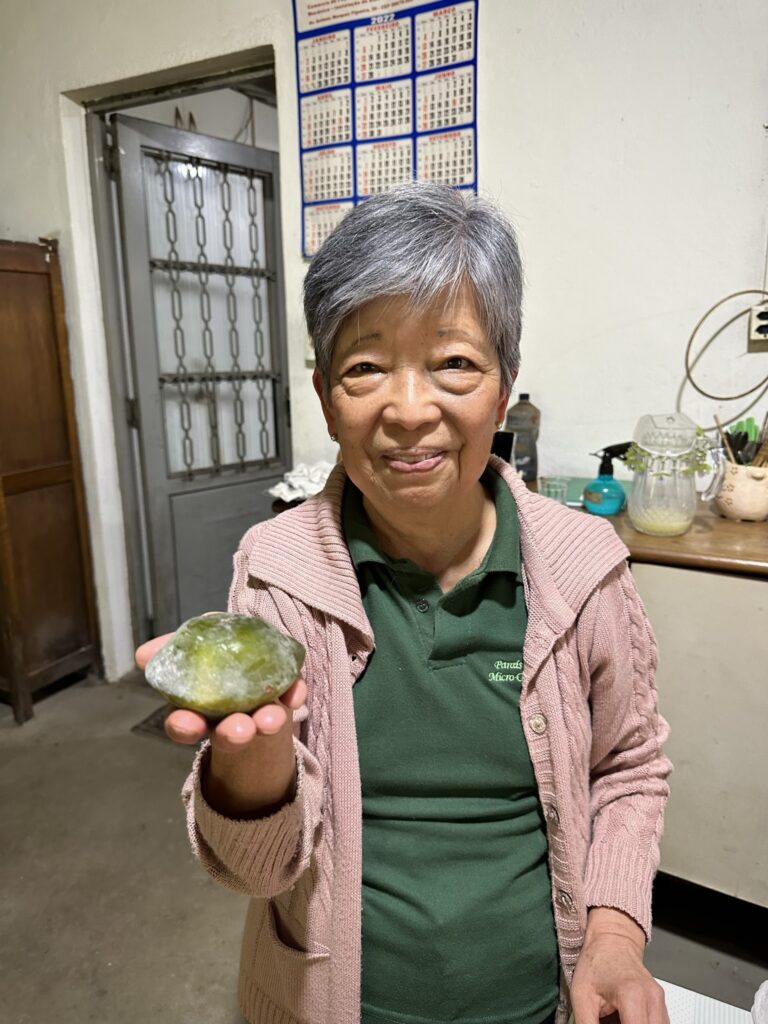
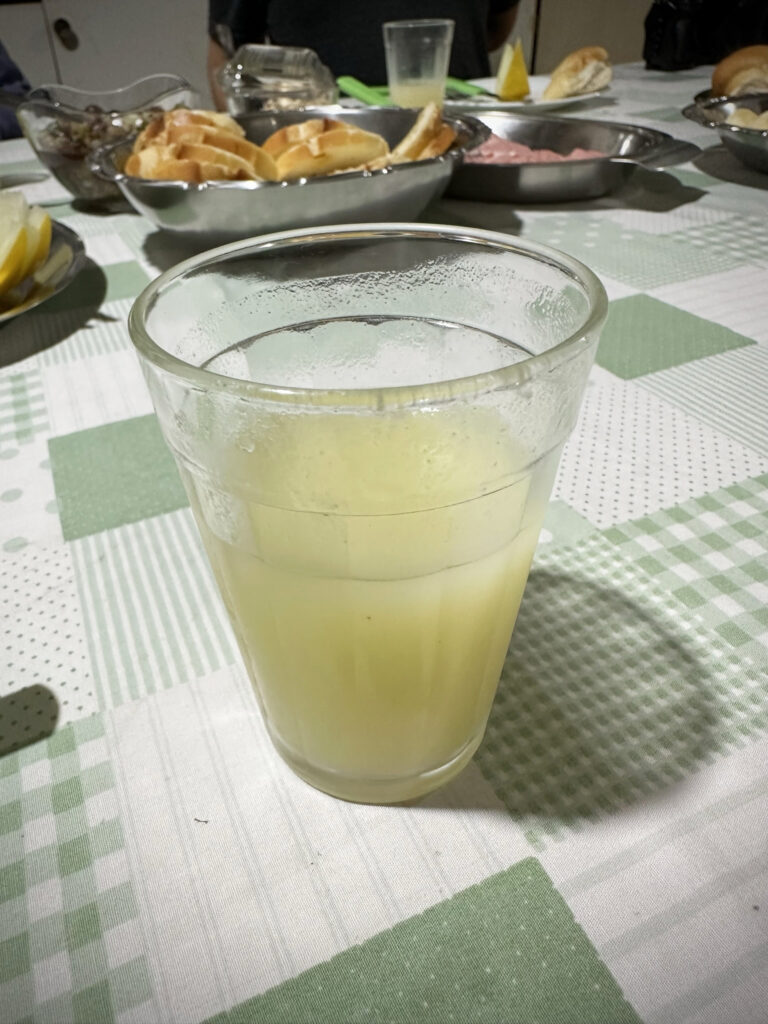
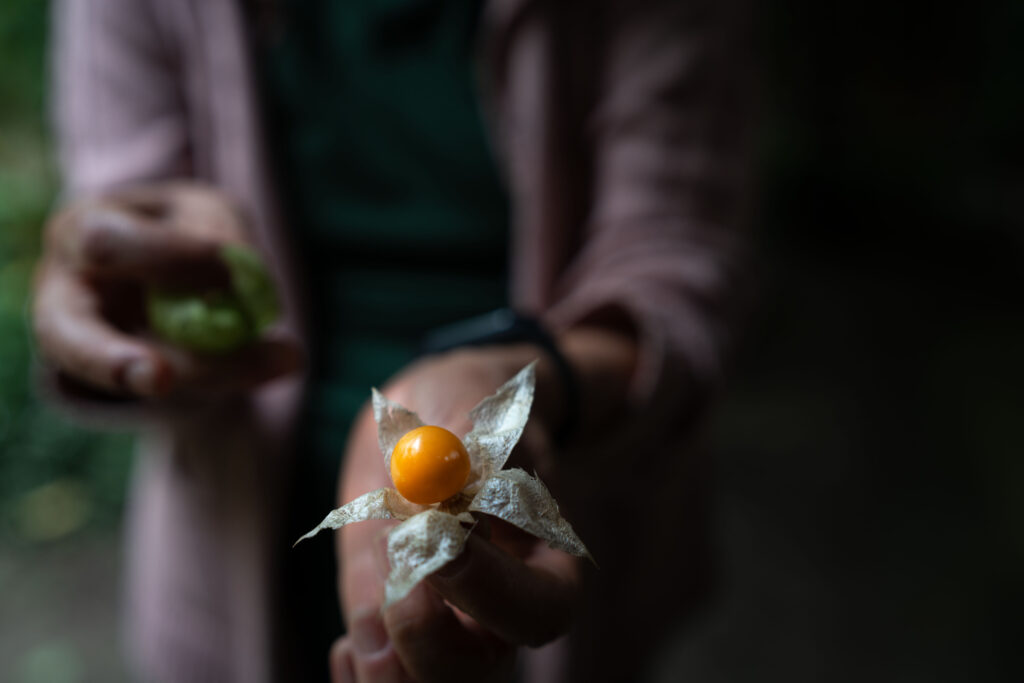
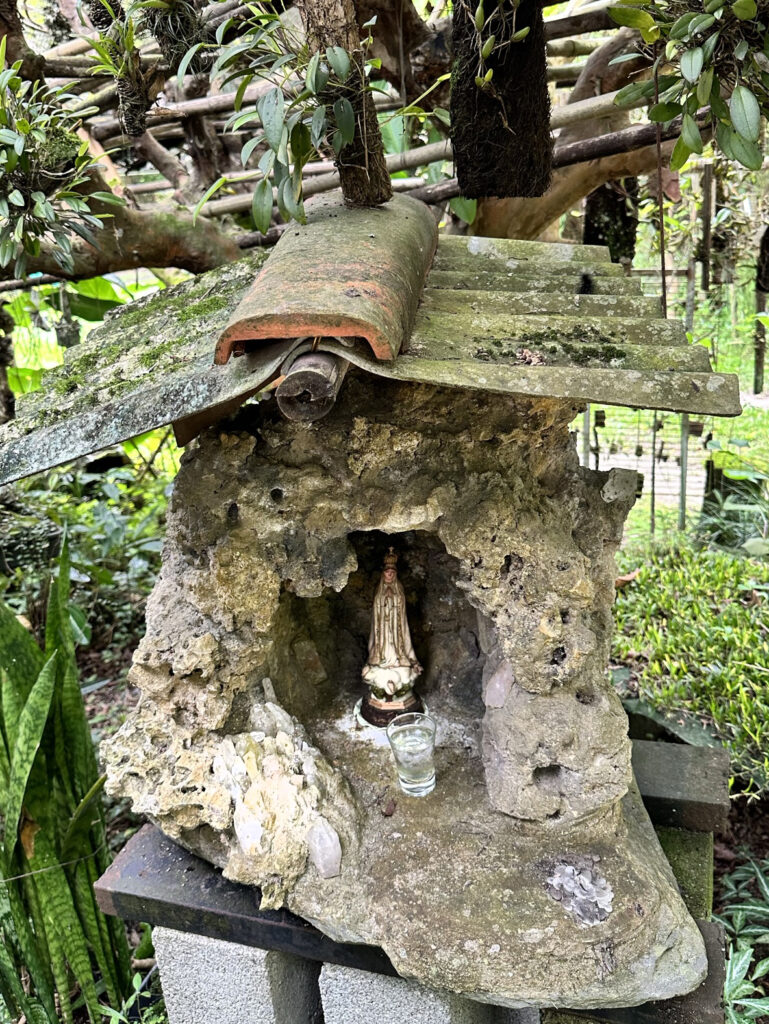
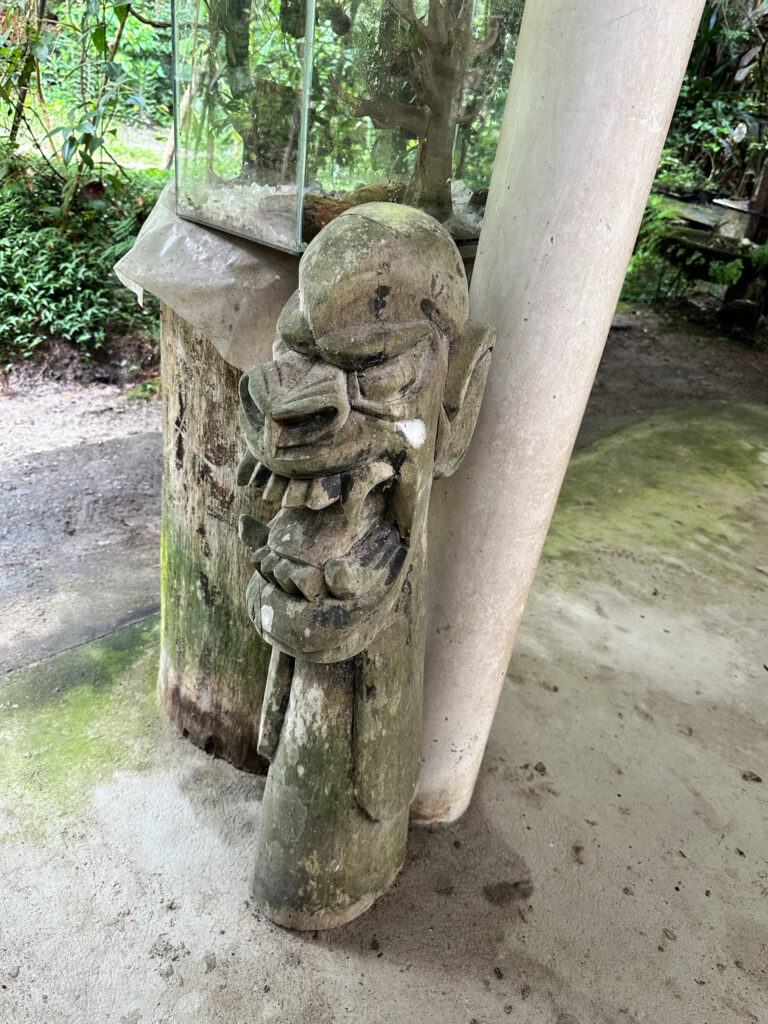

帰り際に寄ったレストランでも、列にいた日系人の方が気さくに話しかけてくれて、このあたりには農業をやっている日系人がたくさんいるよと教えてくれました。
お昼のビュッフェは巻き寿司などもあって、ブラジル料理と和食が融合したスタイルのビュッフェでした。
When we stopped at a restaurant on our way back, a Japanese-Brazilian person in the line spoke to me friendly and told me that there are many Japanese-Brazilians working in agriculture in this area.
The lunch buffet was a fusion of Brazilian and Japanese cuisine included sushi rolls, etc.
回来的路上,在一家餐馆停下来时,排队的一位日裔巴西人友好地跟我说话,并告诉我,这个地区有很多日裔巴西人从事农业。
自助午餐融合了巴西和日本美食,包括寿司卷等。
サンパウロ市街に戻り、取材が予定より早く終わったので、少し街中を歩こうということになりました。
公園を散歩してから地下鉄でリベルダージと呼ばれる日本人街まで。
Returning to downtown Sao Paulo, the interview ended earlier than planned, so we decided to walk around the city a bit.
After a walk in the park, we took a subway to the Japanese town called Liberdade.
回到圣保罗市中心,采访比计划提前结束,所以我们决定在城里走走。
逛完公园后,我们乘坐地铁前往日本小镇Liberdade。
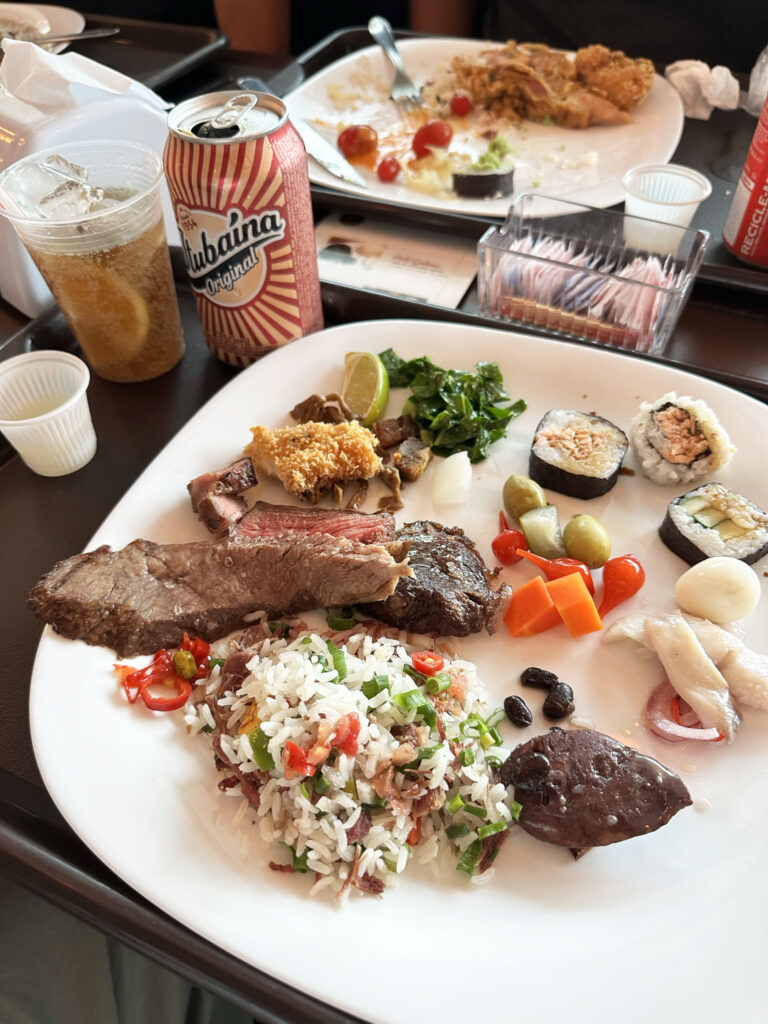
融合したビュッフェ
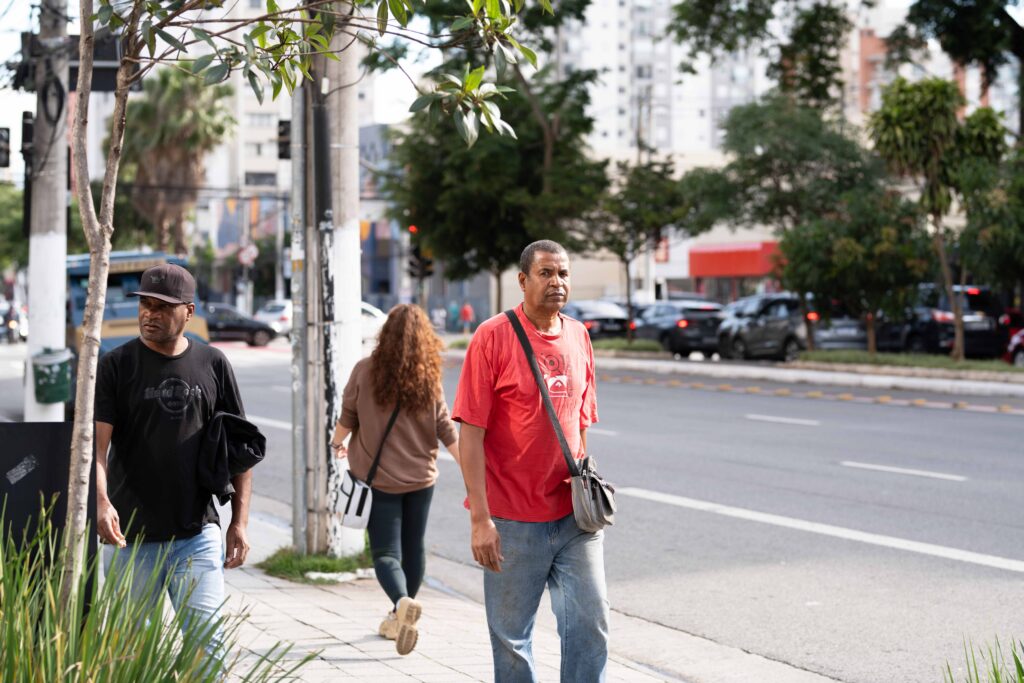
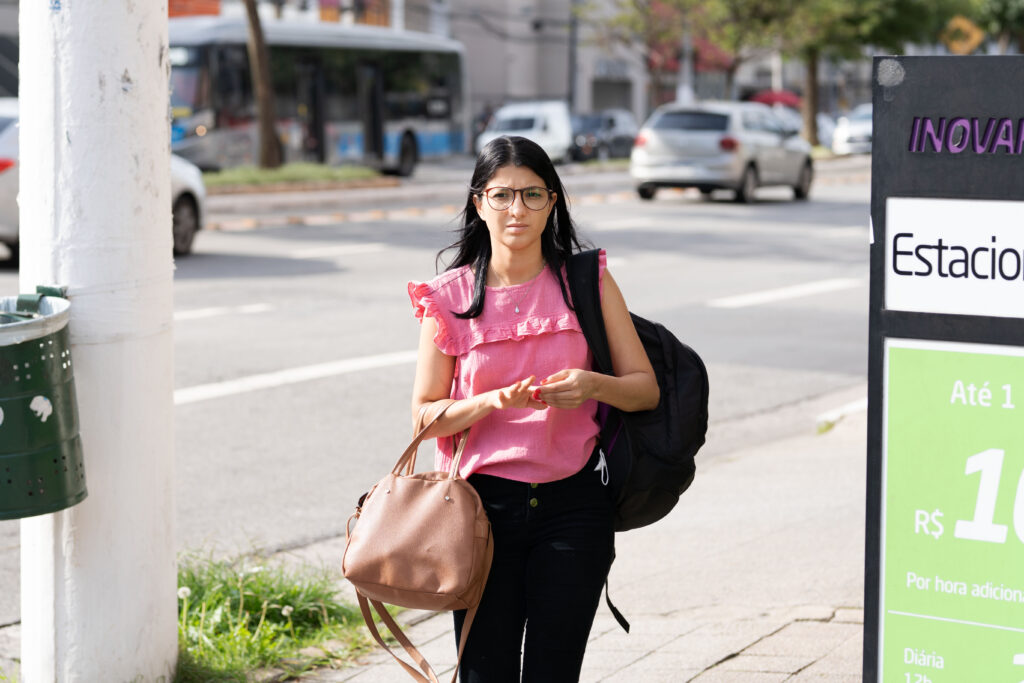
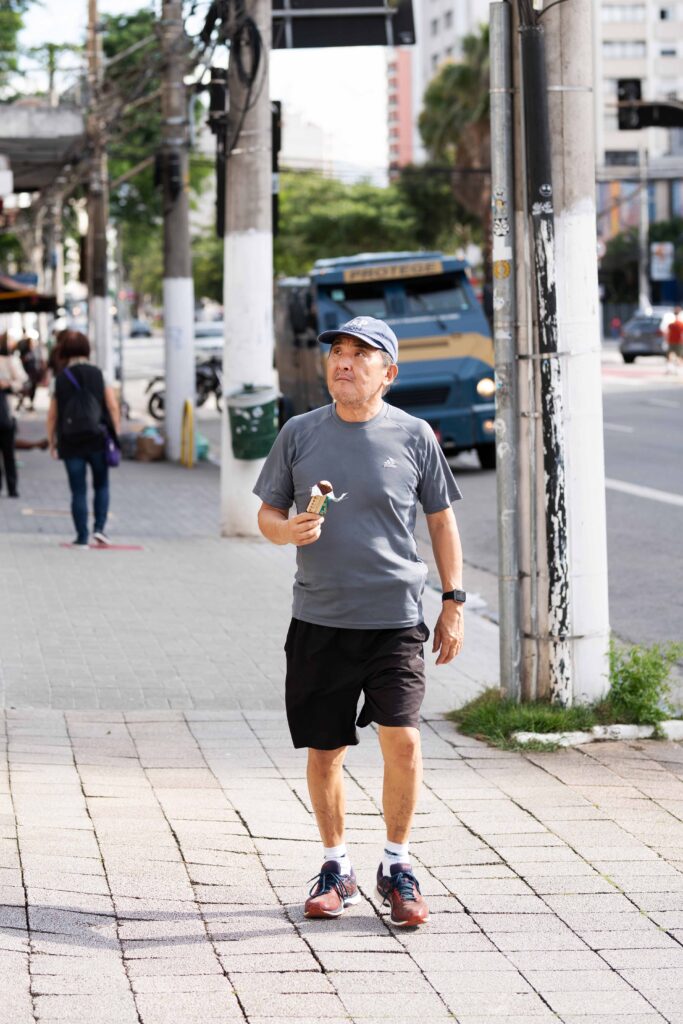
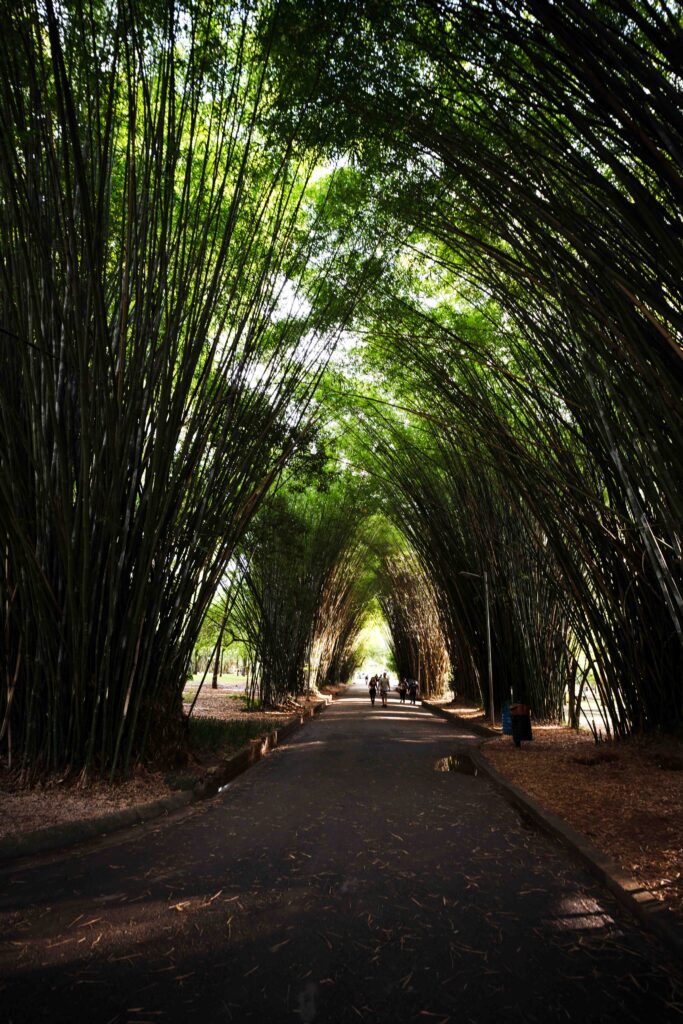
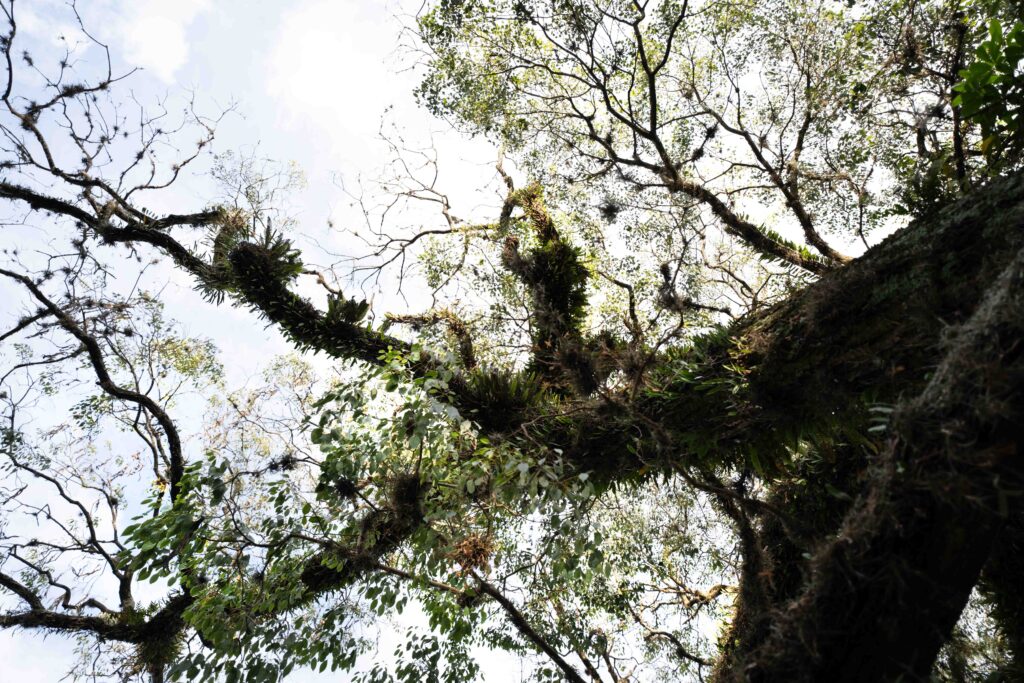
リベルダージはちょっとした観光地で、日系5世くらいだという日系人ミックスの20代前後の若者たちが友達同士で遊びに来ている感じでした。
ラーメン屋や和食食材のスーパーなどに加えて、日本の漫画のポルトガル語版やアニメTシャツなどを売る店も並んでいました。
ブラジルで今人気のアニメは、と聞くと日本と変わらず、「鬼滅の刃」や「呪術廻戦」、「スパイファミリー」などとのこと。
おしゃれな若者も多く、ちょっとニューヨークっぽい都会的な人が多かったです。
音楽はメジャーなのはHipHopで、Kpopも入ってきているということでした。
Liberdade is a bit of a tourist spot, and it seemed like a group of young people in their 20s who were about 5th generation Japanese and a mix of Japanese Brazilians came here to hang out with friends.
In addition to ramen shops and supermarkets selling Japanese food ingredients, there were also shops selling Portuguese versions of Japanese manga and anime T-shirts.
When asked what anime is currently popular in Brazil, they said things like “Demon Slayer: Kimetsu no Yaiba,” “Jujutsu Kaisen,” and “Spy Family,” just like in Japan.
There were a lot of fashionable young people there, and many of them were urbane, with a bit of a New York feel.
When it comes to music, Hip-Hop is the major music, and K-pop is also coming into the mix.
Liberdade有点像一个旅游景点,看起来像是一群20多岁的年轻人,大约是第五代日本人,还有日本巴西人的混合体,来到这里和朋友一起出去玩。
除了拉面店和出售日本食材的超市外,还有出售葡萄牙版日本漫画和动漫T恤的商店。
当被问及巴西目前流行什么动漫时,他们说“鬼灭之刃”、“柔术快线”和“间谍家族”,就像在日本一样。
那里有很多时尚的年轻人,而且很多人都很文雅,有一点纽约的感觉。
就音乐而言,Hip-Hop 是主要音乐,K-pop 也加入其中。
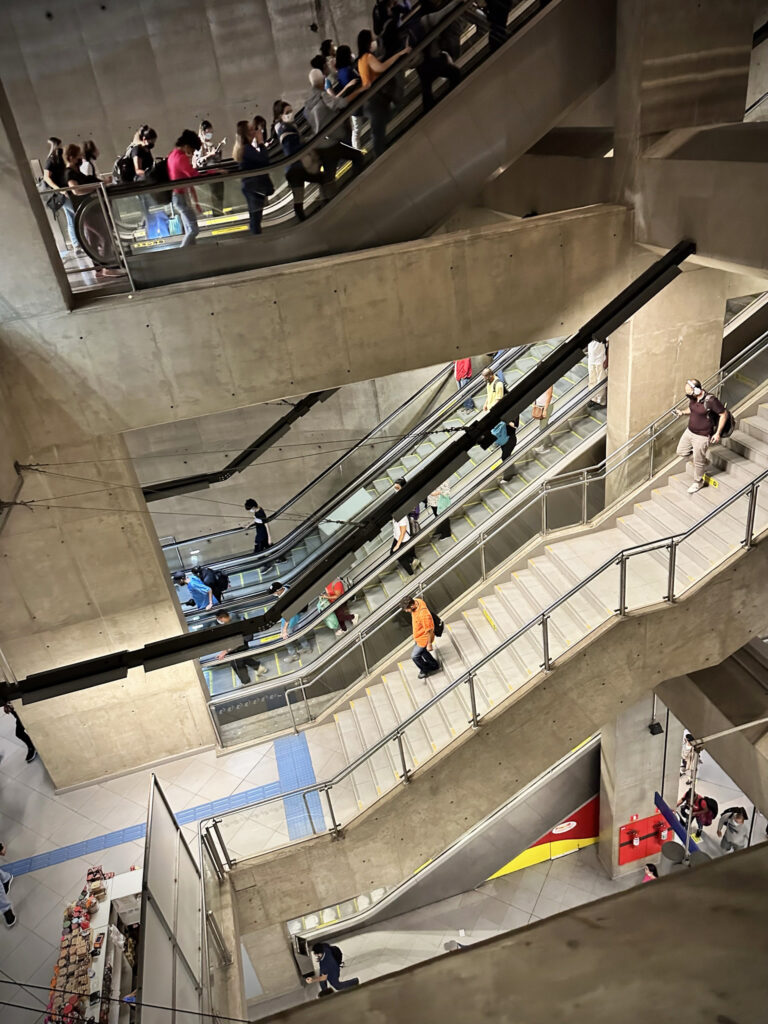


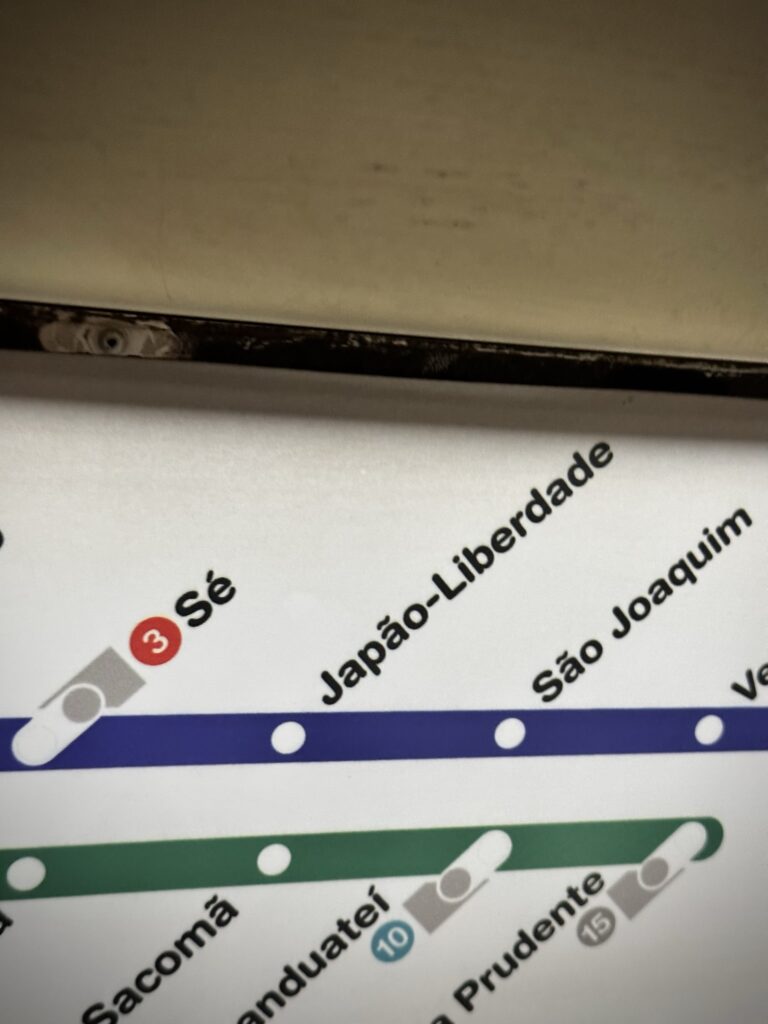
まで行く
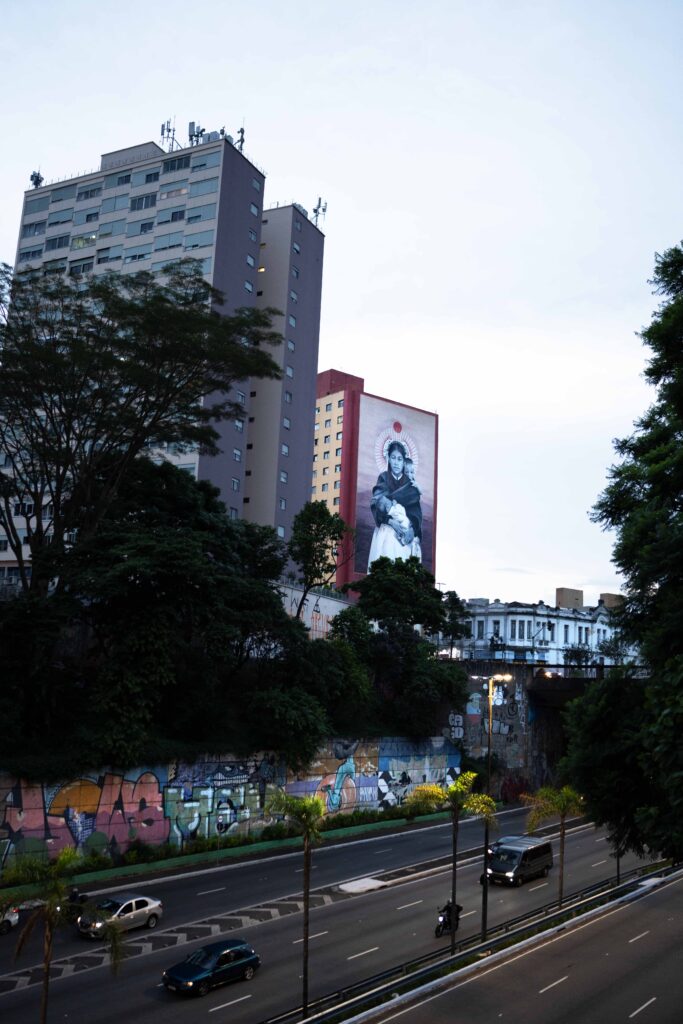
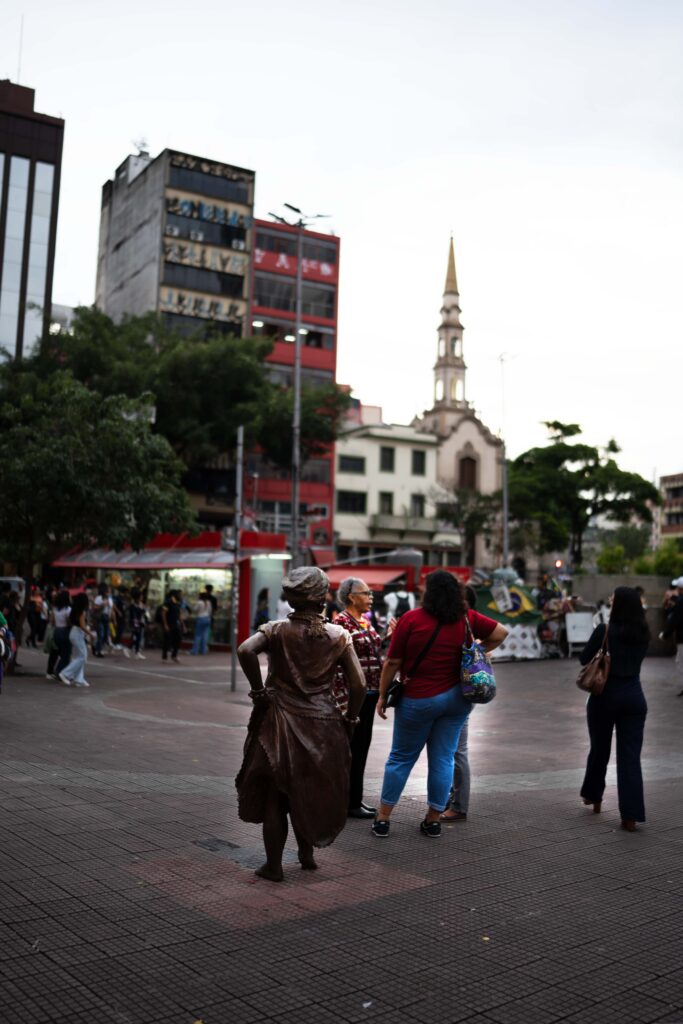
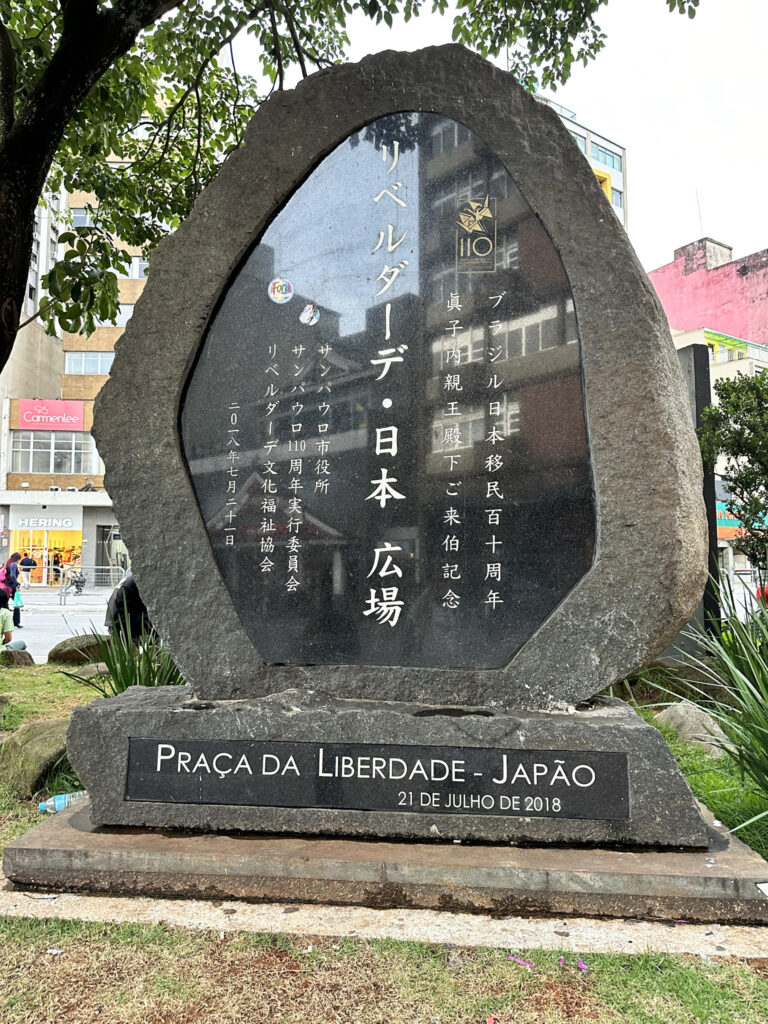
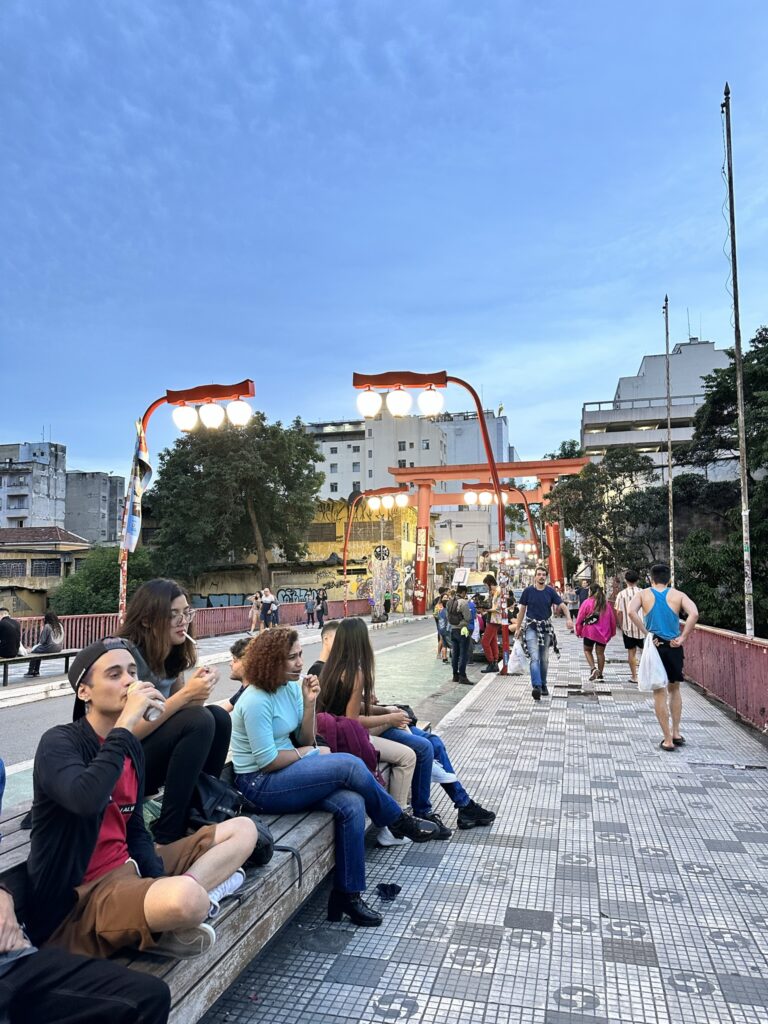
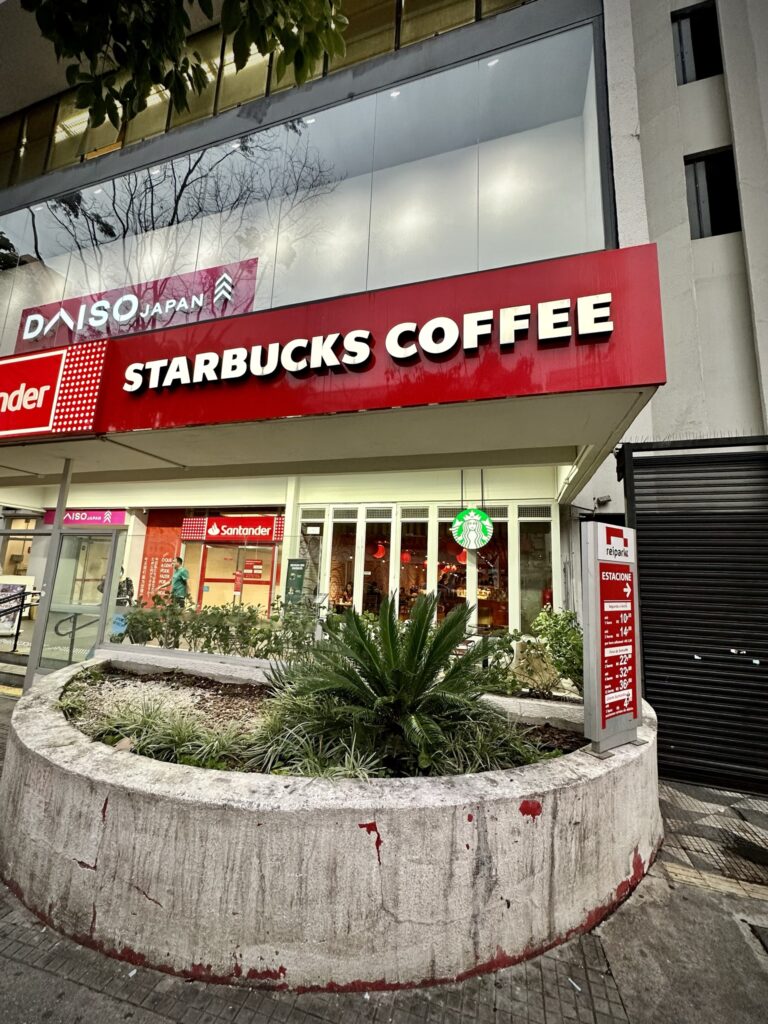
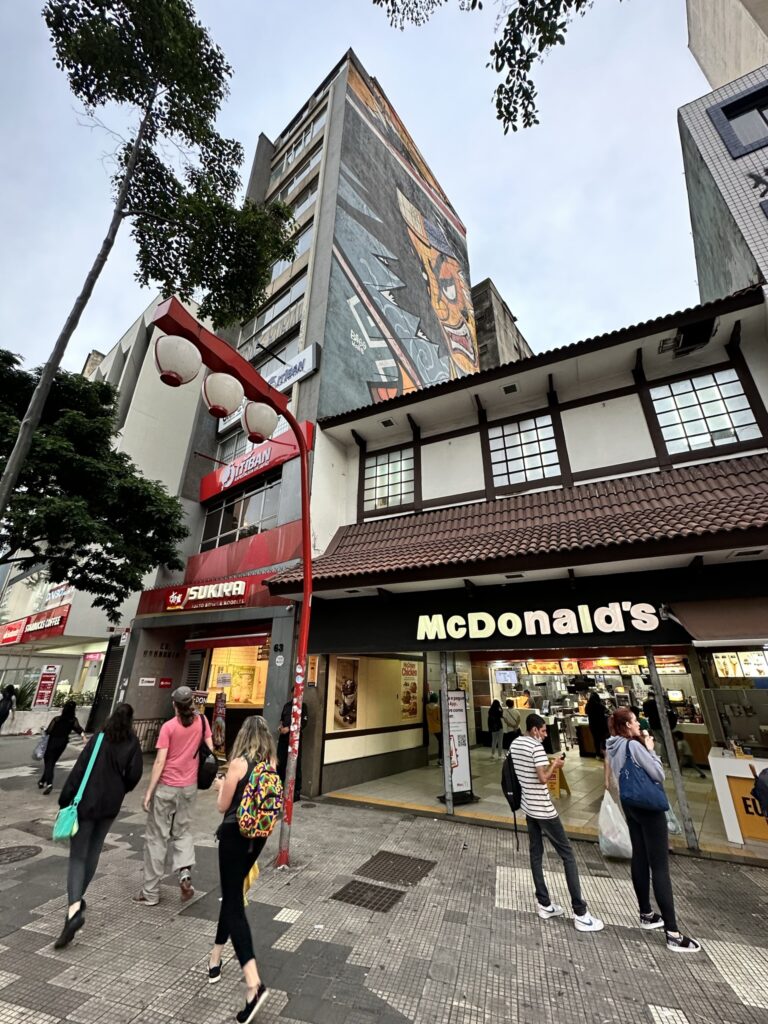
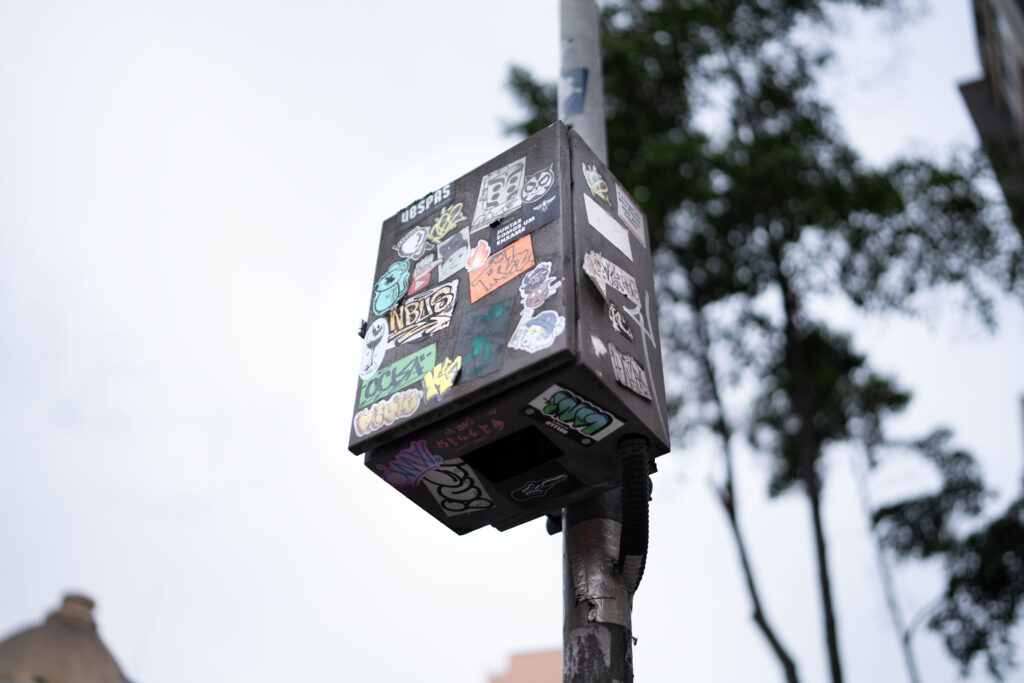
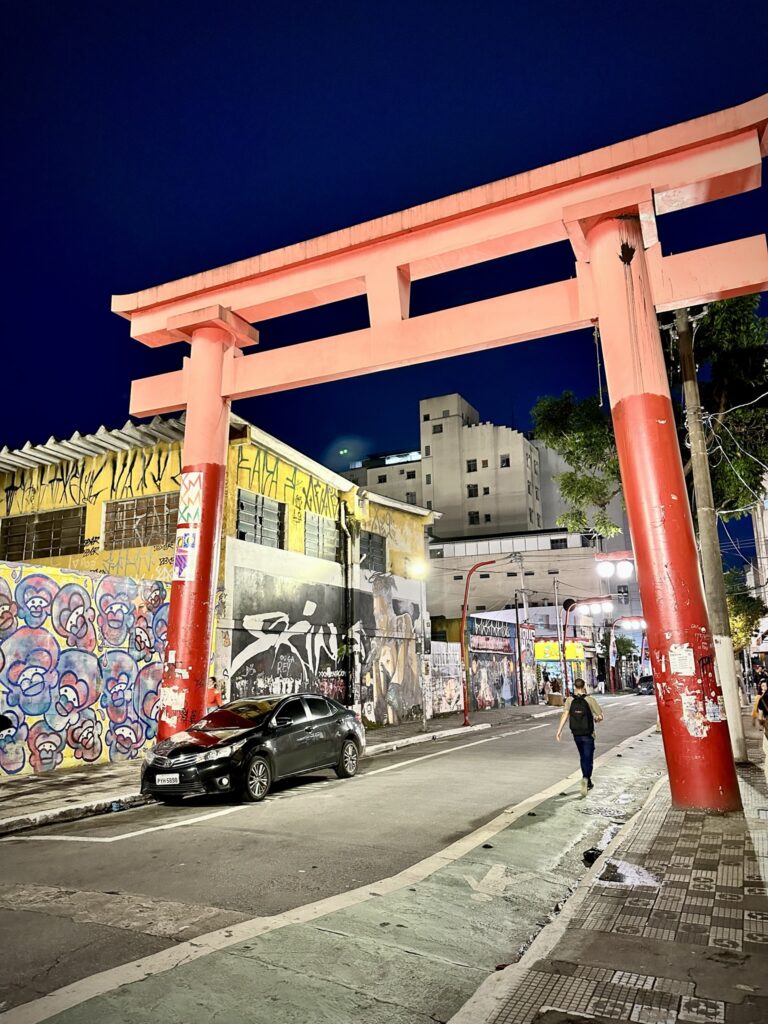

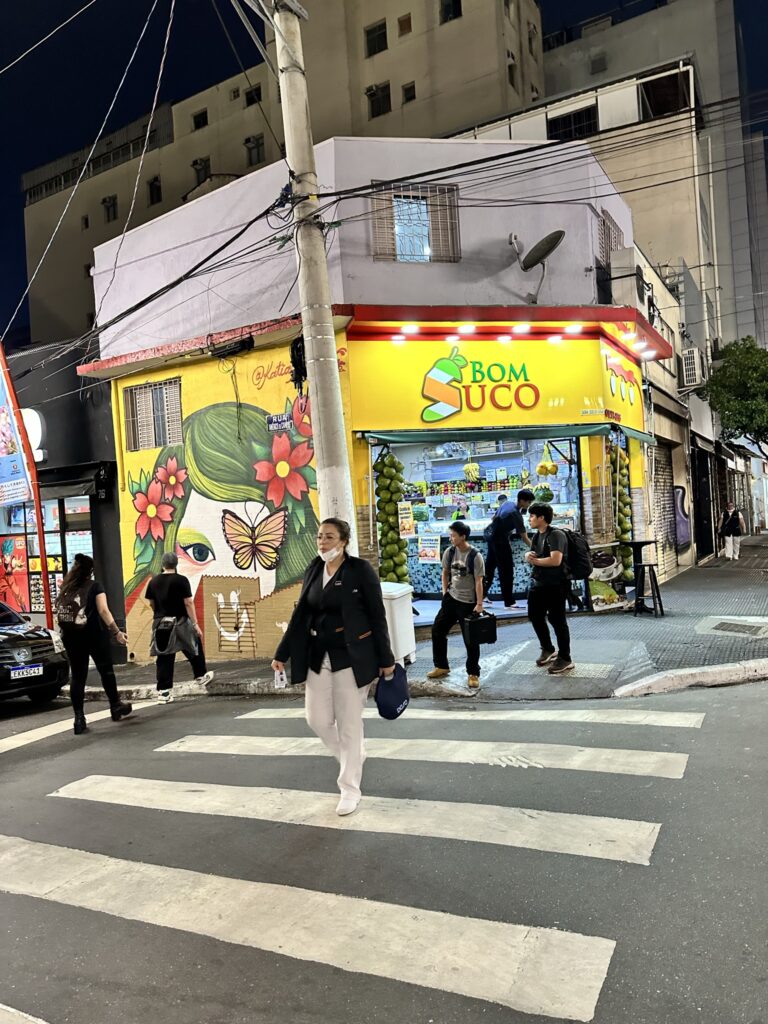
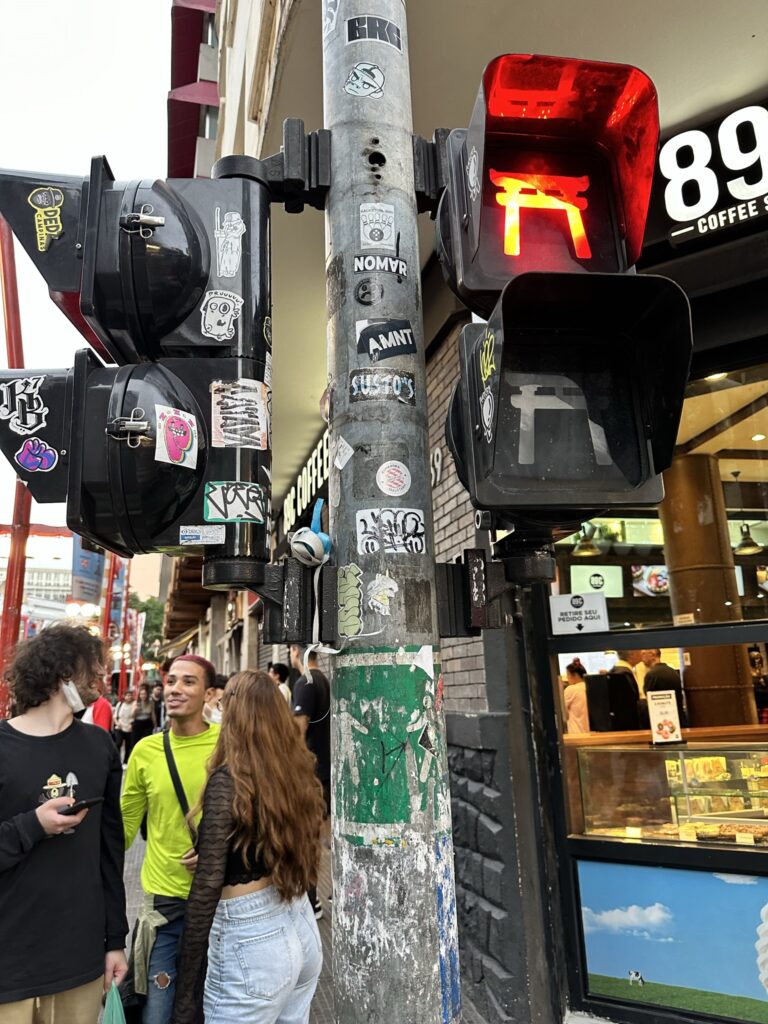
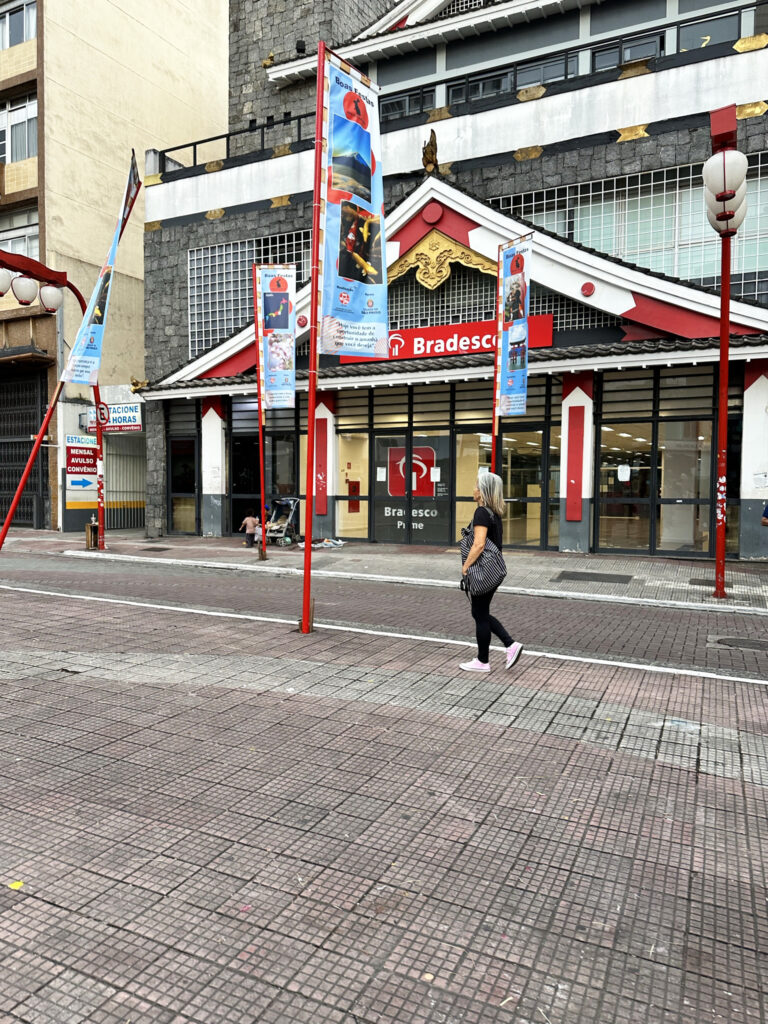

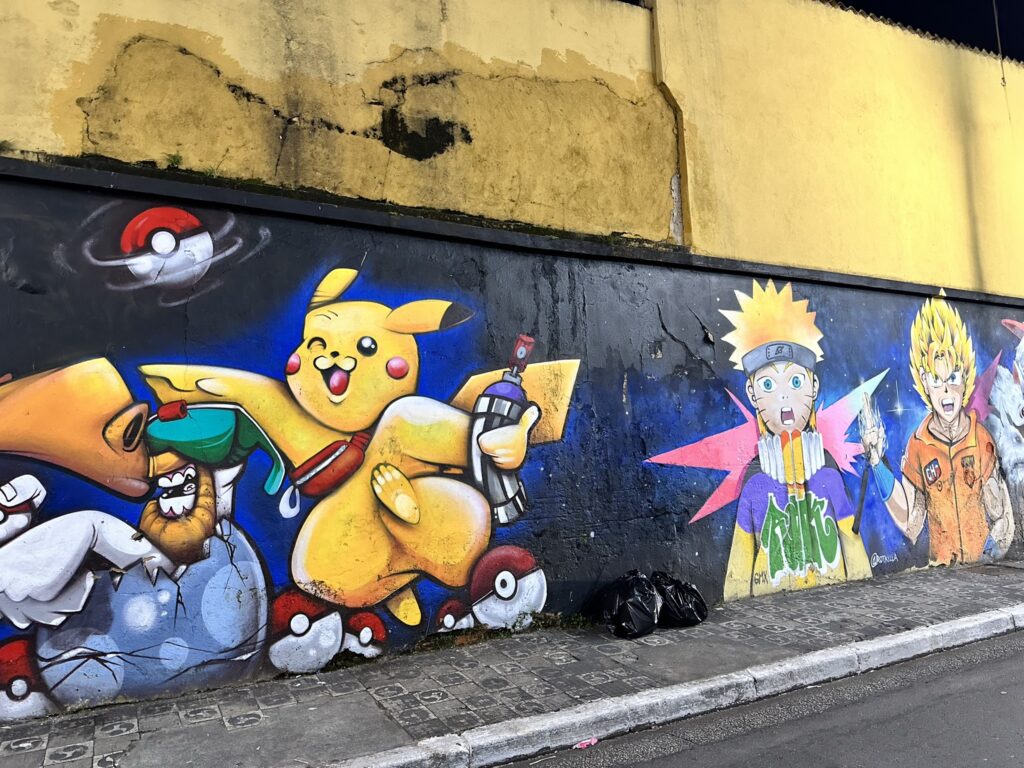
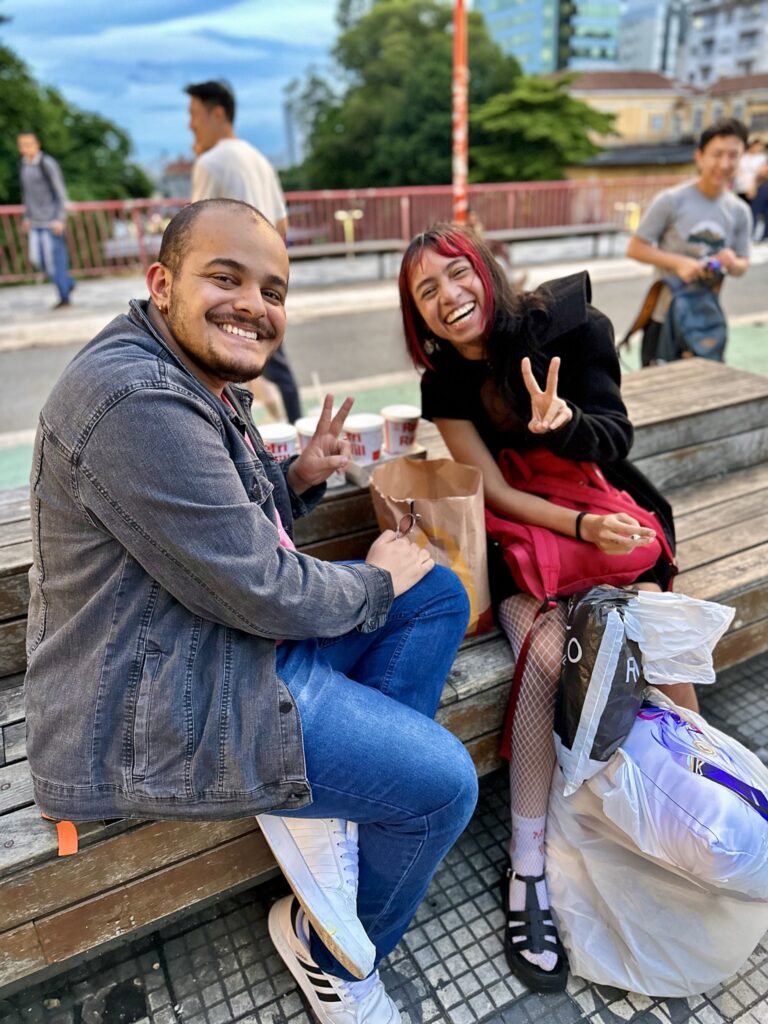
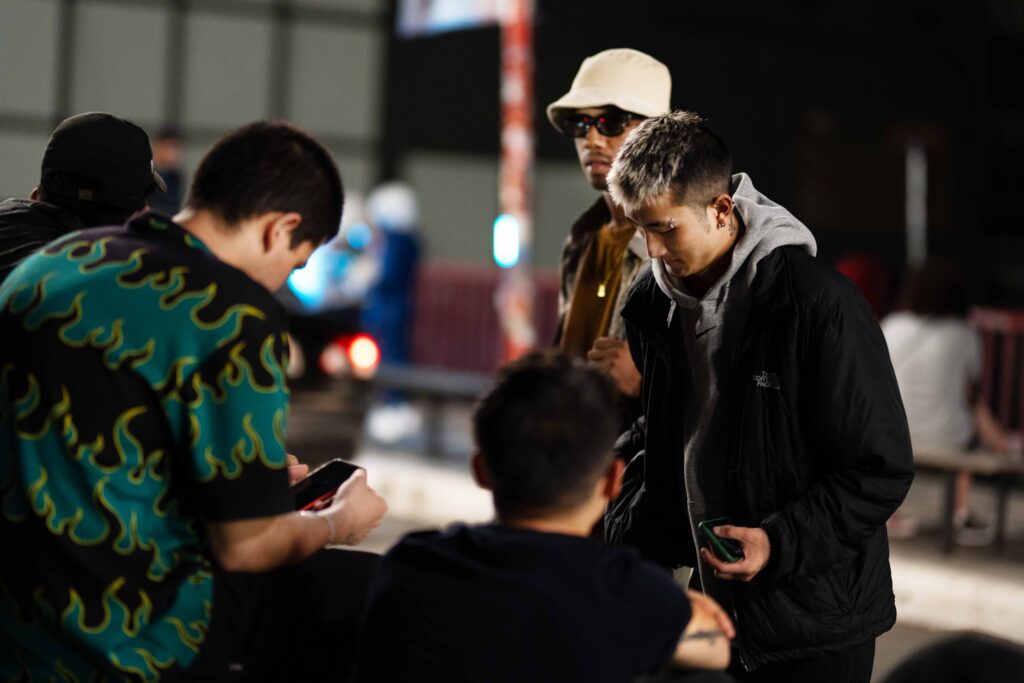
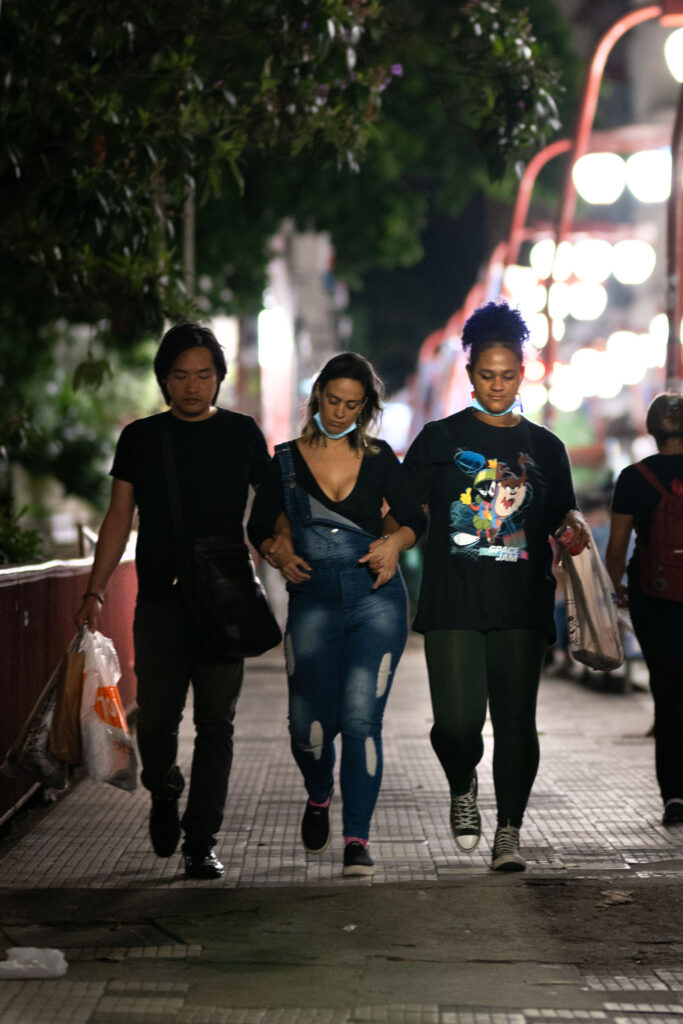



夜ご飯はラーメン!
通訳のナルミさんの友人がやっている店で、とても人気で混んでいました。
日本中のラーメンを研究し、日本のラーメン屋よりも美味しいくらい。
店主の腕には「料理は愛情」のタトゥーが。
ビールも日本の酒酵母を使って作られた地ビールということで、美味しいし細かいところまでこだわりが感じられました。
Ramen for dinner!
The restaurant is run by a friend of Narumi, the interpreter, and was very popular and crowded.
The shop owner researched ramen from all over Japan, and it’s even more delicious than Japanese ramen shops.
The owner has a tattoo on his arm that says “Cooking is love.”
The beer is also a local beer made using Japanese sake yeast, so it was delicious and I could feel the attention to detail.
晚餐吃拉面!
这家餐厅是由翻译鸣海的朋友经营的,非常受欢迎,人头攒动。
店主研究了日本各地的拉面,比日本拉面店还要好吃。
店主手臂上有一个纹身,上面写着“烹饪就是爱”。
啤酒也是使用日本清酒酵母酿制的当地啤酒,所以很美味,也能感受到对细节的关注。
サンパウロの街歩きの様子をYouTubeで公開していますので、そちらもぜひご覧ください。
※全ての動画は、リンク一覧のページにまとめています。
We have posted videos of us walking around Sao Paulo on YouTube, so please take a look there as well.
*All videos are summarized on the link list page.
我们在 YouTube 上发布了我们在圣保罗散步的视频,所以也请观看一下。
*所有视频均汇总在链接列表页面上。
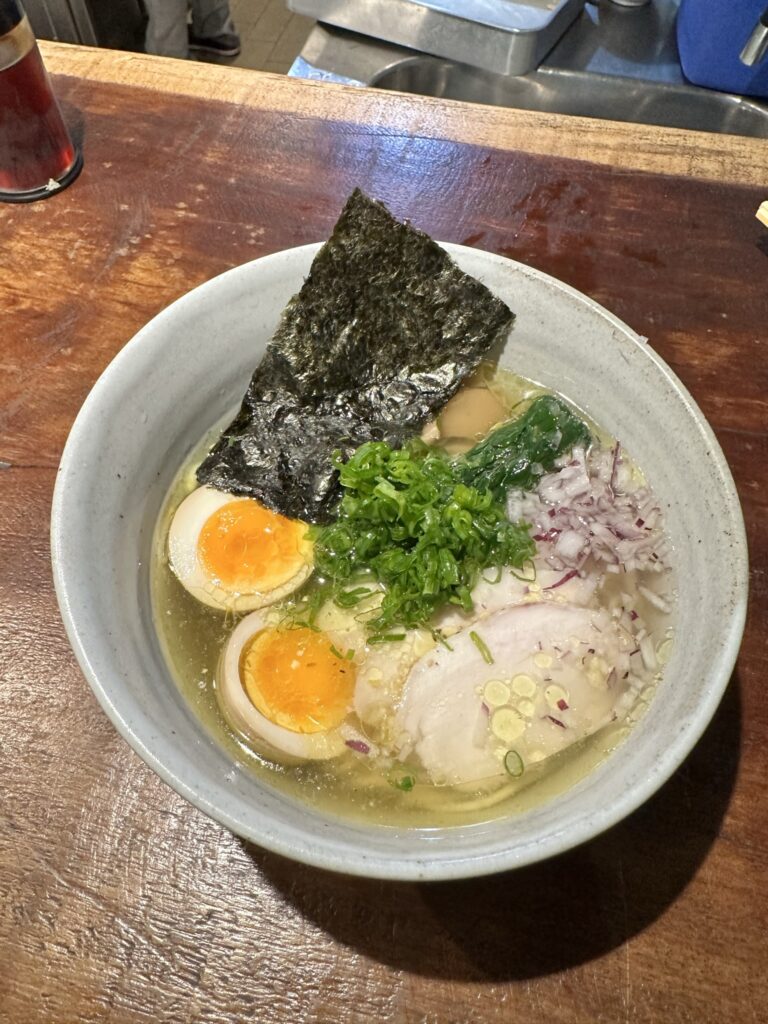
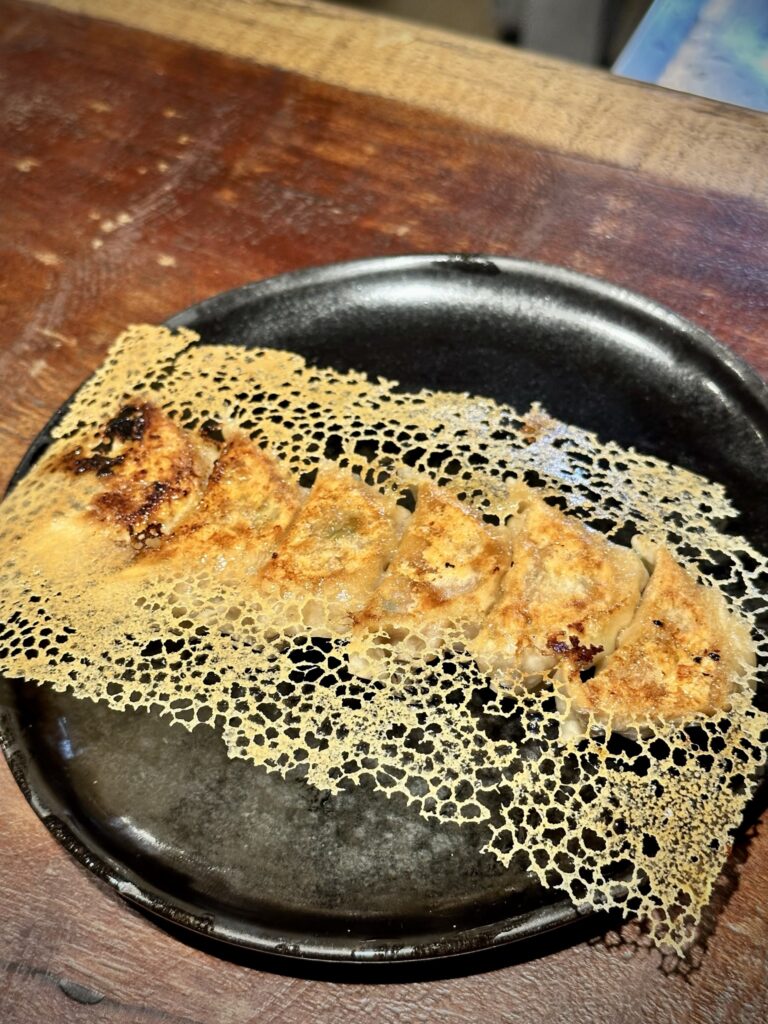
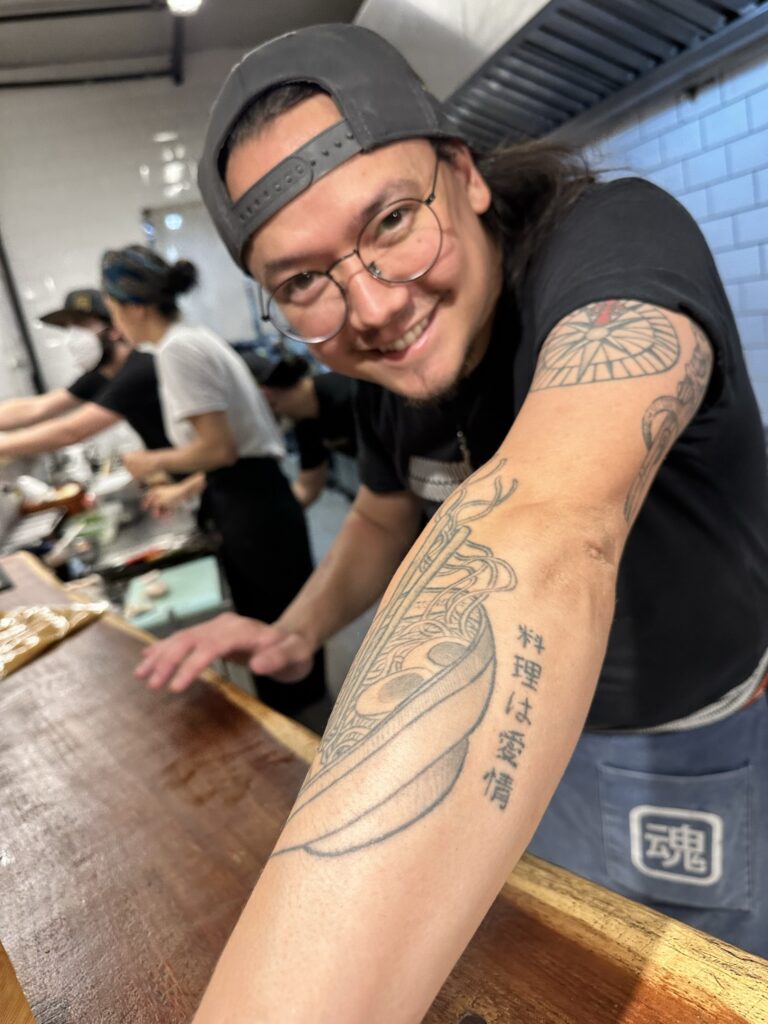
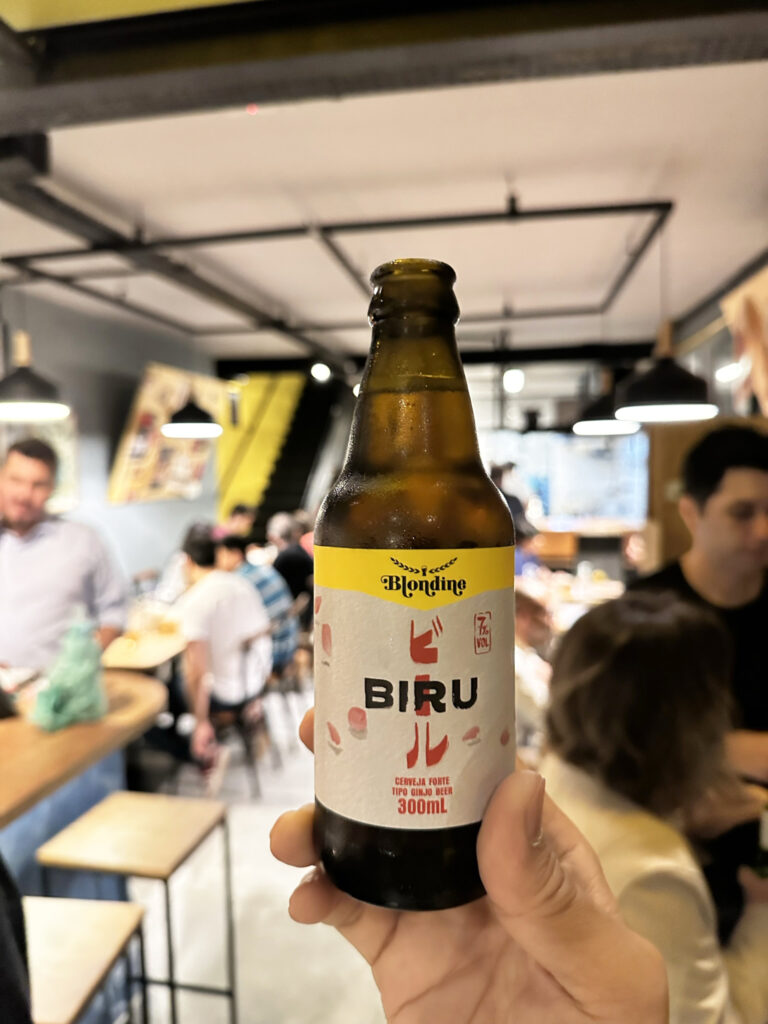
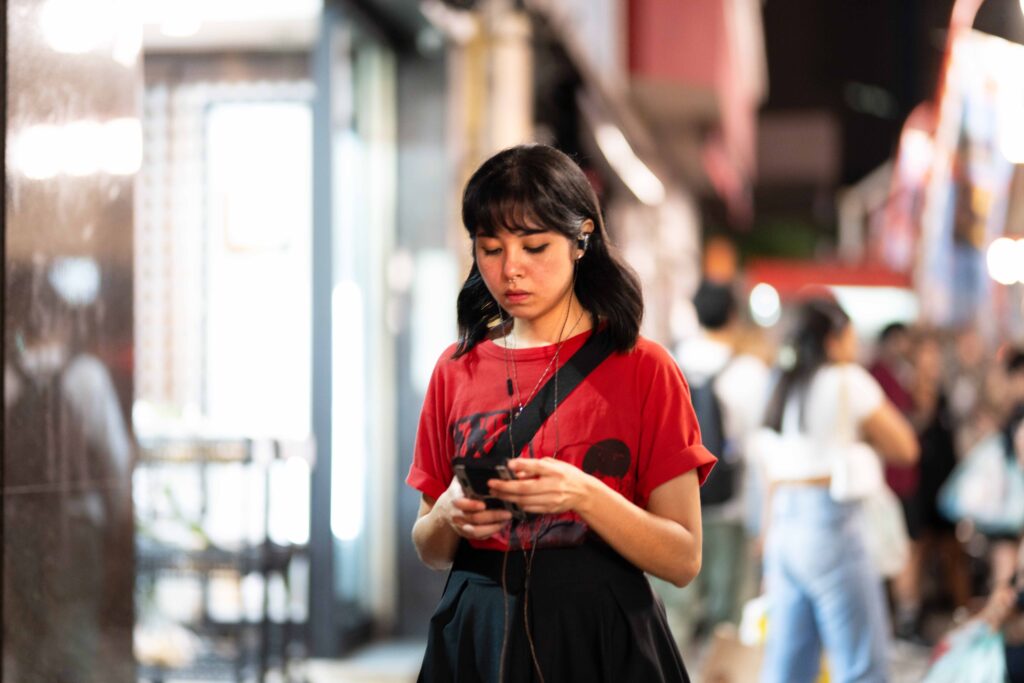
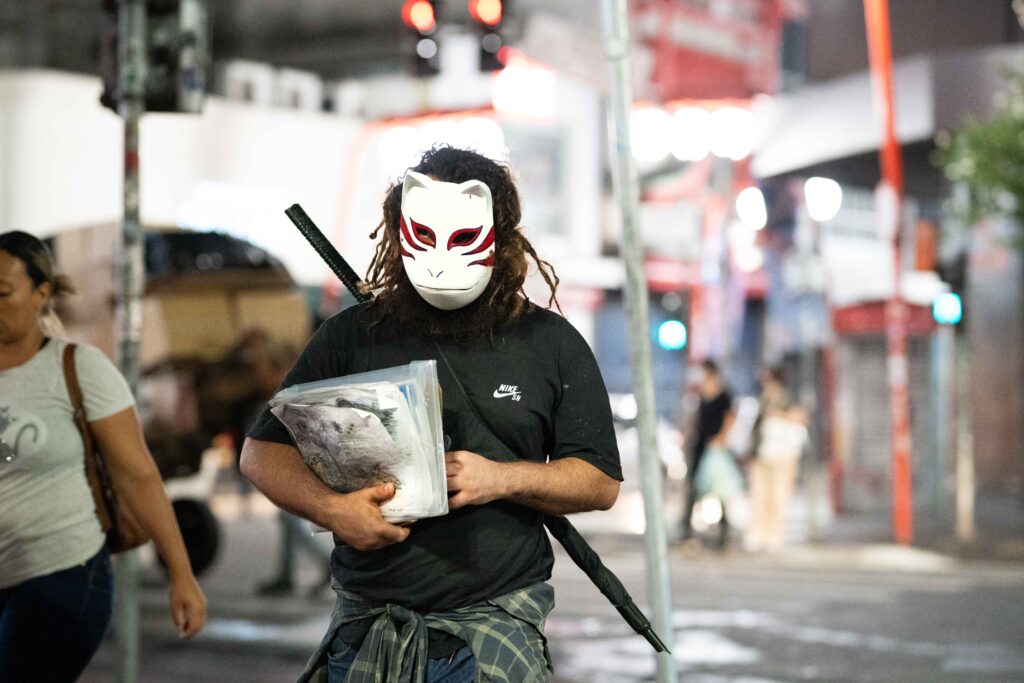
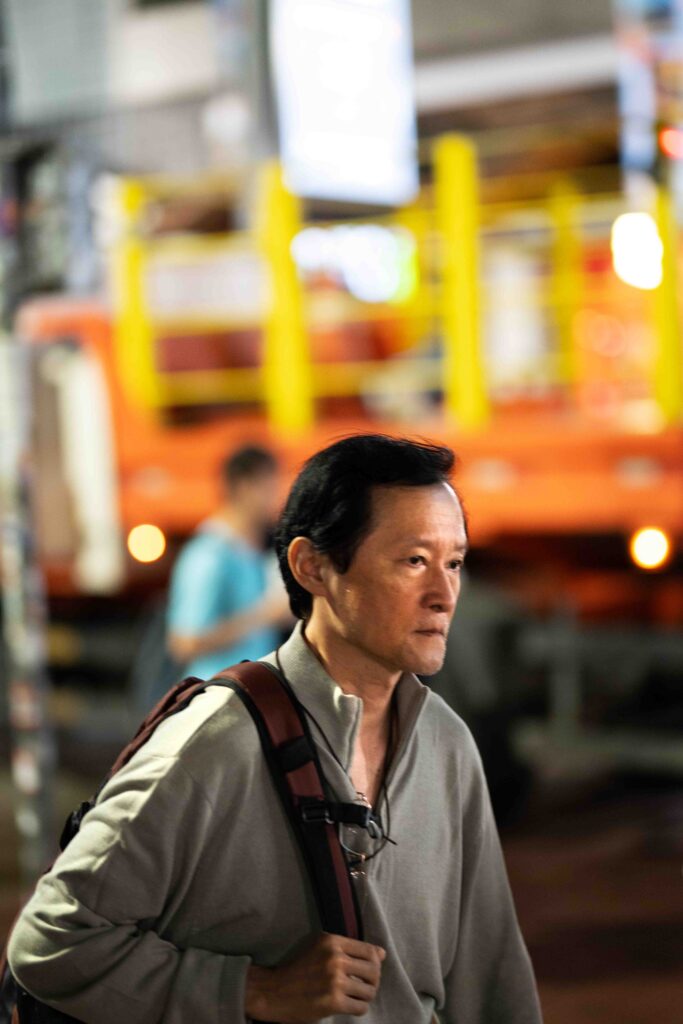
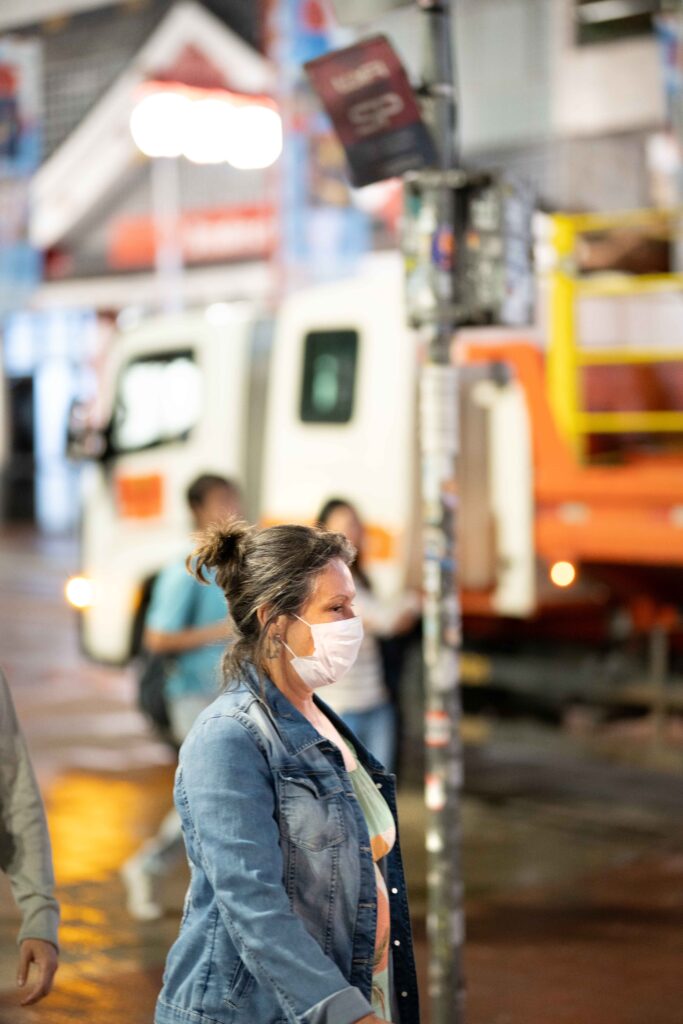

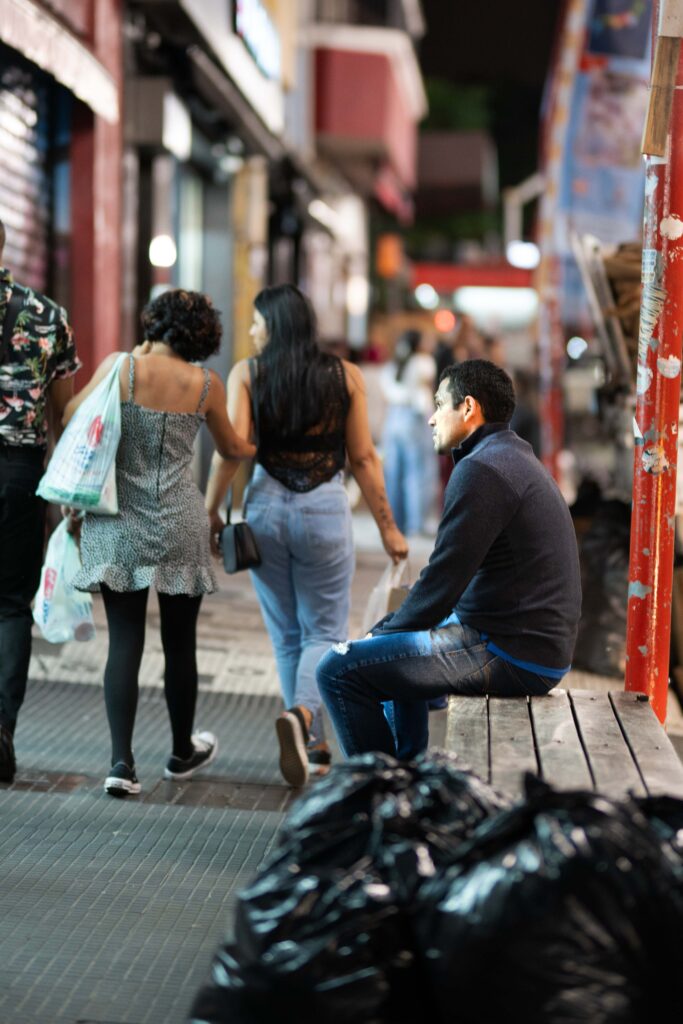

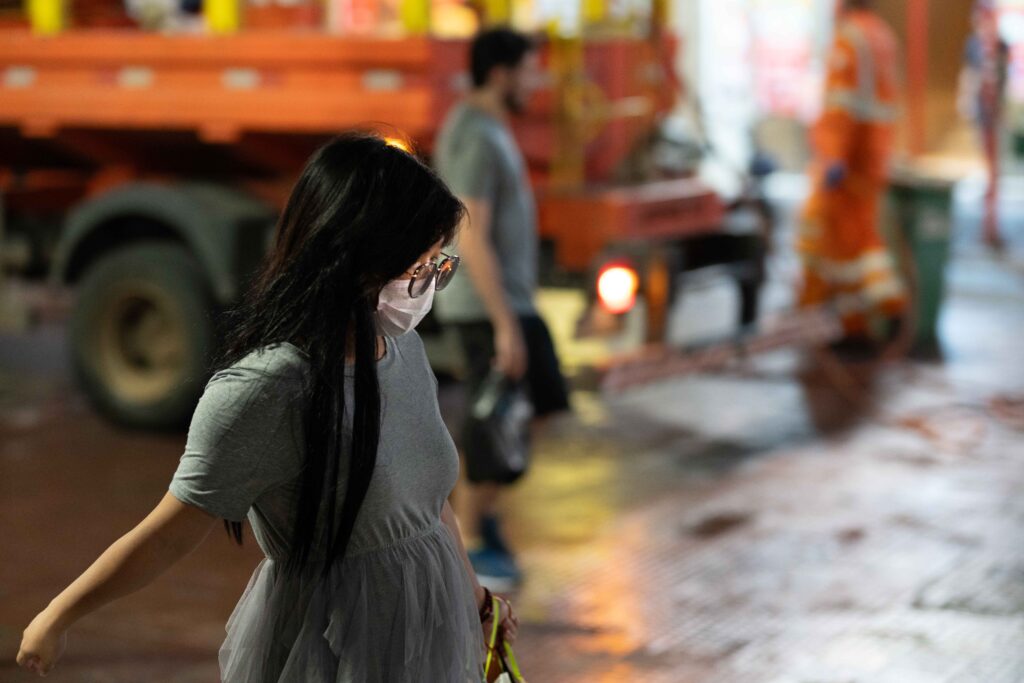
ブラジルにいる間、何度も「サウダージ」(saudade)という言葉を耳にしました。
日本語にはない言葉なので訳すのが難しいらしいのですが、簡単にいうと哀愁や郷愁、憧憬、思慕、切なさというふうに説明される言
葉のようです。
ブラジルの人は色々なところで「サウダージ」を表現として使うようなのですが、その意味は奥深いというか、奥深いことが「サウダージ」ともいえるのか、とても感慨深い言葉でした。
一日中昭和歌謡が流れているマスジさんのお宅や、日本人の心のよりどころとなってきて、今はミックスの若い子たちが友達同士で遊びにくるリベルダージの町など、、。
そんな日系ブラジル人の文化に初めて触れて、その日本に対する懐かしさ、憧れなどにも「サウダージ」を感じました。
ブラジルというと、サンバとか、陽気な感じのイメージしかなかったのですが、実際にボクが出会ったブラジル人は人種を問わず、思慮深く、物静かな人が多い印象でした。
陽気な気質の根底には「サウダージ」があって、それは日本人にとっても結構身近な感情なんではないでしょうか。
日本の詫び寂びにも通じる 静かな物悲しさを含んだ言葉を実感する一日でした。
While in Brazil, I heard the word “saudade” many times.
It seems that it is difficult to translate because it is a word that does not exist in Japanese, but to put it simply, it is a word that can be explained as melancholy, nostalgia, longing, yearning, and sadness.
Brazilian people seem to use the word “saudade” as an expression in many places, and I was very moved by the word’s deep meaning.
Masuji’s house where Showa songs are played all day long, and the town of Liberdade, which has become a stronghold of the Japanese people’s hearts and where young mixed-race kids come to hang out with their friends.
When I encountered the culture of Japanese Brazilians for the first time, I felt a sense of “saudade” in their nostalgia and admiration for Japan.
When I think of Brazil, I only had images of samba and cheerful vibes, but in reality, the Brazilians I met, regardless of race, seemed to be mostly thoughtful and quiet people.
At the root of this cheerful disposition is a sense of saudade, which I think is a feeling that is quite familiar to Japanese people.
It was a day where I realized that the words contain a quiet melancholy that is similar to the Japanese “wabi” and “sabi”.
在巴西时,我多次听到“saudade”这个词。
看起来很难翻译,因为这个词在日语中不存在,但简单来说,它是一个可以解释为忧郁、怀旧、渴望、向往、悲伤的词。
巴西人似乎在很多地方都用“saudade”这个词作为表达方式,我被这个词的深层含义所感动。
整天播放昭和歌的增司家,以及已成为日本人心中据点、年轻的混血孩子与朋友们一起闲逛的自由镇。
当我第一次接触日本巴西人的文化时,我感受到了他们对日本的怀念和钦佩中的“saudade”感。
当我想到巴西时,我的脑海里只有桑巴舞和欢快的氛围,但实际上,我遇到的巴西人,无论种族,似乎大多都是有思想、安静的人。
这种开朗性格的根源是一种saudade感,我认为这种感觉对于日本人来说是很熟悉的。
就在这一天,我意识到这些词中蕴含着一种安静的忧郁,类似于日语中的“侘”和“寂”。

ピンバック: 【旅行記】ブラジル ビカクシダ レジェンドをめぐる旅 & ペルー 原種をめぐる旅 ビカクシダ アンディナム リンク一覧 - vandaka plants バンダカプランツ
ピンバック: 【旅行記】ブラジル ビカクシダ レジェンドをめぐる旅 2日目 - vandaka plants バンダカプランツ